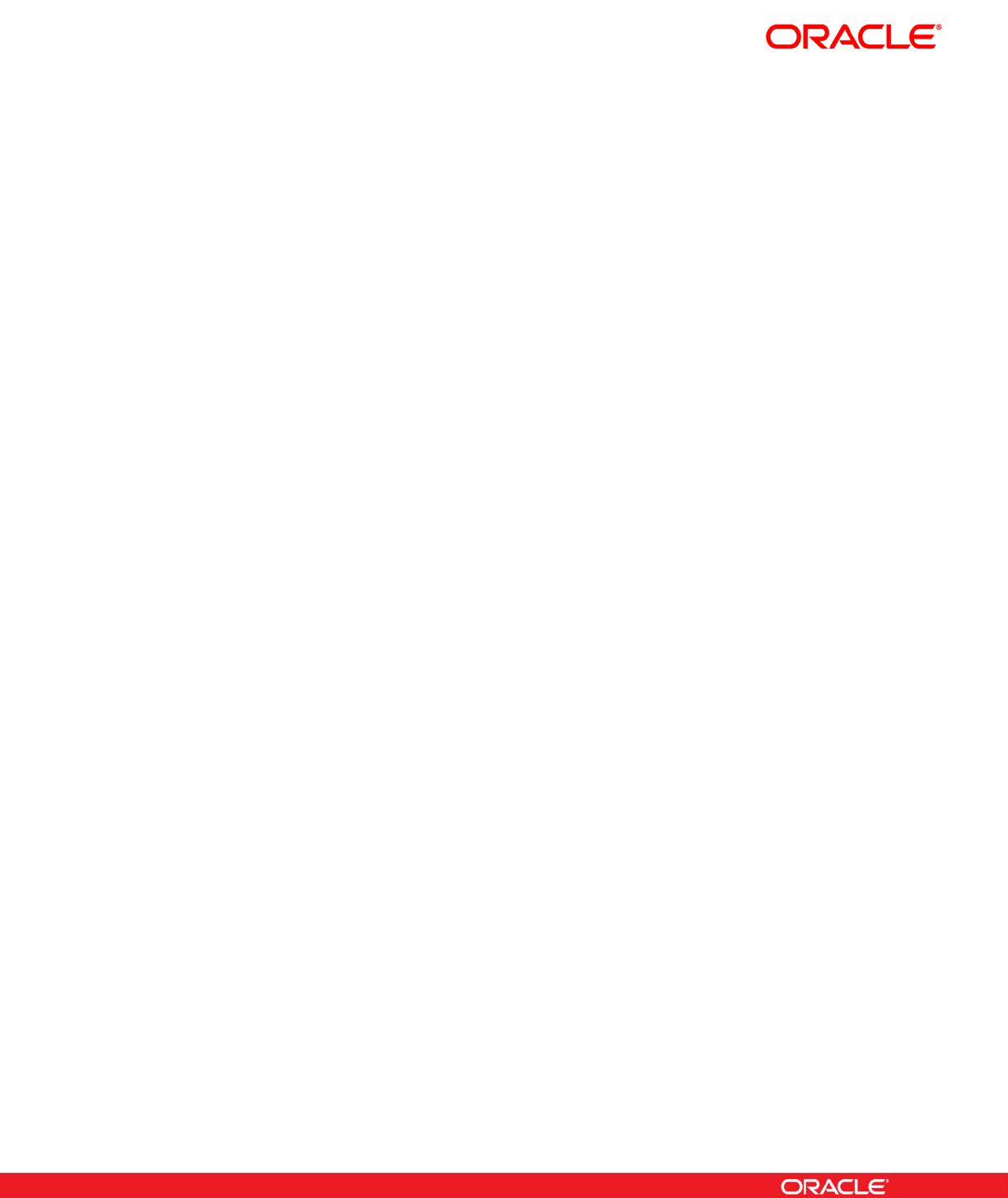
Start
Oracle® Documaker
Working with XML Files
User Guide
12.6.0
Part number: E87307_01
May 2017
Copyright © 2009, 2017, Oracle and/or its affiliates. All rights reserved.
The Programs (which include both the software and documentation) contain proprietary information; they are provided under a license
agreement containing restrictions on use and disclosure and are also protected by copyright, patent, and other intellectual and industrial
property laws. Reverse engineering, disassembly, or decompilation of the Programs, except to the extent required to obtain
interoperability with other independently created software or as specified by law, is prohibited.
The information contained in this document is subject to change without notice. If you find any problems in the documentation, please
report them to us in writing. This document is not warranted to be error-free. Except as may be expressly permitted in your license
agreement for these Programs, no part of these Programs may be reproduced or transmitted in any form or by any means, electronic or
mechanical, for any purpose.
If the Programs are delivered to the United States Government or anyone licensing or using the Programs on behalf of the United States
Government, the following notice is applicable:
U.S. GOVERNMENT RIGHTS
Programs, software, databases, and related documentation and technical data delivered to U.S. Government customers are "commercial
computer software" or "commercial technical data" pursuant to the applicable Federal Acquisition Regulation and agency-specific
supplemental regulations. As such, use, duplication, disclosure, modification, and adaptation of the Programs, including documentation
and technical data, shall be subject to the licensing restrictions set forth in the applicable Oracle license agreement, and, to the extent
applicable, the additional rights set forth in FAR 52.227-19, Commercial Computer Software--Restricted Rights (June 1987). Oracle
USA, Inc., 500 Oracle Parkway, Redwood City, CA 94065.
The Programs are not intended for use in any nuclear, aviation, mass transit, medical, or other inherently dangerous applications. It shall
be the licensee's responsibility to take all appropriate fail-safe, backup, redundancy and other measures to ensure the safe use of such
applications if the Programs are used for such purposes, and we disclaim liability for any damages caused by such use of the Programs.
The Programs may provide links to Web sites and access to content, products, and services from third parties. Oracle is not responsible
for the availability of, or any content provided on, third-party Web sites. You bear all risks associated with the use of such content. If
you choose to purchase any products or services from a third party, the relationship is directly between you and the third party. Oracle is
not responsible for: (a) the quality of third-party products or services; or (b) fulfilling any of the terms of the agreement with the third
party, including delivery of products or services and warranty obligations related to purchased products or services. Oracle is not
responsible for any loss or damage of any sort that you may incur from dealing with any third party.
Oracle, JD Edwards, and PeopleSoft are registered trademarks of Oracle Corporation and/or its affiliates. Other names may be
trademarks of their respective owners.
Notice

THIRD PARTY SOFTWARE NOTICES
This product includes software developed by Apache Software Foundation (http://www.apache.org/).
THIS SOFTWARE IS PROVIDED "AS IS" AND ANY EXPRESS OR IMPLIED WARRANTIES, INCLUDING, BUT NOT
LIMITED TO, THE IMPLIED WARRANTIES OF MERCHANTABILITY AND FITNESS FOR A PARTICULAR PURPOSE
ARE DISCLAIMED. IN NO EVENT SHALL THE AUTHOR OR CONTRIBUTORS BE LIABLE FOR ANY DIRECT,
INDIRECT, INCIDENTAL, SPECIAL, EXEMPLARY, OR CONSEQUENTIAL DAMAGES (INCLUDING, BUT NOT
LIMITED TO, PROCUREMENT OF SUBSTITUTE GOODS OR SERVICES; LOSS OF USE, DATA, OR PROFITS; OR
BUSINESS INTERRUPTION) HOWEVER CAUSED AND ON ANY THEORY OF LIABILITY, WHETHER IN CONTRACT,
STRICT LIABILITY, OR TORT (INCLUDING NEGLIGENCE OR OTHERWISE) ARISING IN ANY WAY OUT OF THE
USE OF THIS SOFTWARE, EVEN IF ADVISED OF THE POSSIBILITY OF SUCH DAMAGE.
Copyright © 2000-2009 The Apache Software Foundation. All rights reserved.
Apache Commons Math Copyright 2001-2008 The Apache Software Foundation
This product includes software translated from the odex Fortran routine developed by E. Hairer and G. Wanner and distributed
under the following license:
Copyright (c) 2004, Ernst Hairer
Apache License Version 2.0, January 2004 (http://www.apache.org/licenses/LICENSE-2.0)
THIS SOFTWARE IS PROVIDED "AS IS'' AND ANY EXPRESSED OR IMPLIED WARRANTIES, INCLUDING, BUT NOT
LIMITED TO, THE IMPLIED WARRANTIES OF MERCHANTABILITY AND FITNESS FOR A PARTICULAR PURPOSE
ARE DISCLAIMED. IN NO EVENT SHALL THE VISIGOTH SOFTWARE SOCIETY OR ITS CONTRIBUTORS BE
LIABLE FOR ANY DIRECT, INDIRECT, INCIDENTAL, SPECIAL, EXEMPLARY, OR CONSEQUENTIAL DAMAGES
(INCLUDING, BUT NOT LIMITED TO, PROCUREMENT OF SUBSTITUTE GOODS OR SERVICES; LOSS OF USE,
DATA, OR PROFITS; OR BUSINESS INTERRUPTION) HOWEVER CAUSED AND ON ANY THEORY OF LIABILITY,
WHETHER IN CONTRACT, STRICT LIABILITY, OR TORT (INCLUDING NEGLIGENCE OR OTHERWISE) ARISING IN
ANY WAY OUT OF THE USE OF THIS SOFTWARE, EVEN IF ADVISED OF THE POSSIBILITY OF SUCH DAMAGE.
Apache Commons Codec Copyright 2002-2009 The Apache Software Foundation
Copyright (C) 2002 Kevin Atkinson ([email protected])
Apache Commons Pool
Copyright 2001-2011 The Apache Software Foundation
Apache Jakarta Commons Lang
Copyright 2001-2007 The Apache Software Foundation
Apache Jakarta Commons FileUpload
Copyright 2002-2006 The Apache Software Foundation
Apache Commons CLI
Copyright 2001-2009 The Apache Software Foundation
Apache Commons Collections
Copyright 2001-2008 The Apache Software Foundation
Apache Commons Logging
Copyright 2003-2013 The Apache Software Foundation
Barcode4J
Copyright 2002-2010 Jeremias Märki
Copyright 2005-2006 Dietmar Bürkle
Portions of this software were contributed under section 5 of the
Apache License. Contributors are listed under: (http://barcode4j.sourceforge.net/contributors.html)

Copyright 2002-2010 The Apache Software Foundation
This product includes software distributed via the Berkeley Software Distribution (BSD) and licensed for binary distribution
under the Generic BSD license.
THIS SOFTWARE IS PROVIDED BY THE COPYRIGHT HOLDERS AND CONTRIBUTORS ``AS IS'' AND ANY EXPRESS
OR IMPLIED WARRANTIES, INCLUDING, BUT NOT LIMITED TO, THE IMPLIED WARRANTIES OF
MERCHANTABILITY AND FITNESS FOR A PARTICULAR PURPOSE ARE DISCLAIMED. IN NO EVENT SHALL THE
COPYRIGHT OWNER OR CONTRIBUTORS BE LIABLE FOR ANY DIRECT, INDIRECT, INCIDENTAL, SPECIAL,
EXEMPLARY, OR CONSEQUENTIAL DAMAGES (INCLUDING, BUT NOT LIMITED TO, PROCUREMENT OF
SUBSTITUTE GOODS OR SERVICES; LOSS OF USE, DATA, OR PROFITS; OR BUSINESS INTERRUPTION) HOWEVER
CAUSED AND ON ANY THEORY OF LIABILITY, WHETHER IN CONTRACT, STRICT LIABILITY, OR TORT
(INCLUDING NEGLIGENCE OR OTHERWISE) ARISING IN ANY WAY OUT OF THE USE OF THIS SOFTWARE, EVEN
IF ADVISED OF THE POSSIBILITY OF SUCH DAMAGE.
Copyright © 2009, Berkeley Software Distribution (BSD)
This product includes software developed by the JDOM Project (http://www.jdom.org/).
THIS SOFTWARE IS PROVIDED ``AS IS'' AND ANY EXPRESSED OR IMPLIED WARRANTIES, INCLUDING, BUT NOT
LIMITED TO, THE IMPLIED WARRANTIES OF MERCHANTABILITY AND FITNESS FOR A PARTICULAR PURPOSE
ARE DISCLAIMED. IN NO EVENT SHALL THE JDOM AUTHORS OR THE PROJECT CONTRIBUTORS BE LIABLE
FOR ANY DIRECT, INDIRECT, INCIDENTAL, SPECIAL, EXEMPLARY, OR CONSEQUENTIAL DAMAGES
(INCLUDING, BUT NOT LIMITED TO, PROCUREMENT OF SUBSTITUTE GOODS OR SERVICES; LOSS OF USE,
DATA, OR PROFITS; OR BUSINESS INTERRUPTION) HOWEVER CAUSED AND ON ANY THEORY OF LIABILITY,
WHETHER IN CONTRACT, STRICT LIABILITY, OR TORT (INCLUDING NEGLIGENCE OR OTHERWISE) ARISING IN
ANY WAY OUT OF THE USE OF THIS SOFTWARE, EVEN IF ADVISED OF THE POSSIBILITY OF SUCH DAMAGE.
Copyright (C) 2000-2004 Jason Hunter & Brett McLaughlin. All rights reserved.
This product includes software developed by the Massachusetts Institute of Technology (MIT).
THE SOFTWARE IS PROVIDED "AS IS", WITHOUT WARRANTY OF ANY KIND, EXPRESS OR IMPLIED, INCLUDING
BUT NOT LIMITED TO THE WARRANTIES OF MERCHANTABILITY, FITNESS FOR A PARTICULAR PURPOSE AND
NONINFRINGEMENT. IN NO EVENT SHALL THE AUTHORS OR COPYRIGHT HOLDERS BE LIABLE FOR ANY
CLAIM, DAMAGES OR OTHER LIABILITY, WHETHER IN AN ACTION OF CONTRACT, TORT OR OTHERWISE,
ARISING FROM, OUT OF OR IN CONNECTION WITH THE SOFTWARE OR THE USE OR OTHER DEALINGS IN THE
SOFTWARE.
Copyright © 2009 MIT
This product includes software developed by Jean-loup Gailly and Mark Adler. This software is provided 'as-is', without any
express or implied warranty. In no event will the authors be held liable for any damages arising from the use of this software.
Copyright (c) 1995-2005 Jean-loup Gailly and Mark Adler
This software is based in part on the work of the Independent JPEG Group (http://www.ijg.org/).
This product includes software developed by the Dojo Foundation (http://dojotoolkit.org).
THIS SOFTWARE IS PROVIDED BY THE COPYRIGHT HOLDERS AND CONTRIBUTORS "AS IS" AND ANY EXPRESS
OR IMPLIED WARRANTIES, INCLUDING, BUT NOT LIMITED TO, THE IMPLIED WARRANTIES OF
MERCHANTABILITY AND FITNESS FOR A PARTICULAR PURPOSE ARE DISCLAIMED. IN NO EVENT SHALL THE
COPYRIGHT OWNER OR CONTRIBUTORS BE LIABLE FOR ANY DIRECT, INDIRECT, INCIDENTAL, SPECIAL,
EXEMPLARY, OR CONSEQUENTIAL DAMAGES (INCLUDING, BUT NOT LIMITED TO, PROCUREMENT OF
SUBSTITUTE GOODS OR SERVICES; LOSS OF USE, DATA, OR PROFITS; OR BUSINESS INTERRUPTION) HOWEVER

CAUSED AND ON ANY THEORY OF LIABILITY, WHETHER IN CONTRACT, STRICT LIABILITY, OR TORT
(INCLUDING NEGLIGENCE OR OTHERWISE) ARISING IN ANY WAY OUT OF THE USE OF THIS SOFTWARE, EVEN
IF ADVISED OF THE POSSIBILITY OF SUCH DAMAGE.
Copyright (c) 2005-2009, The Dojo Foundation. All rights reserved.
This product includes software developed by W3C.
Copyright © 2009 World Wide Web Consortium, (Massachusetts Institute of Technology, Institut National de Recherche en
Informatique et en Automatique, Keio University). All Rights Reserved. (http://www.w3.org/Consortium/Legal/)
This product includes software developed by Mathew R. Miller (http://www.bluecreststudios.com).
Copyright (c) 1999-2002 ComputerSmarts. All rights reserved.
This product includes software developed by Shaun Wilde and distributed via Code Project Open License (http://
www.codeproject.com).
THIS WORK IS PROVIDED "AS IS", "WHERE IS" AND "AS AVAILABLE", WITHOUT ANY EXPRESS OR IMPLIED
WARRANTIES OR CONDITIONS OR GUARANTEES. YOU, THE USER, ASSUME ALL RISK IN ITS USE, INCLUDING
COPYRIGHT INFRINGEMENT, PATENT INFRINGEMENT, SUITABILITY, ETC. AUTHOR EXPRESSLY DISCLAIMS
ALL EXPRESS, IMPLIED OR STATUTORY WARRANTIES OR CONDITIONS, INCLUDING WITHOUT LIMITATION,
WARRANTIES OR CONDITIONS OF MERCHANTABILITY, MERCHANTABLE QUALITY OR FITNESS FOR A
PARTICULAR PURPOSE, OR ANY WARRANTY OF TITLE OR NON-INFRINGEMENT, OR THAT THE WORK (OR ANY
PORTION THEREOF) IS CORRECT, USEFUL, BUG-FREE OR FREE OF VIRUSES. YOU MUST PASS THIS
DISCLAIMER ON WHENEVER YOU DISTRIBUTE THE WORK OR DERIVATIVE WORKS.
This product includes software developed by Chris Maunder and distributed via Code Project Open License (http://
www.codeproject.com).
THIS WORK IS PROVIDED "AS IS", "WHERE IS" AND "AS AVAILABLE", WITHOUT ANY EXPRESS OR IMPLIED
WARRANTIES OR CONDITIONS OR GUARANTEES. YOU, THE USER, ASSUME ALL RISK IN ITS USE, INCLUDING
COPYRIGHT INFRINGEMENT, PATENT INFRINGEMENT, SUITABILITY, ETC. AUTHOR EXPRESSLY DISCLAIMS
ALL EXPRESS, IMPLIED OR STATUTORY WARRANTIES OR CONDITIONS, INCLUDING WITHOUT LIMITATION,
WARRANTIES OR CONDITIONS OF MERCHANTABILITY, MERCHANTABLE QUALITY OR FITNESS FOR A
PARTICULAR PURPOSE, OR ANY WARRANTY OF TITLE OR NON-INFRINGEMENT, OR THAT THE WORK (OR ANY
PORTION THEREOF) IS CORRECT, USEFUL, BUG-FREE OR FREE OF VIRUSES. YOU MUST PASS THIS
DISCLAIMER ON WHENEVER YOU DISTRIBUTE THE WORK OR DERIVATIVE WORKS.
This product includes software developed by PJ Arends and distributed via Code Project Open License (http://
www.codeproject.com).
THIS WORK IS PROVIDED "AS IS", "WHERE IS" AND "AS AVAILABLE", WITHOUT ANY EXPRESS OR IMPLIED
WARRANTIES OR CONDITIONS OR GUARANTEES. YOU, THE USER, ASSUME ALL RISK IN ITS USE, INCLUDING
COPYRIGHT INFRINGEMENT, PATENT INFRINGEMENT, SUITABILITY, ETC. AUTHOR EXPRESSLY DISCLAIMS
ALL EXPRESS, IMPLIED OR STATUTORY WARRANTIES OR CONDITIONS, INCLUDING WITHOUT LIMITATION,
WARRANTIES OR CONDITIONS OF MERCHANTABILITY, MERCHANTABLE QUALITY OR FITNESS FOR A
PARTICULAR PURPOSE, OR ANY WARRANTY OF TITLE OR NON-INFRINGEMENT, OR THAT THE WORK (OR ANY
PORTION THEREOF) IS CORRECT, USEFUL, BUG-FREE OR FREE OF VIRUSES. YOU MUST PASS THIS
DISCLAIMER ON WHENEVER YOU DISTRIBUTE THE WORK OR DERIVATIVE WORKS.
This product includes software developed by Erwin Tratar. This source code and all accompanying material is copyright (c) 1998-
1999 Erwin Tratar. All rights reserved.
THIS SOFTWARE IS PROVIDED "AS IS" WITHOUT EXPRESS OR IMPLIED WARRANTY. USE IT AT YOUR OWN
RISK! THE AUTHOR ACCEPTS NO LIABILITY FOR ANY DAMAGE/LOSS OF BUSINESS THAT THIS PRODUCT MAY

CAUSE.
This product includes software developed by Sam Leffler of Silicon Graphics.
THE SOFTWARE IS PROVIDED "AS-IS" AND WITHOUT WARRANTY OF ANY KIND, EXPRESS, IMPLIED OR
OTHERWISE, INCLUDING WITHOUT LIMITATION, ANY WARRANTY OF MERCHANTABILITY OR FITNESS FOR A
PARTICULAR PURPOSE.
IN NO EVENT SHALL SAM LEFFLER OR SILICON GRAPHICS BE LIABLE FOR ANY SPECIAL, INCIDENTAL,
INDIRECT OR CONSEQUENTIAL DAMAGES OF ANY KIND, OR ANY DAMAGES WHATSOEVER RESULTING FROM
LOSS OF USE, DATA OR PROFITS, WHETHER OR NOT ADVISED OF THE POSSIBILITY OF DAMAGE, AND ON ANY
THEORY OF LIABILITY, ARISING OUT OF OR IN CONNECTION WITH THE USE OR PERFORMANCE OF THIS
SOFTWARE
Copyright (c) 1988-1997 Sam Leffler
Copyright (c) 1991-1997 Silicon Graphics, Inc.
This product includes software developed by Guy Eric Schalnat, Andreas Dilger, Glenn Randers-Pehrson (current maintainer),
and others. (http://www.libpng.org)
The PNG Reference Library is supplied "AS IS". The Contributing Authors and Group 42, Inc. disclaim all warranties, expressed
or implied, including, without limitation, the warranties of merchantability and of fitness for any purpose. The Contributing
Authors and Group 42, Inc. assume no liability for direct, indirect, incidental, special, exemplary, or consequential damages,
which may result from the use of the PNG Reference Library, even if advised of the possibility of such damage.
This product includes software components distributed by the Cryptix Foundation.
THIS SOFTWARE IS PROVIDED BY THE CRYPTIX FOUNDATION LIMITED AND CONTRIBUTORS ``AS IS'' AND
ANY EXPRESS OR IMPLIED WARRANTIES, INCLUDING, BUT NOT LIMITED TO, THE IMPLIED WARRANTIES OF
MERCHANTABILITY AND FITNESS FOR A PARTICULAR PURPOSE ARE DISCLAIMED. IN NO EVENT SHALL THE
CRYPTIX FOUNDATION LIMITED OR CONTRIBUTORS BE LIABLE FOR ANY DIRECT, INDIRECT, INCIDENTAL,
SPECIAL, EXEMPLARY, OR CONSEQUENTIAL DAMAGES (INCLUDING, BUT NOT LIMITED TO, PROCUREMENT
OF SUBSTITUTE GOODS OR SERVICES; LOSS OF USE, DATA, OR PROFITS; OR BUSINESS INTERRUPTION)
HOWEVER CAUSED AND ON ANY THEORY OF LIABILITY, WHETHER IN CONTRACT, STRICT LIABILITY, OR
TORT (INCLUDING NEGLIGENCE OR OTHERWISE) ARISING IN ANY WAY OUT OF THE USE OF THIS SOFTWARE,
EVEN IF ADVISED OF THE POSSIBILITY OF SUCH DAMAGE
Copyright © 1995-2005 The Cryptix Foundation Limited. All rights reserved.
This product includes software components distributed by Sun Microsystems.
This software is provided "AS IS," without a warranty of any kind. ALLEXPRESS OR IMPLIED CONDITIONS,
REPRESENTATIONS AND WARRANTIES, INCLUDING ANYIMPLIED WARRANTY OF MERCHANTABILITY,
FITNESS FOR A PARTICULAR PURPOSE OR NON-INFRINGEMENT, ARE HEREBY EXCLUDED. SUN AND ITS
LICENSORS SHALL NOT BELIABLE FOR ANY DAMAGES SUFFERED BY LICENSEE AS A RESULT OF USING,
MODIFYING OR DISTRIBUTING THE SOFTWARE OR ITS DERIVATIVES. IN NO EVENT WILL SUN OR ITS
LICENSORS BE LIABLE FOR ANY LOST REVENUE, PROFIT OR DATA, OR FOR DIRECT, INDIRECT, SPECIAL,
CONSEQUENTIAL, INCIDENTAL OR PUNITIVE DAMAGES, HOWEVER CAUSED AND REGARDLESS OF THE
THEORY OF LIABILITY, ARISING OUT OF THE USE OF OR INABILITY TO USE SOFTWARE, EVEN IF SUN HAS
BEEN ADVISED OF THE POSSIBILITY OF SUCH DAMAGES.
Copyright (c) 1998 Sun Microsystems, Inc. All Rights Reserved.
This product includes software components distributed by Dennis M. Sosnoski.
THIS SOFTWARE IS PROVIDED BY THE COPYRIGHT HOLDERS AND CONTRIBUTORS "AS IS'" AND ANY EXPRESS
OR IMPLIED WARRANTIES, INCLUDING, BUT NOT LIMITED TO, THE IMPLIED WARRANTIES OF

MERCHANTABILITY AND FITNESS FOR A PARTICULAR PURPOSE ARE DISCLAIMED. IN NO EVENT SHALL THE
COPYRIGHT OWNER OR CONTRIBUTORS BE LIABLE FOR ANY DIRECT, INDIRECT, INCIDENTAL, SPECIAL,
EXEMPLARY, OR CONSEQUENTIAL DAMAGES (INCLUDING, BUT NOT LIMITED TO, PROCUREMENT OF
SUBSTITUTE GOODS OR SERVICES; LOSS OF USE, DATA, OR PROFITS; OR BUSINESS INTERRUPTION) HOWEVER
CAUSED AND ON ANY THEORY OF LIABILITY, WHETHER IN CONTRACT, STRICT LIABILITY, OR TORT
(INCLUDING NEGLIGENCE OR OTHERWISE) ARISING IN ANY WAY OUT OF THE USE OF THIS SOFTWARE, EVEN
IF ADVISED OF THE POSSIBILITY OF SUCH DAMAGE.
Copyright © 2003-2007 Dennis M. Sosnoski. All Rights Reserved
It also includes materials licensed under Apache 1.1 and the following XPP3 license
THIS SOFTWARE IS PROVIDED "AS IS'" AND ANY EXPRESSED OR IMPLIED WARRANTIES, INCLUDING, BUT NOT
LIMITED TO, THE IMPLIED WARRANTIES OF MERCHANTABILITY AND FITNESS FOR A PARTICULAR PURPOSE
ARE DISCLAIMED. IN NO EVENT SHALL THE COPYRIGHT OWNER OR CONTRIBUTORS BE LIABLE FOR ANY
DIRECT, INDIRECT, INCIDENTAL, SPECIAL, EXEMPLARY, OR CONSEQUENTIAL DAMAGES (INCLUDING, BUT
NOT LIMITED TO, PROCUREMENT OF SUBSTITUTE GOODS OR SERVICES; LOSS OF USE, DATA, OR PROFITS; OR
BUSINESS INTERRUPTION) HOWEVER CAUSED AND ON ANY THEORY OF LIABILITY, WHETHER IN CONTRACT,
STRICT LIABILITY, OR TORT (INCLUDING NEGLIGENCE OR OTHERWISE) ARISING IN ANY WAY OUT OF THE
USE OF THIS SOFTWARE, EVEN IF ADVISED OF THE POSSIBILITY OF SUCH DAMAGE.
Copyright © 2002 Extreme! Lab, Indiana University. All Rights Reserved
This product includes software components distributed by CodeProject. This software contains material that is © 1994-2005 The
Ultimate Toolbox, all rights reserved.
This product includes software components distributed by Geir Landro.
Copyright © 2001-2003 Geir Landro ([email protected]) JavaScript Tree - www.destroydrop.com/hjavascripts/tree/version
0.96
This product includes software components distributed by the Hypersonic SQL Group.
THIS SOFTWARE IS PROVIDED BY THE COPYRIGHT HOLDERS AND CONTRIBUTORS "AS IS'" AND ANY EXPRESS
OR IMPLIED WARRANTIES, INCLUDING, BUT NOT LIMITED TO, THE IMPLIED WARRANTIES OF
MERCHANTABILITY AND FITNESS FOR A PARTICULAR PURPOSE ARE DISCLAIMED. IN NO EVENT SHALL THE
COPYRIGHT OWNER OR CONTRIBUTORS BE LIABLE FOR ANY DIRECT, INDIRECT, INCIDENTAL, SPECIAL,
EXEMPLARY, OR CONSEQUENTIAL DAMAGES (INCLUDING, BUT NOT LIMITED TO, PROCUREMENT OF
SUBSTITUTE GOODS OR SERVICES; LOSS OF USE, DATA, OR PROFITS; OR BUSINESS INTERRUPTION) HOWEVER
CAUSED AND ON ANY THEORY OF LIABILITY, WHETHER IN CONTRACT, STRICT LIABILITY, OR TORT
(INCLUDING NEGLIGENCE OR OTHERWISE) ARISING IN ANY WAY OUT OF THE USE OF THIS SOFTWARE, EVEN
IF ADVISED OF THE POSSIBILITY OF SUCH DAMAGE
Copyright © 1995-2000 by the Hypersonic SQL Group. All Rights Reserved
This product includes software components distributed by the International Business Machines Corporation and others.
THE SOFTWARE IS PROVIDED "AS IS", WITHOUT WARRANTY OF ANY KIND, EXPRESS OR IMPLIED, INCLUDING
BUT NOT LIMITED TO THE WARRANTIES OF MERCHANTABILITY, FITNESS FOR A PARTICULAR PURPOSE AND
NONINFRINGEMENT. IN NO EVENT SHALL THE AUTHORS OR COPYRIGHT HOLDERS BE LIABLE FOR ANY
CLAIM, DAMAGES OR OTHER LIABILITY, WHETHER IN AN ACTION OF CONTRACT, TORT OR OTHERWISE,
ARISING FROM, OUT OF OR IN CONNECTION WITH THE SOFTWARE OR THE USE OR OTHER DEALINGS IN THE
SOFTWARE.
Copyright (c) 1995-2009 International Business Machines Corporation and others. All rights reserved.
This product includes software components distributed by the University of Coimbra.

University of Coimbra distributes this software in the hope that it will be useful but DISCLAIMS ALL WARRANTIES WITH
REGARD TO IT, including all implied warranties of MERCHANTABILITY or FITNESS FOR A PARTICULAR PURPOSE. In
no event shall University of Coimbra be liable for any special, indirect or consequential damages (or any damages whatsoever)
resulting from loss of use, data or profits, whether in an action of contract, negligence or other tortious action, arising out of or in
connection with the use or performance of this software.
Copyright (c) 2000 University of Coimbra, Portugal. All Rights Reserved.
This product includes software components distributed by Steve Souza.
THIS SOFTWARE IS PROVIDED BY THE AUTHOR AND CONTRIBUTORS "AS IS'" AND ANY EXPRESS OR IMPLIED
WARRANTIES, INCLUDING, BUT NOT LIMITED TO, THE IMPLIED WARRANTIES OF MERCHANTABILITY AND
FITNESS FOR A PARTICULAR PURPOSE ARE DISCLAIMED. IN NO EVENT SHALL THE COPYRIGHT OWNER OR
CONTRIBUTORS BE LIABLE FOR ANY DIRECT, INDIRECT, INCIDENTAL, SPECIAL, EXEMPLARY, OR
CONSEQUENTIAL DAMAGES (INCLUDING, BUT NOT LIMITED TO, PROCUREMENT OF SUBSTITUTE GOODS OR
SERVICES; LOSS OF USE, DATA, OR PROFITS; OR BUSINESS INTERRUPTION) HOWEVER CAUSED AND ON ANY
THEORY OF LIABILITY, WHETHER IN CONTRACT, STRICT LIABILITY, OR TORT (INCLUDING NEGLIGENCE OR
OTHERWISE) ARISING IN ANY WAY OUT OF THE USE OF THIS SOFTWARE, EVEN IF ADVISED OF THE
POSSIBILITY OF SUCH DAMAGE.
Copyright © 2002, Steve Souza (admin@jamonapi.com). All Rights Reserved.
This product includes software developed by the OpenSymphony Group (http://www.opensymphony.com/.)"
Copyright © 2001-2004 The OpenSymphony Group. All Rights Reserved.
PANTONE (R) Colors displayed in the software application or in the user documentation may not match PANTONE-identified
standards. Consult current PANTONE Color Publications for accurate color. PANTONE(R) and other Pantone LLC trademarks
are the property of Pantone LLC. (C) Pantone LLC, 2011.
Pantone LLC is the copyright owner of color data and/or software which are licensed to Oracle to distribute for use only in
combination with Oracle Documaker. PANTONE Color Data and/or Software shall not be copied onto another disk or into
memory unless part of the execution of Oracle Documaker.
This product includes software developed by Dave Gamble and distributed via SourceForge.net (http://sourceforge.net/projects/
cjson/)
THE SOFTWARE IS PROVIDED "AS IS", WITHOUT WARRANTY OF ANY KIND, EXPRESS OR IMPLIED, INCLUDING
BUT NOT LIMITED TO THE WARRANTIES OF MERCHANTABILITY, FITNESS FOR A PARTICULAR PURPOSE AND
NONINFRINGEMENT. IN NO EVENT SHALL THE AUTHORS OR COPYRIGHT HOLDERS BE LIABLE FOR ANY
CLAIM, DAMAGES OR OTHER LIABILITY, WHETHER IN AN ACTION OF CONTRACT, TORT OR OTHERWISE,
ARISING FROM, OUT OF OR IN CONNECTION WITH THE SOFTWARE OR THE USE OR OTHER DEALINGS IN THE
SOFTWARE.
Copyright (c) 2009 Dave Gamble
This product includes software developed by the Zxing Project.
THE SOFTWARE IS PROVIDED "AS IS", WITHOUT WARRANTY OF ANY KIND, EXPRESS OR IMPLIED, INCLUDING
BUT NOT LIMITED TO THE WARRANTIES OF MERCHANTABILITY, FITNESS FOR A PARTICULAR PURPOSE AND
NONINFRINGEMENT. IN NO EVENT SHALL THE AUTHORS OR COPYRIGHT HOLDERS BE LIABLE FOR ANY
CLAIM, DAMAGES OR OTHER LIABILITY, WHETHER IN AN ACTION OF CONTRACT, TORT OR OTHERWISE,
ARISING FROM, OUT OF OR IN CONNECTION WITH THE SOFTWARE OR THE USE OR OTHER DEALINGS IN THE
SOFTWARE.
Copyright (c) 2013 Zxing Project (https://github.com/zxing/zxing)

This product includes software developed by the Wintertree software.
THE SOFTWARE IS PROVIDED "AS IS", WITHOUT WARRANTY OF ANY KIND, EXPRESS OR IMPLIED, INCLUDING
BUT NOT LIMITED TO THE WARRANTIES OF MERCHANTABILITY, FITNESS FOR A PARTICULAR PURPOSE AND
NONINFRINGEMENT. IN NO EVENT SHALL THE AUTHORS OR COPYRIGHT HOLDERS BE LIABLE FOR ANY
CLAIM, DAMAGES OR OTHER LIABILITY, WHETHER IN AN ACTION OF CONTRACT, TORT OR OTHERWISE,
ARISING FROM, OUT OF OR IN CONNECTION WITH THE SOFTWARE OR THE USE OR OTHER DEALINGS IN THE
SOFTWARE.
The Sentry Spelling-Checker Engine Copyright (c) 1993 Wintertree (https://wintertree-software.com/dev/ssce/windows/
index.html )
Freemarker Copyright (c) 2003 The Visigoth Software Society. All rights reserved.
THIS SOFTWARE IS PROVIDED "AS IS'' AND ANY EXPRESSED OR IMPLIED WARRANTIES, INCLUDING, BUT NOT
LIMITED TO, THE IMPLIED WARRANTIES OF MERCHANTABILITY AND FITNESS FOR A PARTICULAR PURPOSE
ARE DISCLAIMED. IN NO EVENT SHALL THE VISIGOTH SOFTWARE SOCIETY OR ITS CONTRIBUTORS BE
LIABLE FOR ANY DIRECT, INDIRECT, INCIDENTAL, SPECIAL, EXEMPLARY, OR CONSEQUENTIAL DAMAGES
(INCLUDING, BUT NOT LIMITED TO,PROCUREMENT OF SUBSTITUTE GOODS OR SERVICES; LOSS OF USE,DATA,
OR PROFITS; OR BUSINESS INTERRUPTION) HOWEVER CAUSED AND ON ANY THEORY OF LIABILITY,
WHETHER IN CONTRACT, STRICT LIABILITY, OR TORT (INCLUDING NEGLIGENCE OR OTHERWISE) ARISING IN
ANY WAY OUT OF THE USE OF THIS SOFTWARE, EVEN IF ADVISED OF THE POSSIBILITY OF SUCH DAMAGE.
This software consists of voluntary contributions made by many individuals on behalf of the Visigoth Software Society. For more
information on the Visigoth Software Society, please see http://www.visigoths.org/
Copyright (c) 2000,2002,2003 INRIA, France Telecom ( http://asm.ow2.org/) All rights reserved.
THIS SOFTWARE IS PROVIDED BY THE COPYRIGHT HOLDERS AND CONTRIBUTORS "AS IS" AND ANY EXPRESS
OR IMPLIED WARRANTIES, INCLUDING, BUT NOT LIMITED TO, THE IMPLIED WARRANTIES OF
MERCHANTABILITY AND FITNESS FOR A PARTICULAR PURPOSE ARE DISCLAIMED. IN NO EVENT SHALL THE
COPYRIGHT OWNER OR CONTRIBUTORS BE LIABLE FOR ANY DIRECT, INDIRECT, INCIDENTAL, SPECIAL,
EXEMPLARY, OR CONSEQUENTIAL DAMAGES (INCLUDING, BUT NOT LIMITED TO, PROCUREMENT OF
SUBSTITUTE GOODS OR SERVICES; LOSS OF USE, DATA, OR PROFITS; OR BUSINESS INTERRUPTION) HOWEVER
CAUSED AND ON ANY THEORY OF LIABILITY, WHETHER IN CONTRACT, STRICT LIABILITY, OR TORT
(INCLUDING NEGLIGENCE OR OTHERWISE) ARISING IN ANY WAY OUT OF THE USE OF THIS SOFTWARE, EVEN
IF ADVISED OF THE POSSIBILITY OF SUCH DAMAGE.
Copyright© 2001-2016 ej-technologies GmbH (https://www.ej-technologies.com/products/install4j/overview.html) All rights
reserved.
THIS SOFTWARE IS PROVIDED BY THE COPYRIGHT HOLDERS AND CONTRIBUTORS "AS IS" AND ANY EXPRESS
OR IMPLIED WARRANTIES, INCLUDING, BUT NOT LIMITED TO, THE IMPLIED WARRANTIES OF
MERCHANTABILITY AND FITNESS FOR A PARTICULAR PURPOSE ARE DISCLAIMED. IN NO EVENT SHALL THE
COPYRIGHT OWNER OR CONTRIBUTORS BE LIABLE FOR ANY DIRECT, INDIRECT, INCIDENTAL, SPECIAL,
EXEMPLARY, OR CONSEQUENTIAL DAMAGES (INCLUDING, BUT NOT LIMITED TO, PROCUREMENT OF
SUBSTITUTE GOODS OR SERVICES; LOSS OF USE, DATA, OR PROFITS; OR BUSINESS INTERRUPTION) HOWEVER
CAUSED AND ON ANY THEORY OF LIABILITY, WHETHER IN CONTRACT, STRICT LIABILITY, OR TORT
(INCLUDING NEGLIGENCE OR OTHERWISE) ARISING IN ANY WAY OUT OF THE USE OF THIS SOFTWARE, EVEN
IF ADVISED OF THE POSSIBILITY OF SUCH DAMAGE.

This component is distributed with the following third party components: (1) Third party components licensed under EPL v1.0;
(2) JARGS (Stephen Purcell); JDOM (Brett McLaughlin & Jason Hunter); and (3) ORO (Apache Software Foundation). Please
see EPL v1.0 and applicable components (#2072, 2686, 2074) for restrictions/requirements.
Copyright 2001-2005 (C) MetaStuff, Ltd.(http://www.dom4j.org ) All Rights Reserved.
THIS SOFTWARE IS PROVIDED BY METASTUFF, LTD. AND CONTRIBUTORS "AS IS'' AND ANY EXPRESSED OR
IMPLIED WARRANTIES, INCLUDING, BUT NOT LIMITED TO, THE IMPLIED WARRANTIES OF MERCHANTABILITY
AND FITNESS FOR A PARTICULAR PURPOSE ARE DISCLAIMED. IN NO EVENT SHALL METASTUFF, LTD. OR ITS
CONTRIBUTORS BE LIABLE FOR ANY DIRECT, INDIRECT, INCIDENTAL, SPECIAL, EXEMPLARY, OR
CONSEQUENTIAL DAMAGES (INCLUDING, BUT NOT LIMITED TO, PROCUREMENT OF SUBSTITUTE GOODS OR
SERVICES; LOSS OF USE, DATA, OR PROFITS; OR BUSINESS INTERRUPTION) HOWEVER CAUSED AND ON ANY
THEORY OF LIABILITY, WHETHER IN CONTRACT, STRICT LIABILITY, OR TORT (INCLUDING NEGLIGENCE OR
OTHERWISE)ARISING IN ANY WAY OUT OF THE USE OF THIS SOFTWARE, EVEN IF ADVISED OF THE
POSSIBILITY OF SUCH DAMAGE.
Little CMS Copyright (c) 1998-2011 (http://www.littlecms.com/) All Rights Reserved.
THE SOFTWARE IS PROVIDED "AS IS", WITHOUT WARRANTY OF ANY KIND, EXPRESS OR IMPLIED, INCLUDING
BUT NOT LIMITED TO THE WARRANTIES OF MERCHANTABILITY, FITNESS FOR A PARTICULAR PURPOSE AND
NONINFRINGEMENT. IN NO EVENT SHALL THE AUTHORS OR COPYRIGHT HOLDERS BE LIABLE FOR ANY
CLAIM, DAMAGES OR OTHER LIABILITY, WHETHER IN AN ACTION OF CONTRACT, TORT OR OTHERWISE,
ARISING FROM, OUT OF OR IN CONNECTION WITH THE SOFTWARE OR THE USE OR OTHER DEALINGS IN THE
SOFTWARE.
Marti Maria Saguer Permission is hereby granted, free of charge, to any person obtaining a copy of this software and associated
documentation files (the "Software"), to deal in the Software without restriction, including without limitation the rights to use,
copy, modify, merge, publish, distribute, sublicense, and/or sell copies of the Software, and to permit persons to whom the
Software is furnished to do so, subject to the following conditions: The above copyright notice and this permission notice shall be
included in all copies or substantial portions of the Software.
Copyright (c) 2002-2007, Communications and Remote Sensing Laboratory, Universite catholique de Louvain (UCL), Belgium
Copyright (c) 2002-2007, Professor Benoit Macq
Copyright (c) 2001-2003, David Janssens
Copyright (c) 2002-2003, Yannick Verschueren
Copyright (c) 2003-2007, Francois-Olivier Devaux and Antonin Descampe
Copyright (c) 2005, Herve Drolon, FreeImage Team
All rights reserved.
THIS SOFTWARE IS PROVIDED BY THE COPYRIGHT HOLDERS AND CONTRIBUTORS "AS IS" AND ANY EXPRESS
OR IMPLIED WARRANTIES, INCLUDING, BUT NOT LIMITED TO, THEIMPLIED WARRANTIES OF
MERCHANTABILITY AND FITNESS FOR A PARTICULAR PURPOSE ARE DISCLAIMED. IN NO EVENT SHALL THE
COPYRIGHT OWNER OR CONTRIBUTORS BE LIABLE FOR ANY DIRECT, INDIRECT, INCIDENTAL, SPECIAL,
EXEMPLARY, OR CONSEQUENTIAL DAMAGES (INCLUDING, BUT NOT LIMITED TO, PROCUREMENT OF
SUBSTITUTE GOODS OR SERVICES; LOSS OF USE, DATA, OR PROFITS; OR BUSINESS INTERRUPTION) HOWEVER
CAUSED AND ON ANY THEORY OF LIABILITY, WHETHER IN CONTRACT, STRICT LIABILITY, OR TORT
(INCLUDING NEGLIGENCE OR OTHERWISE) ARISING IN ANY WAY OUT OF THE USE OF THIS SOFTWARE, EVEN
IF ADVISED OF THE POSSIBILITY OF SUCH DAMAGE.

Copyright (c) 2004-2013 QOS.ch (http://www.qos.ch/shop/index) All rights reserved.
THE SOFTWARE IS PROVIDED "AS IS", WITHOUT WARRANTY OF ANY KIND, EXPRESS OR IMPLIED, INCLUDING
BUT NOT LIMITED TO THE WARRANTIES OF MERCHANTABILITY, FITNESS FOR A PARTICULAR PURPOSE AND
NONINFRINGEMENT. IN NO EVENT SHALL THE AUTHORS OR COPYRIGHT HOLDERS BE LIABLE FOR ANY
CLAIM, DAMAGES OR OTHER LIABILITY, WHETHER IN AN ACTION OF CONTRACT, TORT OR OTHERWISE,
ARISING FROM, OUT OF OR IN CONNECTION WITH THE SOFTWARE OR THE USE OR OTHER DEALINGS IN THE
SOFTWARE.
Permission is hereby granted, free of charge, to any person obtaining a copy of this software and associated documentation files
(the "Software"), to deal in the Software without restriction, including without limitation the rights to use, copy, modify, merge,
publish, distribute, sublicense, and/or sell copies of the Software, and to permit persons to whom the Software is furnished to do
so, subject to the following conditions: The above copyright notice and this permission notice shall be included in all copies or
substantial portions of the Software.
The Code Project Open License (CPOL) 1.02
Copyright © CodeProject, 1999-2016 (http://www.codeproject.com/info/cpol10.aspx) All Rights Reserved.
THE SOFTWARE IS PROVIDED "AS IS", WITHOUT WARRANTY OF ANY KIND, EXPRESS OR IMPLIED, INCLUDING
BUT NOT LIMITED TO THE WARRANTIES OF MERCHANTABILITY, FITNESS FOR A PARTICULAR PURPOSE AND
NONINFRINGEMENT. IN NO EVENT SHALL THE AUTHORS OR COPYRIGHT HOLDERS BE LIABLE FOR ANY
CLAIM, DAMAGES OR OTHER LIABILITY, WHETHER IN AN ACTION OF CONTRACT, TORT OR OTHERWISE,
ARISING FROM, OUT OF OR IN CONNECTION WITH THE SOFTWARE OR THE USE OR OTHER DEALINGS IN THE
SOFTWARE.
Copyright (c) 1998, 1999, 2000 Thai Open Source Software Center Ltd and Clark Cooper
Copyright (c) 2001, 2002, 2003, 2004, 2005, 2006 Expat maintainers (http://expat.sourceforge.net/)
All Rights Reserved.
THE SOFTWARE IS PROVIDED "AS IS", WITHOUT WARRANTY OF ANY KIND, EXPRESS OR IMPLIED, INCLUDING
BUT NOT LIMITED TO THE WARRANTIES OF MERCHANTABILITY, FITNESS FOR A PARTICULAR PURPOSE AND
NONINFRINGEMENT. IN NO EVENT SHALL THE AUTHORS OR COPYRIGHT HOLDERS BE LIABLE FOR ANY
CLAIM, DAMAGES OR OTHER LIABILITY, WHETHER IN AN ACTION OF CONTRACT, TORT OR OTHERWISE,
ARISING FROM, OUT OF OR IN CONNECTION WITH THE SOFTWARE OR THE USE OR OTHER DEALINGS IN THE
SOFTWARE.
Copyright (c) 2002-2010 Atsuhiko Yamanaka, JCraft,Inc(http://www.jcraft.com/jsch/ ) All rights reserved.
THIS SOFTWARE IS PROVIDED "AS IS'' AND ANY EXPRESSED OR IMPLIED WARRANTIES, INCLUDING, BUT NOT
LIMITED TO, THE IMPLIED WARRANTIES OF MERCHANTABILITY AND FITNESS FOR A PARTICULAR PURPOSE
ARE DISCLAIMED. IN NO EVENT SHALL JCRAFT,INC. OR ANY CONTRIBUTORS TO THIS SOFTWARE BE LIABLE
FOR ANY DIRECT, INDIRECT, INCIDENTAL, SPECIAL, EXEMPLARY, OR CONSEQUENTIAL DAMAGES
(INCLUDING, BUT NOT LIMITED TO, PROCUREMENT OF SUBSTITUTE GOODS OR SERVICES; LOSS OF USE,
DATA, OR PROFITS; OR BUSINESS INTERRUPTION) HOWEVER CAUSED AND ON ANY THEORY OFLIABILITY,
WHETHER IN CONTRACT, STRICT LIABILITY, OR TORT (INCLUDING NEGLIGENCE OR OTHERWISE) ARISING IN
ANY WAY OUT OF THE USE OF THIS SOFTWARE, EVEN IF ADVISED OF THE POSSIBILITY OF SUCH DAMAGE.

This product includes software developed by Christian Bach and distributed via (http://tablesorter.com/docs/)
All rights reserved.
THE SOFTWARE IS PROVIDED "AS IS", WITHOUT WARRANTY OF ANY KIND, EXPRESS OR IMPLIED, INCLUDING
BUT NOT LIMITED TO THE WARRANTIES OF MERCHANTABILITY, FITNESS FOR A PARTICULAR PURPOSE AND
NONINFRINGEMENT. IN NO EVENT SHALL THE AUTHORS OR COPYRIGHT HOLDERS BE LIABLE FOR ANY
CLAIM, DAMAGES OR OTHER LIABILITY, WHETHER IN AN ACTION OF CONTRACT, TORT OR OTHERWISE,
ARISING FROM, OUT OF OR IN CONNECTION WITH THE SOFTWARE OR THE USE OR OTHER DEALINGS IN THE
SOFTWARE.
Copyright (c) 2007 Christian Bach
This product includes software developed by Dmitry Baranovskiy and distributed via (https://github.com/DmitryBaranovskiy)
All rights reserved.
THE SOFTWARE IS PROVIDED “AS IS”, WITHOUT WARRANTY OF ANY KIND, EXPRESS OR IMPLIED, INCLUDING
BUT NOT LIMITED TO THE WARRANTIES OF MERCHANTABILITY, FITNESS FOR A PARTICULAR PURPOSE AND
NONINFRINGEMENT. IN NO EVENT SHALL THE AUTHORS OR COPYRIGHT HOLDERS BE LIABLE FOR ANY
CLAIM, DAMAGES OR OTHER LIABILITY, WHETHER IN AN ACTION OF CONTRACT, TORT OR OTHERWISE,
ARISING FROM, OUT OF OR IN CONNECTION WITH THE SOFTWARE OR THE USE OR OTHER DEALINGS IN THE
SOFTWARE.
Copyright © 2008 Dmitry Baranovskiy.
This product includes software developed by John Resig and distributed via (http://jquery.com/) All rights reserved.
THE SOFTWARE IS PROVIDED "AS IS", WITHOUT WARRANTY OF ANY KIND,EXPRESS OR IMPLIED, INCLUDING
BUT NOT LIMITED TO THE WARRANTIES OF MERCHANTABILITY, FITNESS FOR A PARTICULAR PURPOSE AND
NONINFRINGEMENT. IN NO EVENT SHALL THE AUTHORS OR COPYRIGHT HOLDERS BE LIABLE FOR ANY
CLAIM, DAMAGES OR OTHER LIABILITY, WHETHER IN AN ACTION OF CONTRACT, TORT OR OTHERWISE,
ARISING FROM, OUT OF OR IN CONNECTION WITH THE SOFTWARE OR THE USE OR OTHER DEALINGS IN THE
SOFTWARE.
Copyright (c) 2011 John Resig
Copyright (c) Monotype Imaging, Inc (http://www.monotype.com/) All rights reserved.
Monotype®, Albany®, Andale®, Cumberland®, Thorndale®, MT®, WorldType® is a trademark of Monotype Imaging, Inc.,
registered in U.S. Patent and Trademark Office and certain other jurisdictions.
THE SOFTWARE IS PROVIDED "AS IS", WITHOUT WARRANTY OF ANY KIND, EXPRESS OR IMPLIED, INCLUDING
BUT NOT LIMITED TO THE WARRANTIES OF MERCHANTABILITY, FITNESS FOR A PARTICULAR PURPOSE AND
NONINFRINGEMENT. IN NO EVENT SHALL THE AUTHORS OR COPYRIGHT HOLDERS BE LIABLE FOR ANY
CLAIM, DAMAGES OR OTHER LIABILITY, WHETHER IN AN ACTION OF CONTRACT, TORT OR OTHERWISE,
ARISING FROM, OUT OF OR IN CONNECTION WITH THE SOFTWARE OR THE USE OR OTHER DEALINGS IN THE
SOFTWARE.
CONTENTS
Introduction................................................................................................ 15
Overview................................................................................................ 16
Setting Up the XML Add-On................................................................... 17
Importing and Exporting XML Files with Documaker Workstation....... 24
Modifying INI Files.................................................................................. 25
Creating an XML Export File.................................................................. 26
Example Documaker XML File Format .................................................. 28
Importing a Documaker XML File........................................................... 33
Transforming XML Files......................................................................... 34
Importing and Exporting XML Files with Docupresentment.................. 39
ImportXMLExtract .................................................................................. 40
ImportXMLFile........................................................................................ 43
Using XML Extract Files............................................................................ 47
Mapping Formatted Data from Extract Files .......................................... 48
Searching an XML Extract File............................................................... 50
Handling Overflow.................................................................................. 51
Triggering Forms and Images................................................................ 52
Using XPath........................................................................................... 53
Using DAL XML Functions and XPath ..................................................... 61
Scenarios............................................................................................... 62
Using XML Built-in Functions................................................................. 63
Using the XML Path Locator.................................................................. 67
Using XML Print Driver.............................................................................. 70
Additional Ways to Use XML and Documaker Server ............................ 72
Mapping Fields with XPath..................................................................... 73
Referencing DAL and GVM Using XML................................................. 74
Running Documaker Server Using an XML Job Ticket.......................... 76
Creating Multiple Print Files Using the PrintFormset Rule..................... 77
Using Docupresentment to Run Documaker Server .............................. 78
Overview................................................................................................ 79
Setting Up Docupresentment................................................................. 80
Setting Up Documaker Server ............................................................... 82
Controlling Documaker Server............................................................... 84
RPDCheckAttachments ......................................................................... 85
RPDCheckRPRun.................................................................................. 87
RPDCreateJob....................................................................................... 90
RPDProcessJob..................................................................................... 94
RPDStopRPRun..................................................................................... 97
RULServerBaseProc.............................................................................. 98
ServerBaseProc..................................................................................... 101
Frequently Asked Questions .................................................................... 104
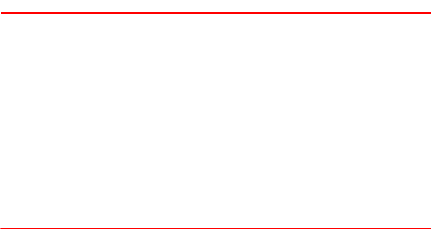
15
Chapter 1
Introduction
Full support for XML in Documaker products was
introduced in version 10.2. This support provides a
variety of features for...
• Importing and Exporting XML Files with
Documaker Workstation on page 24
• Importing and Exporting XML Files with
Docupresentment on page 39
• Using XML Extract Files on page 47
• Using DAL XML Functions and XPath on page 61
• Additional Ways to Use XML and Documaker
Server on page 72
• Using Docupresentment to Run Documaker Server
on page 78
• Frequently Asked Questions on page 104
This chapter includes information on these topics:
• Overview on page 16
• Setting Up the XML Add-On on page 17
• XML File Format on page 22
NOTE: The ability to work with XML files is included
in Oracle Documaker Desktop. In prior
releases, this was an add-on capability PPS users
could purchase separately. If you are a PPS
customer and you would like to work with XML
file, contact your sales representative for
information on upgrading to Oracle
Documaker Desktop.

Overview
16
OVERVIEW
XML (Extensible Markup Language) is a simple, flexible, text format language used
primarily for data exchange. It is a structured language containing a definition of the data
as well as the data itself. Here are a couple of links you may find useful:
www.w3c.org/XML
www.w3.org/TR/xpath
Originally developed to meet the challenges of large-scale electronic publishing, XML is
also playing an increasingly important role in the exchange of a wide variety of data on the
web and elsewhere. An example XML file is shown below:
<?xml version="1.0" encoding="UTF-8"?>
<book isbn="0123456789">
<title>
Hound of the Baskervilles
</title>
<author>Arthur Conan Doyle</author>
<character>
<name>Sherlock Holmes</name>
<friend-of>Dr Watson</friend-of>
<since>1850-10-04</since>
<qualification>extrovert genius</qualification>
</character>
<character>
<name>Dr Watson</name>
<friend-of>Inspector LeStrade</friend-of>
<since>1866-08-22</since>
<qualification>brash medic</qualification>
</character>
</book>
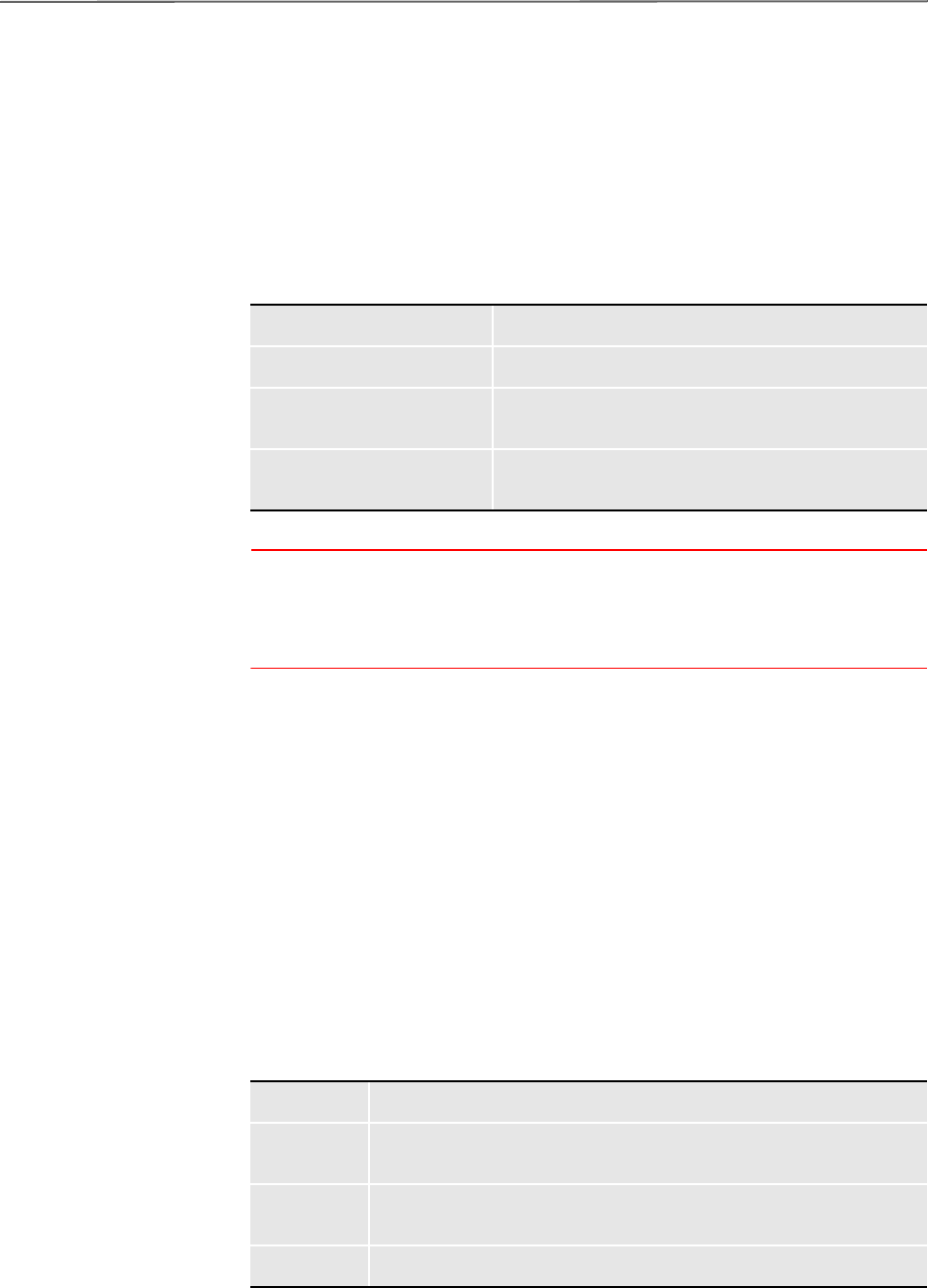
Setting Up the XML Add-On
17
SETTING UP
THE
XML
A
DD-ON
With the XML add-on, you can import and export XML files while using Documaker
Workstation and you can send and receive XML messages. Setting up the new import and
export capabilities is similar to setting up any import/export file format.
To import and export XML files in Documaker Workstation, you use these XML add-on
functions:
NOTE: The ability to work with XML files is included in Documaker Workstation, but
must be purchased separately by PPS users. You must also have a Docupresentment
license to use the messaging features in the WXMEntryHookExtXMLLoad and
WXMImportXMLArchive functions because they call Docupresentment files.
To use the XML add-on, you must first set up the import, export, and messaging
functions. If applicable, you then set up Docupresentment.
SETTING UP DOCUMAKER WORKSTATION
To use the import and export functions, you must also add this control group and options
to your FSISYS.INI or FSIUSER.INI file:
< XML_Imp_Exp >
Ext = .xml
File = export
Path = c:\fap\mstrres\SAMPCO
SuppressDlg = No
AppendedExport = No
Function This function lets you...
WXMImportXML Import data from an XML file into a form set.
WXMExportXML Export data from a form set to an XML file.
WXMEntryHookExtXMLLoad Send messages from the system to any type of message
server.
WXMImportXMLArchive Send messages from the system to any type of message
server.
Option Description
Ext (Optional) Enter the extension for the output files. The default is XML.)
File (Optional) Enter a file name, such as XMLEXP. If you omit this option the
system prompts the user to enter the file name.
Path (Optional) Enter the path, such as \xmlfile. If you omit this option, the system
defaults to the current directory.
SuppressDlg (Optional) Enter Yes to suppress the File Selection window. The default is No.
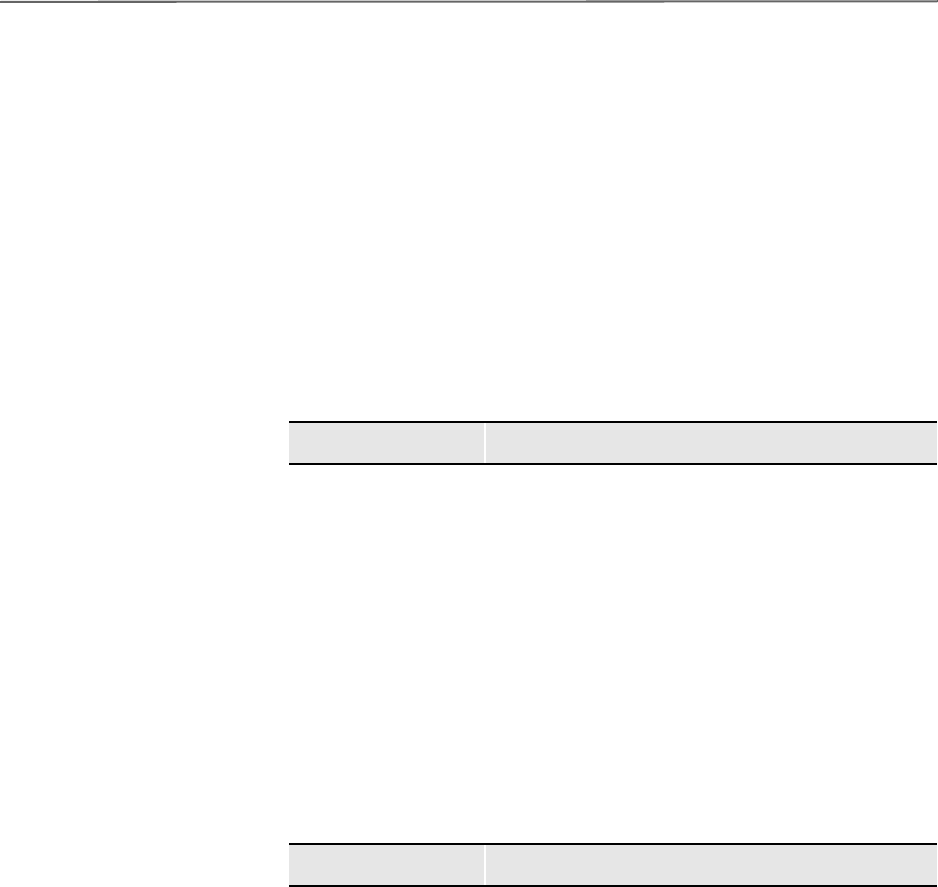
Setting Up the XML Add-On
18
Follow the instructions below to complete the import, export, and messaging setup.
Setting Up the XML Export Format
Follow these steps to set up the XML export format:
1 Open the FSISYS.INI file in the resource library for which you want to use export
files. You can use any text editor to open this file.
2 Locate the ExportFormats control group. Most text editors have a find or search
function you can use to quickly find this group heading. Then add the following line:
This assumes 09 is not already being used. Here is an example:
< ExportFormats >
09=;XM;XML Export;WXMW32->WXMExportXML
Setting Up the XML Import Format
Follow these steps to set up the XML import format:
1 Open the FSISYS.INI file in the resource library for which you want to use export
files. You can use any text editor to open this file.
2 Locate the ImportFormats control group. Most text editors have a find or search
function you can use to quickly find this group heading. Then add the following line:
This assumes 09 is not already being used. Here is an example:
< ImportFormats >
09=;XM;XML Import;WXMW32->WXMImportXML
Setting Up the XML Message Format
To send a message from Documaker Workstation to a message handling program such as
Docupresentment or MQSeries, you must add an option to either the ImportFormats or
AFEProcedures control groups.
One example of sending and receiving a message from Documaker Workstation to a
message handling program is to retrieve an archived record from Documaker
Workstation via Docupresentment. You can do this two ways:
• Set it up as an import hook by adding the WXMImportXMLArchive function to
ImportFormats control group.
< ImportFormats >
07=;XR;XML Import from IDS;WXMW32->WXMImportXMLArchive
For this export format Enter...
XML 09=;XM;XML Export;WXMW32->WXMExportXML
For this import format Enter...
XML 09=;XM;XML Import;WXMW32->WXMImportXML

Setting Up the XML Add-On
19
(This assumes 07 is not already being used.)
• Set it up as an entry hook by specifying the WXMEntryHookExtXMLLoad function
as the parameter for EntryFormset option in the AFEProcedures control group.
< AFEProcedures >
EntryFormset = WXMW32->WXMEntryHookExtXMLLoad
SETTING UP DOCUPRESENTMENT
If you are using Docupresentment as the message server, you must also add the INI
options shown below to let Documaker Workstation retrieve an archived record from
Docupresentment and load data into a form set before any data is entered by a user.
The archived record is retrieved using the Key1, Key2 and KeyID entered on the New
Form Set window. For this to happen, you must set up the following request type in the
DOCSERV.INI file for Docupresentment:
< ReqType:GetXML>
function = atcw32->ATCLogTransaction
function = atcw32->ATCLoadAttachment
function = atcw32->ATCUnloadAttachment
function = dprw32->DPRSetConfig
function = dprw32->DPRLocateOneRecord,Key1,Key2,KeyID
function = dprw32->DPRRetrieveFormset
function = dprw32->DPRPrint
function = dprw32->DPRProcessTemplates
function = atcw32->ATCSendFile, DOCC_XML, SENDBACKPAGE, TEXT
You can use any name for the archive library, as long as the same MRL name is used in
Documaker Workstation.
You can set up this feature as an entry or import hook:
< AFEProcedures >
EntryFormset = WXMOS2->WXMEntryHookExtXMLLoad
or
< ImportFormats >
07=;XR;XML Import from IDS;WXMW32->WXMImportXMLArchive
If you set it up as an entry or import hook, you must also set up these INI options:
< XML_Imp_Exp >
DSIUseNTUserID =
DSIVARS =
DSIIgnoreTimeoutError =
DSIAttachedVarFile =
DSIImportLevel =
DSITimeout =
DSIReqType =
DSIRecordDFD =
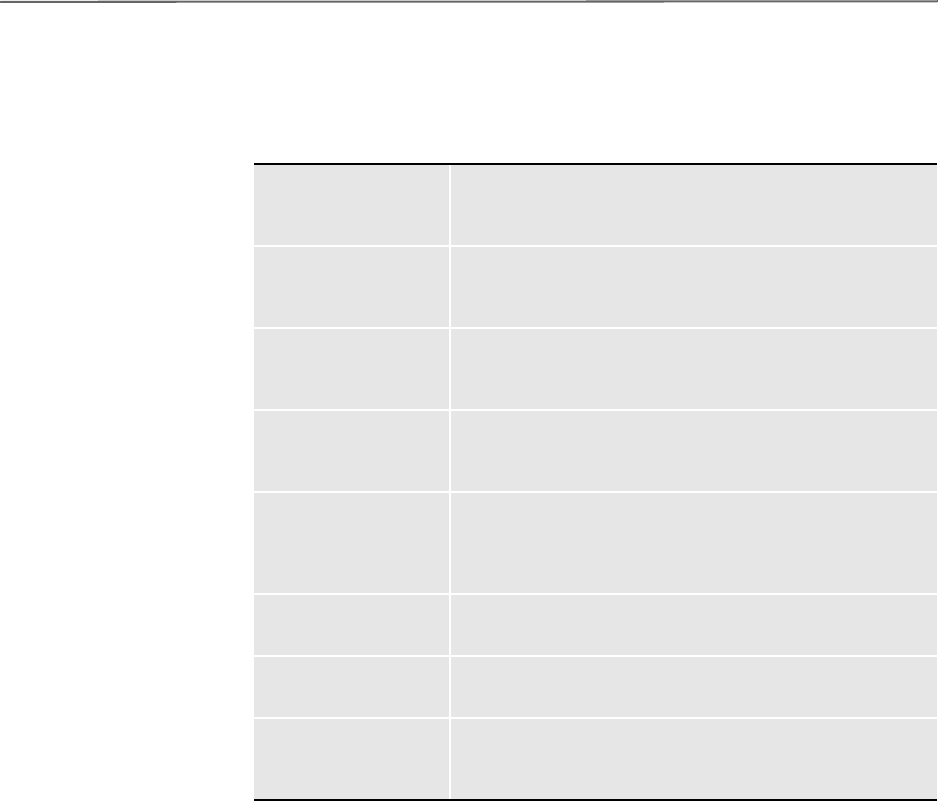
Setting Up the XML Add-On
20
If the request for an XML file comes back with an error, as opposed to a time-out,
Docupresentment displays an error message.
Using the Parser
The system uses the Expat XML parser, which was originally developed for Netscape. It
is a third-party library. You cannot plug in your own parser. Here are some links if you
want more information on Expat:
http://expat.sourceforge.net/
http://sourceforge.net/projects/expat/
The Expat parser supports these encodings:
•UTF-8
• ISO-8859-1
•US-ASCII
You should be able to use any of these encodings to pass information to
Docupresentment, DSI APIs, or Documaker. Docupresentment sends back UTF-8.
Option Description
DSIUseNTUserID (Optional) Set this option to Yes to use the NT user ID. The default
is No. This gives you a way to pass the NT user ID in the queue
instead of the normal DMWS ID.
DSIVARS (Optional) Enter variable;value, where variable is the variable name and
value is its value. This lets you identify a constant list of variables to
be sent in the queue.
DSIIgnoreTimeoutError (Optional) Enter Yes to continue processing if a timeout occurs.
The default is No. This gives you a way to ignore a timeout when
waiting on a return queue.
DSIAttachedVarFile (Optional) The default is DOCC_XML. Set this option to the
attachment name if it differs from DOCC_XML. This gives you a
way to specify the variable name the XML file is attached to.
DSIImportLevel (Optional) This option is typically used by programmers. Enter 2 if
you want the hook to operate on the FAP_MSGOPEN level. Enter
3 if you want it to operate on the FAP_MSGRUN level. The default
is 2.
DSITimeout (Optional) Enter the number of milliseconds you want for the time-
out. The default is 60000 milliseconds or 60 seconds.
DSIReqType (Optional) Enter the name of the request type of the message placed
in the queue. The default is GETXML.
DSIRecordDFD (Optional) Enter the name of a DFD file. The system tries to match
variable fields sent in the request to field values in this DFD file. It
then attaches the DFD record to the end of the message.

Setting Up the XML Add-On
21
Byte order marks Some XML editors and software add the Byte Order Mark (BOM) to the beginning of the
XML file, starting at offset 1. For example, if your XML file has UTF-8 encoding, the first
three bytes of your XML file would contain...
EE BB BF
If, however, you open this file in a browser, you will not see this information.
Furthermore, not all text editors display these values file. One sure way to find out if your
XML file includes the BOM is to view the file using the Type DOS command.
The GenData program can handle XML files which include the BOM, but you must allow
for this offset went you define the SeachMask option. Here are some examples:
If the BOM is included for UTF-8, define the SearchMask option as shown here:
< ExtractKeyField >
SeachMask = 4,<?xml
If the BOM is not included, define the SearchMask option as shown here:
< ExtractKeyField >
SeachMask = 1,<?xml
If you define the SearchMask option incorrectly, the GenData program will not create
transaction trigger records.
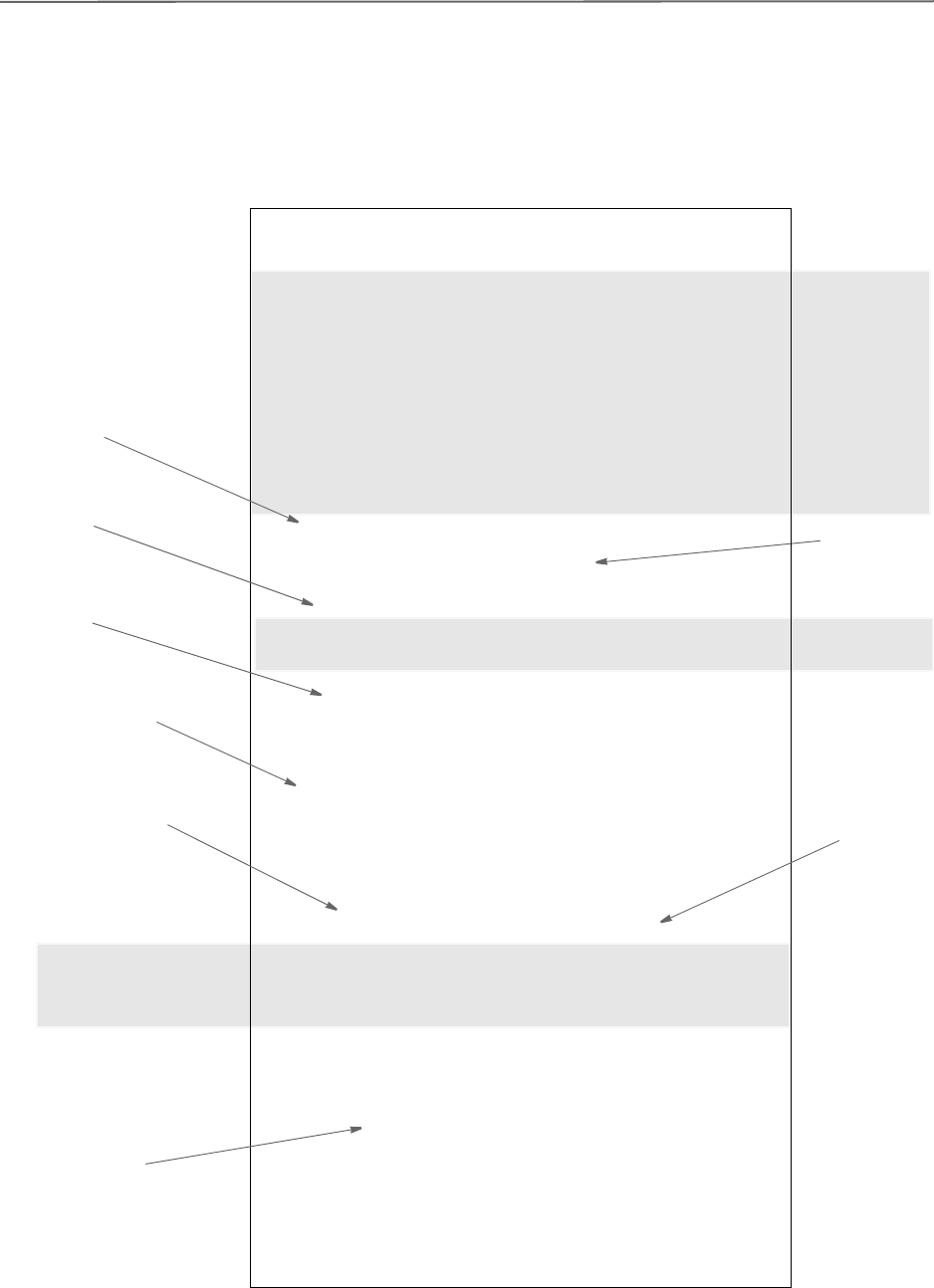
Setting Up the XML Add-On
22
XML FILE FORMAT
Here is an example of the format of the XML file the system creates:
Form set
global data
Group
Form
Multi-page section
Multi-line field
Form global
fields
Recipient
information
Page
Multi-page form
Section local
fields
<?xml version="1.0" encoding="UTF-8"?>
<DOCUMENT TYPE="RPWIP" VERSION="10.2">
<DOCSET NAME="">
<FIELD NAME="POLICY NBR">P1234-1</FIELD>
<FIELD NAME="RENEWAL NBR">1234-2</FIELD>
<FIELD NAME="AGENT'S NBR">6789</FIELD>
<FIELD NAME="EFFECT DATE">10/1/02</FIELD>
<FIELD NAME="EXPIRE DATE">10/1/03</FIELD>
<FIELD NAME="INSURED NAME">John A. Doe</FIELD>
<FIELD NAME="ADDR1">2345 Anystreet</FIELD>
<FIELD NAME="CITY">Anytown</FIELD>
<FIELD NAME="STATE">GA</FIELD>
<FIELD NAME="ZIP CODE">30339</FIELD>
<FIELD NAME="BUSINESS DESC1">Business</FIELD>
<FIELD NAME="BUSINESS DESC2">Personal</FIELD>
<FIELD NAME="BUSINESS DESC3">Property</FIELD>
<FIELD NAME="DATE">09/27/02</FIELD>
<GROUP NAME="" NAME1="DOCUCORP PACKAGE"
NAME2="PROFESSIONAL INSURANCE">
<FORM NAME="Professional Dec">
<DESCRIPTION>Professional Declarations
</DESCRIPTION>
<FIELD NAME="FORM LINE1">Form Letter</FIELD>
<RECIPIENT NAME="AGENT" COPYCOUNT="1"/>
<RECIPIENT NAME="HOME OFFICE" COPYCOUNT="1"/>
<RECIPIENT NAME="INSURED" COPYCOUNT="1"/>
<SHEET>
<PAGE>
<SECTION NAME="profdec"/>
</PAGE>
</SHEET>
</FORM>
<FORM NAME="Form Letter">
<DESCRIPTION>Form Letter</DESCRIPTION>
<RECIPIENT NAME="AGENT" COPYCOUNT="1"/>
<RECIPIENT NAME="HOME OFFICE" COPYCOUNT="1"/>
<RECIPIENT NAME="INSURED" COPYCOUNT="1"/>
<SHEET>
<PAGE>
<SECTION NAME="let~tbl">
<FIELD NAME="Coverage">Automobile</FIELD>
<FIELD NAME="Extra">
<P><FONT SIZE="12"
FACE="Univers ATT" COLOR="#FF0000">Text in
multiline variable field.</FONT>
</P>
</FIELD>
</SECTION>
</PAGE>
<PAGE>
<SECTION NAME="let~tbl">
<DAPINSTANCE VALUE="2"/>
<DAPOPTIONS VALUE="M"/>
</SECTION>
</PAGE>
</SHEET>
</FORM>
</GROUP>
</DOCSET>
</DOCUMENT>
Indicates a
second page

Setting Up the XML Add-On
23
Keep in mind...
• DAPOPTIONS should have a value of M for multi-page sections (FAP files). There
are other section options, but only M is applicable in XML.
Use DAPINSTANCE to provide a page number for multi-page sections. If the
section does not span multiple pages, omit the DAPINSTANCE value.
• When you have multiple XML transactions within a single file, separate each
transaction with a line feed. This is a requirement of Documaker software, not the
XML parser.
• Although you do not have to include line feeds inside the XML for a transaction, we
suggest you add a line feed after each element tag. This makes it easier to read the file
and helps in debugging your XML. A message like
Line 255, column 8, syntax is incorrect
is easier to diagnose than
Line 1, column 156780, syntax is incorrect.
24
Chapter 2
Importing and Exporting
XML Files with
Documaker Workstation
This chapter tells you how to set up your system to
import and export XML files while using Documaker
Workstation (PPS).
These topics are discussed:
• Modifying INI Files on page 25
• Creating an XML Export File on page 26
• Example Documaker XML File Format on page 28
• Importing a Documaker XML File on page 33
• Transforming XML Files on page 34
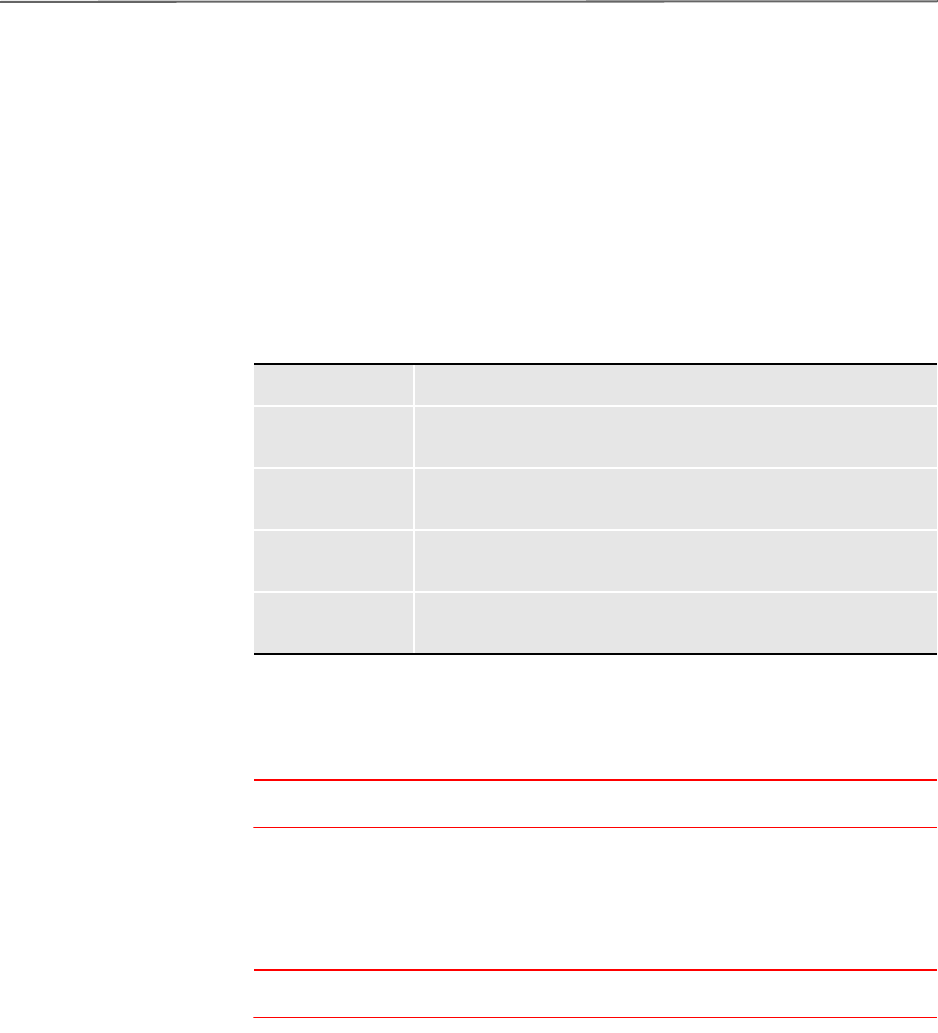
Modifying INI Files
25
MODIFYING
INI FILES
To import and export XML files into Documaker Workstation, you must make sure the
following control group and options are in your FSISYS.INI file:
< XML_Imp_Exp >
Ext = .xml
File = export
Path = c:\fap\mstrres\SAMPCO
SuppressDlg = No
AppendedExport = No
Setting up the XML export
format
Locate the ExportFormats control group and add this line under that control group:
< ExportFormats >
09=;XM;XML Export;WXMW32->WXMExportXML;
NOTE: This example assumes that 09 is not already being used in this control group.
Setting up the XML import
format
Locate the ImportFormats control group and add this line:
< ImportFormats >
09=;XM;XML Import;WXMW32->WXMImportXML;
NOTE: This example assumes that 09 is not already being used in this control group.
Option Description
Ext (Optional) Enter the extension for the output files. The default is XML.
File (Optional) Enter a file name, such as XMLEXP. If you omit this option
the system prompts you to enter the file name.
Path (Optional) Enter the path, such as \xmlfile. If you omit this option, the
system defaults to the current directory.
SuppressDlg (Optional) Enter Yes to suppress the File Selection window. The default
is No.
AppendedExport Enter Yes to append the current exported transaction to the last one. The
default is No.
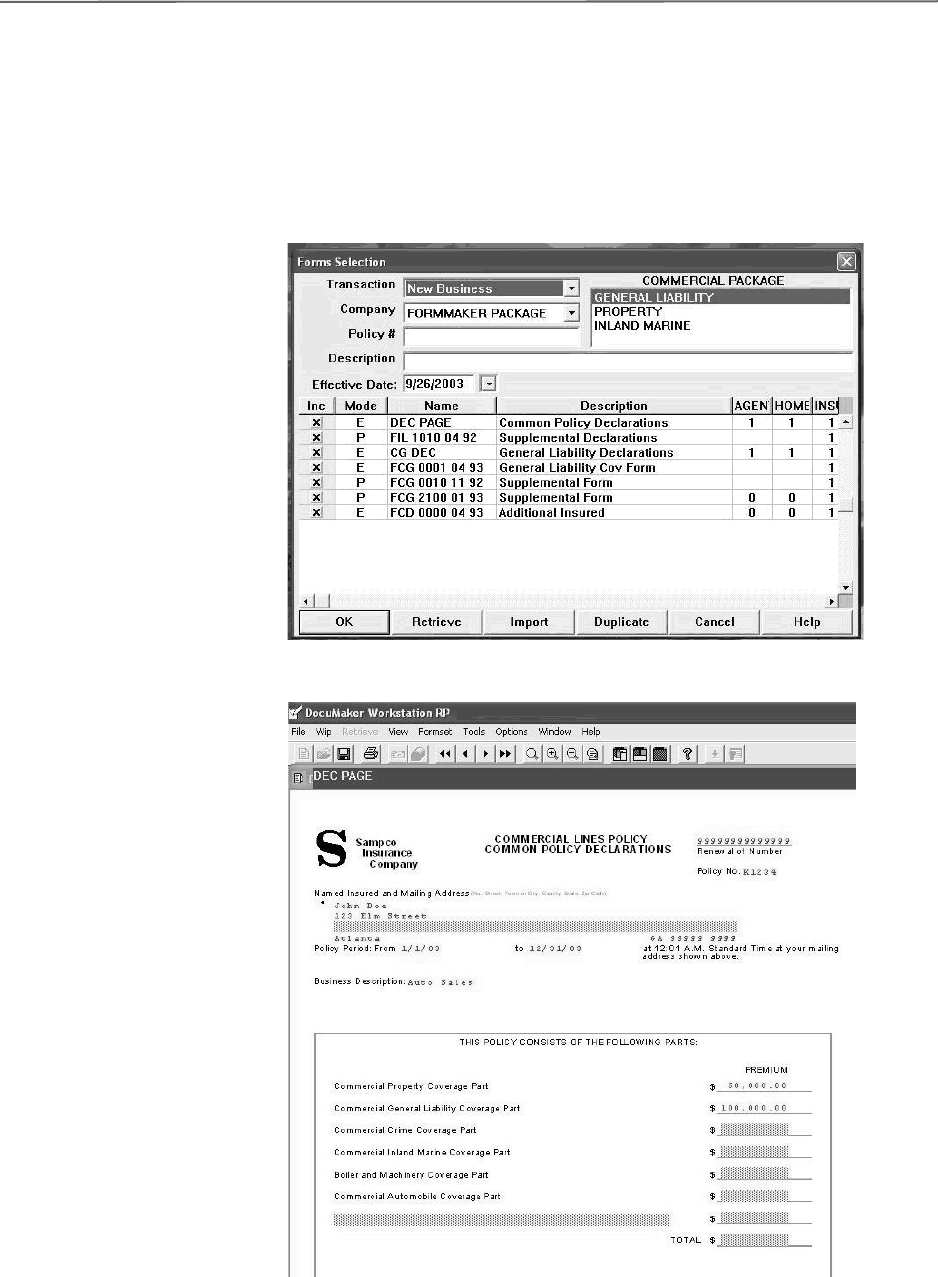
Creating an XML Export File
26
CREATING AN
XML EXPORT
FILE
To create an XML export file, follow these steps:
1 Start Documaker Workstation (PPS). Select the File, New option.
2 Complete the Form Selection window and press Ok.
3 Enter data on the forms and complete the form set using the File, Complete option.
4 Next, check the Print and Export Data fields. Then click XML Export and Ok.
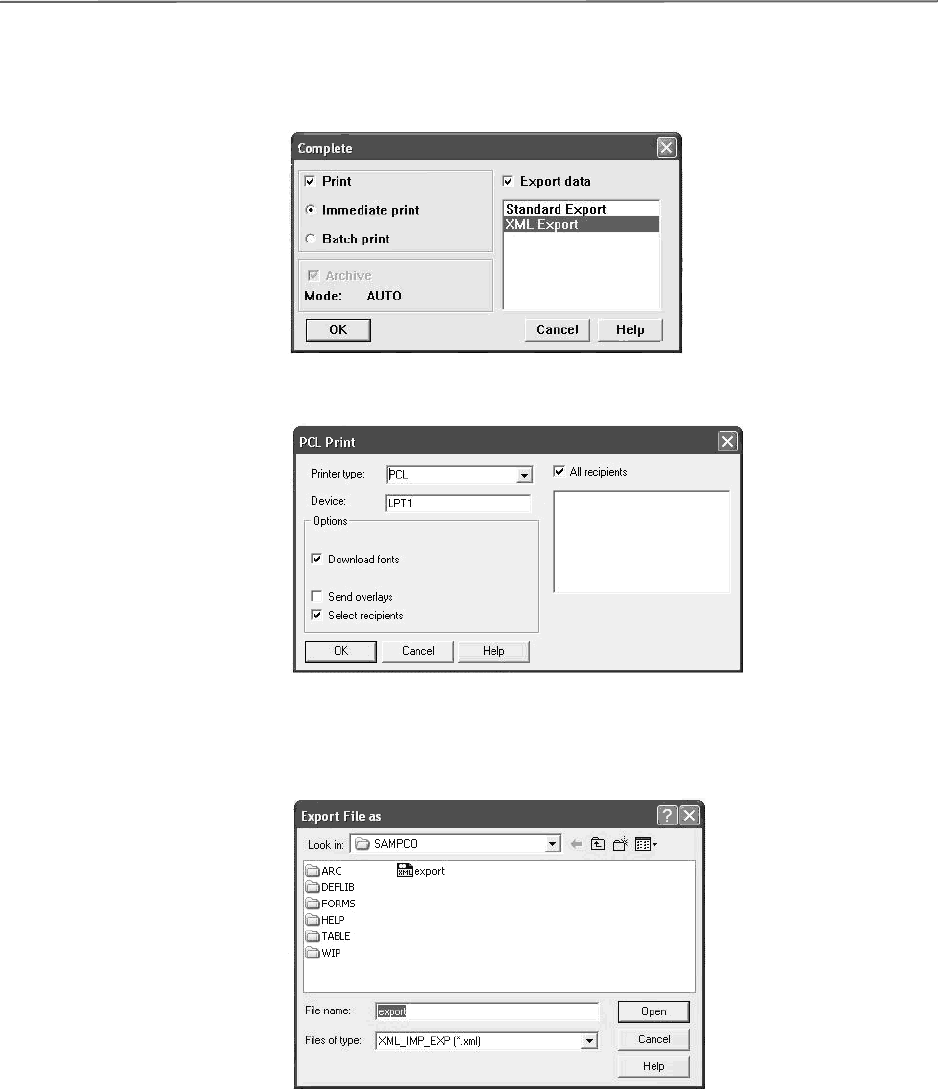
Creating an XML Export File
27
5 Print the form set.
6 Export the data to an XML file.
If the SuppressDlg option is set to No under the XML_Imp_Exp control group, the
system displays this window:
The name that appears in the File Name field is the one you specified in the File
option in the XML_Imp_Exp control group. If you left that option blank, enter a file
name here.
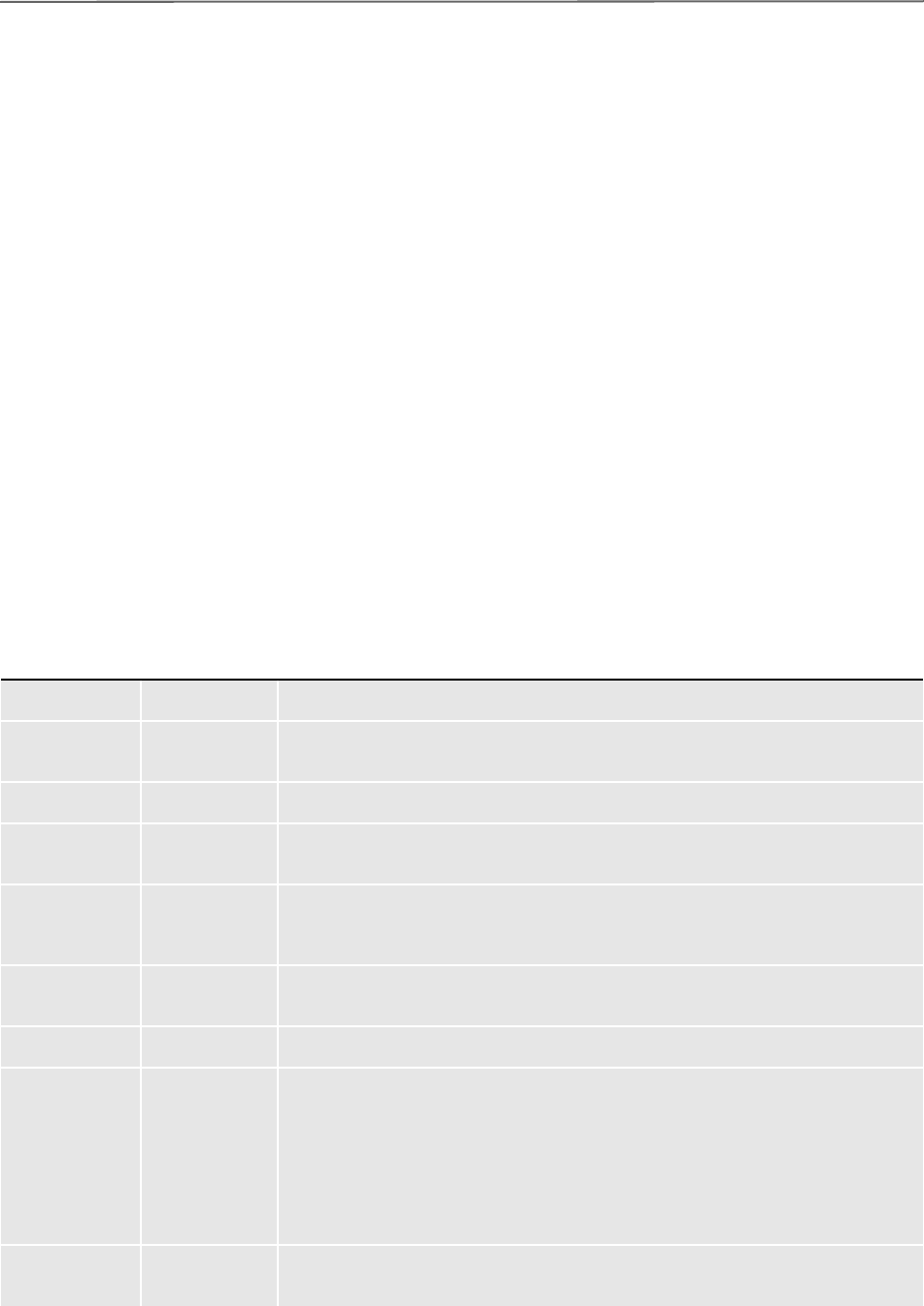
Example Documaker XML File Format
28
EXAMPLE
DOCUMAKER
XML FILE
FORMAT
The XML file created from Documaker Workstation (PPS) should look similar to the file
excerpts shown below.
<?xml version="1.0" encoding="UTF-8"?>
<DOCUMENT TYPE="RPWIP" VERSION="10.3">
<DOCSET NAME="">
<FXRFILE NAME="rel102sm"/>
<GROUP NAME="" NAME1="DOCUCORP PACKAGE" NAME2="VERSION 103">
<FORM NAME="Tersub - Basic" OPTIONS="R">
<DESCRIPTION>Tersub - Basic Paragraph Assem</DESCRIPTION>
<FIELD NAME="FIELDTwo">8:30 AM</FIELD>
<FIELD NAME="FIELDThree">5:30PM</FIELD>
<RECIPIENT NAME="AGENT" COPYCOUNT="1" CODE="" SEQUENCE="1"/>
<RECIPIENT NAME="HOME OFFICE" COPYCOUNT="1" CODE=""
SEQUENCE="2"/>
<RECIPIENT NAME="INSURED" COPYCOUNT="1" CODE="" SEQUENCE="3"/>
:
</FORM>
</GROUP>
</DOCSET>
</DOCUMENT>
This table lists the system-generated tag names and attributes and gives an explanation of
each.
Tag Name Attribute Explanation
?xml The XML declaration line
DOCUMENT TYPE The Documaker Standard Header. The attribute Type is hard-coded to be exported as
RPWIP.
VERSION The version of the software being used.
DOCSET NAME The name of the document set that contains all forms required to process a single
transaction, which is usually the FORM.DAT file.
GROUP NAME1,
NAME2,
NAME3
The key names used in the FORM.DAT file to group a set of common forms, such as Key1
= Company, Key2 = LOB, and so on.
FORM NAME The name of a single document containing one or more pages and options that define the
form. See Form options on page 32 for more information.
DESCRIPTION (Optional) A user-defined description of the form.
FIELD NAME (Optional) A field tag can be at the document, form, or section level, depending on the field
scope. Fields tags at the...
- Document level will be populated to all identically named variable fields in all images and
all forms in a form set.
- Form level will be populated to all identically named variable fields in all images in the
current form.
- Section level will be populated only to the variable field within a single section/image.
RECIPIENT NAME The name used to identify who receives a copy or copies of a form set, or any part of a form
set.
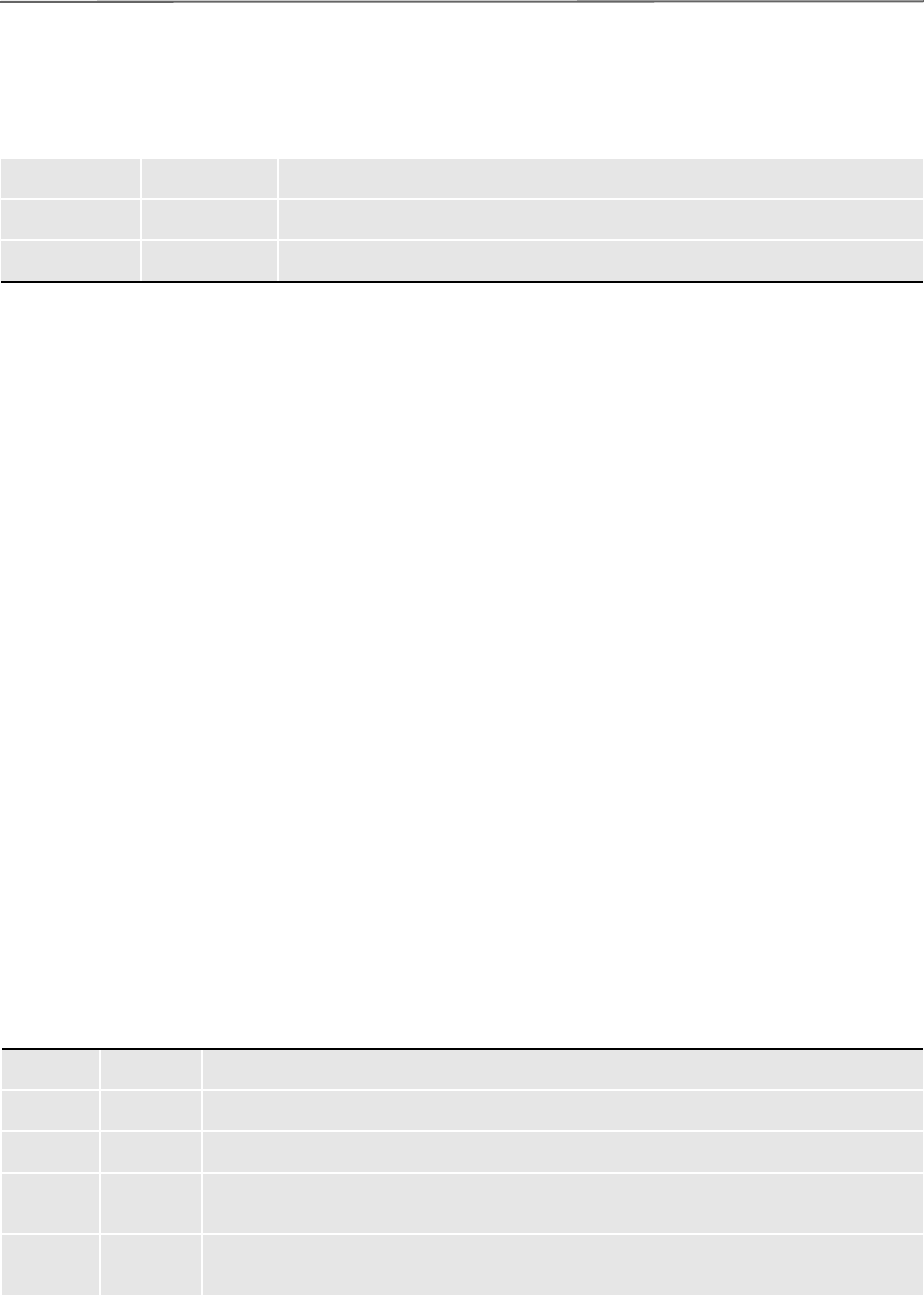
Example Documaker XML File Format
29
<SHEET>
<PAGE>
<SECTION NAME="parasem">
<FIELD NAME="FIELD">
<P ALIGN="CENTER">
<FONT STYLE="FONT-SIZE: 10pt" FACE="Univers ATT">
<B>Sample Text</B>
</FONT>
</P>
<P STYLE="margin-left: 2.00in">
<FONT STYLE="FONT-SIZE: 10pt" FACE="Univers ATT">
Sample text left margin is 2 inches sample text
</FONT>
<P>
<STOPS>
<TS FAPS=”3600” SPECIAL=”2”/>
<TS FAPS=”7600” SPECIAL=”1”/>
<TS FAPS=”11600” LEADER=”46”/>
</STOPS>
<FONT STYLE=”FONT-SIZE: 11pt” FACE=”Albany AMT”>
<TAB/>Center Tab Stop
<TAB/>Right Just. Tab Stop
<TAB/>Left with Leader
</FONT>
</P>
</P>
<BR>
:
</PAGE>
</SHEET>
COPYCOUNT The number of copies for a particular recipient
CODE Not required.
SEQUENCE (Optional) The order in which the recipient copies print.
Tag Name Attribute Explanation
Tag
Name Attribute Explanation
SHEET Used to identify if the form pages are simplex or duplex.
PAGE Indicates a single sheet of paper.
SECTION NAME Indicates a segment of a page or an entire page. (Image Name)
FIELD NAME (Optional) The field tag at the section level is data that will be populated only to the variable field within
a single section/image.
P (Optional) Indicates a paragraph in a text area or multi-line field. P is used when paragraph attributes
are needed.
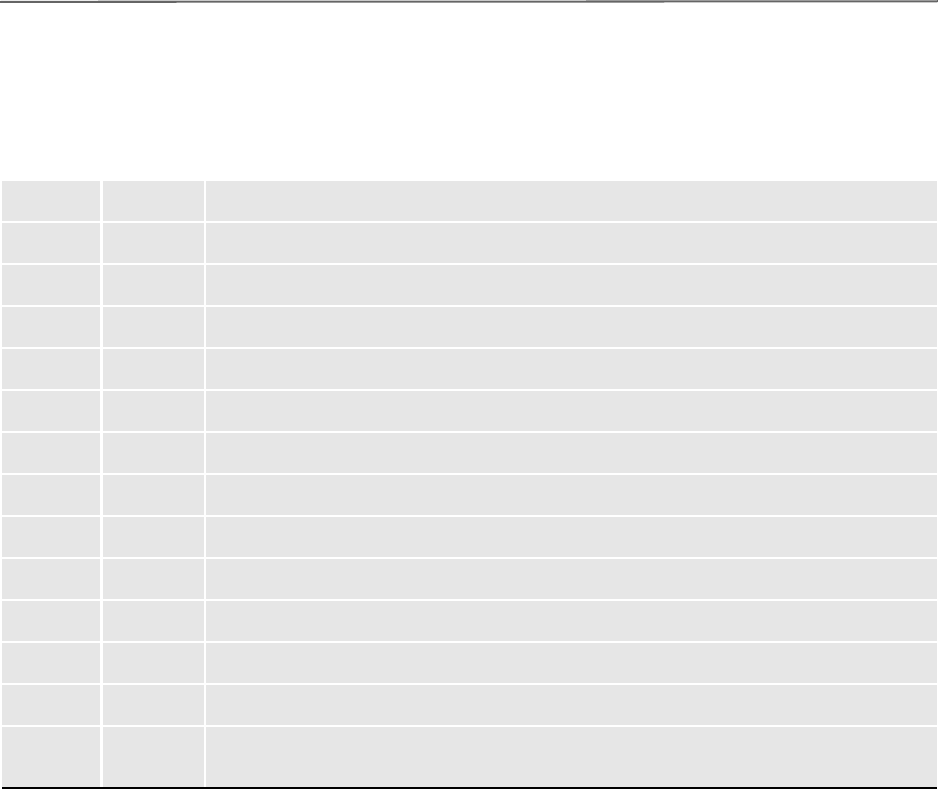
Example Documaker XML File Format
30
<P>
<FONT STYLE="FONT-SIZE: 10pt" FACE="Univers ATT">
Skywire Software’s customer and technical support personnel
are available to answer any questions you may having concerning
your systems. You can call them between the hours of
<INPUT NAME="FIELDTwo" VALUE="8:30 AM" SIZE="7" MAXLENGTH="25"
ACCESSKEY="F"/>
:
</FONT>
</P>
<BR>
<P>
<UL TYPE="CIRCLE">
<LI>
<FONT STYLE="FONT-SIZE: 10pt" FACE="Univers ATT">Sample Text</
FONT>
</LI>
<LI>
<FONT STYLE="FONT-SIZE: 10pt" FACE="Univers ATT">Sample Text</
FONT>
</LI>
</UL>
</P>
BR (Optional) Indicates a paragraph break. BR is used when there are no attributes for a paragraph.
ALIGN (Optional) Indicates the justification, such as Left, Center, or Right.
STYLE (Optional) Indicates the indentation, such as a 2-inch left margin or a 1-inch hanging indent margin.
FONT STYLE (Optional) Indicates the point size of the font used.
FACE (Optional) Indicates the font family name.
COLOR (Optional) Indicates the font color.
B (Optional) Indicates bold text.
I (Optional) Indicates italicized text.
U (Optional) Indicates underlined text.
STOPS Custom tab stops group – contains non-default tab stop definitions
TS FAPS Width of custom tab stop, 2400 faps = 1 inch (default is 600, ¼ inch)
SPECIAL Tab stop type: 0 = left (default), 1 = right, 2 = center, 4 = decimal, 8 = bar
LEADER Optional leader character ASCII value (46 is a period)
TAB Denotes a tab within the text. (Note that actual tab characters embedded within the text are treated as
spaces.)
Tag
Name Attribute Explanation
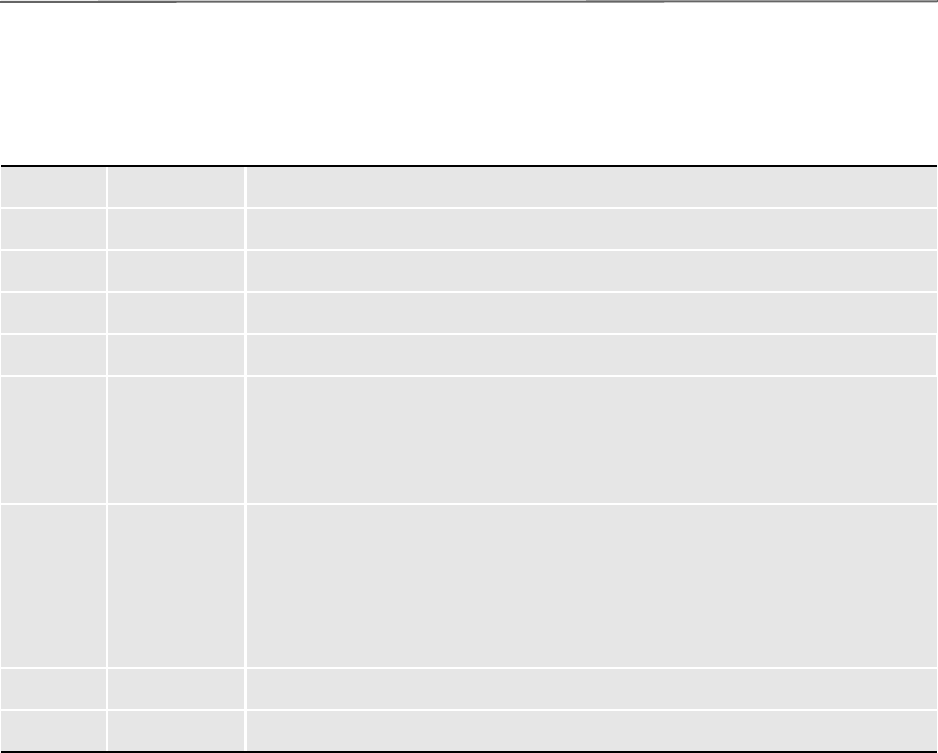
Example Documaker XML File Format
31
Tag Name Attributes Explanation
INPUT NAME (Optional) Indicates the name of an embedded variable field.
VALUE (Optional) Contains the data in the variable field.
SIZE (Optional) Indicates the length of the data.
MAXLENGTH (Optional) Indicates the length of the variable field.
ACCESSKEY (Optional) Specifies the scope of the field. Enter G (global), F (form global), or L (image local)
UL TYPE (Optional) Indicates an unordered bullet list, such as one using symbol bullets. The type of bullet
can be circle, square, or disc.
When importing text areas and multi-line fields from an XML file, the system modifies the default
bullet size to match that used in Documaker Studio and Documaker Workstation. This size is one-
third of the font size. This only affects imported XML files which contain unordered bullet lists.
OL TYPE (Optional) Indicates an ordered bullet list, such as a numbered list or an outline. The type can be:
• Arabic number (1, 2, 3, and so on)
• Upper case letter (A, B, C, and so on)
• Lower case letter (a, b, c, and so on)
• Upper case Roman numeral (I, II, III, IV, and so on)
• Lower case Roman numeral (i, ii, iii, iv, and so on)
LI (Optional) Indicates a bullet list item.
STYLE (Optional) Indicates the indentation, such as a 2-inch left margin.
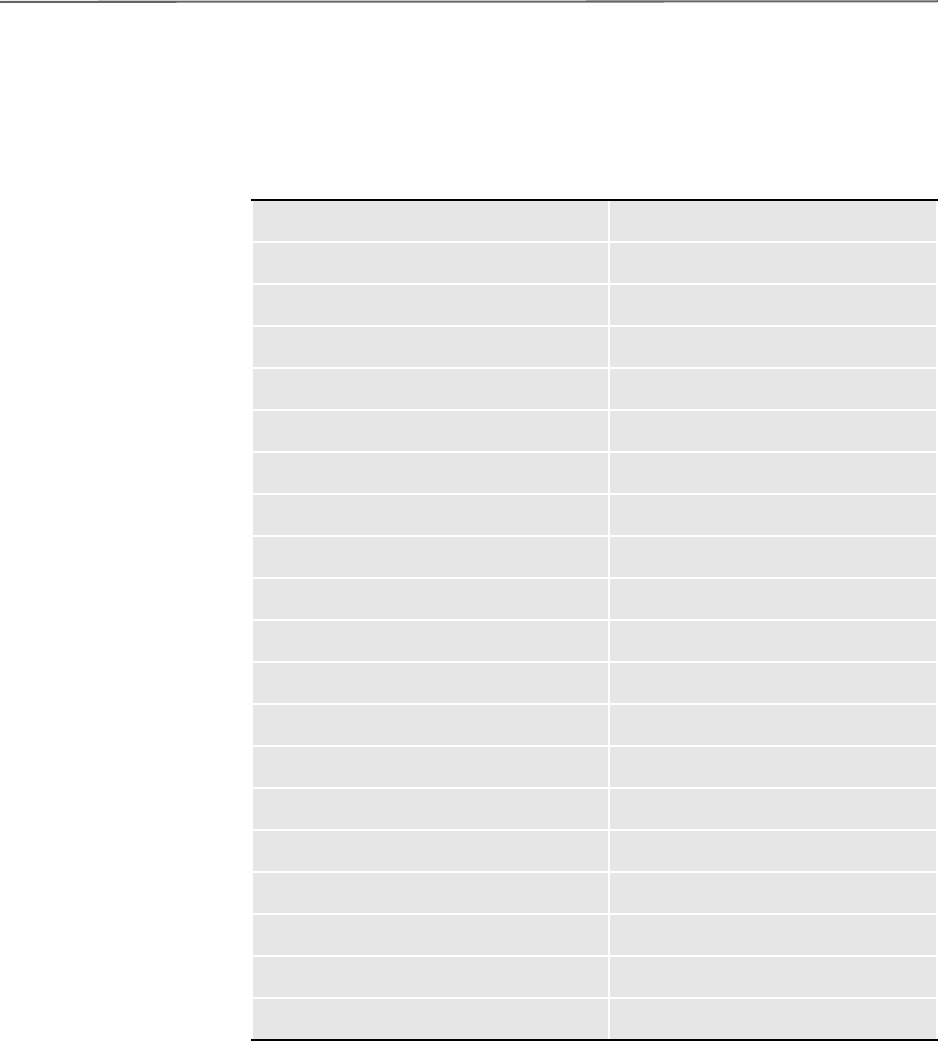
Example Documaker XML File Format
32
Form options You can choose from these form options:
To indicate the form Enter this code
Is to be stapled B
Was completed C
Is a dec page D
Is an entry form with required fields E
Is fixed (non-selectable) F
Is legal size G
Is hidden H
Is A4 size I
Is executive size J
Is in landscape K
Can be copied (multiple copies are allowed) M
Should not be defaulted to the display N
Is an overflow form O
Is a pull form P
Is required R
Is a sub dec - program policy S
Was user selected U
Is a master dec - program policy X
Was system generated Y
Should contain a line of Zs (z-z-z-z-z...) Z
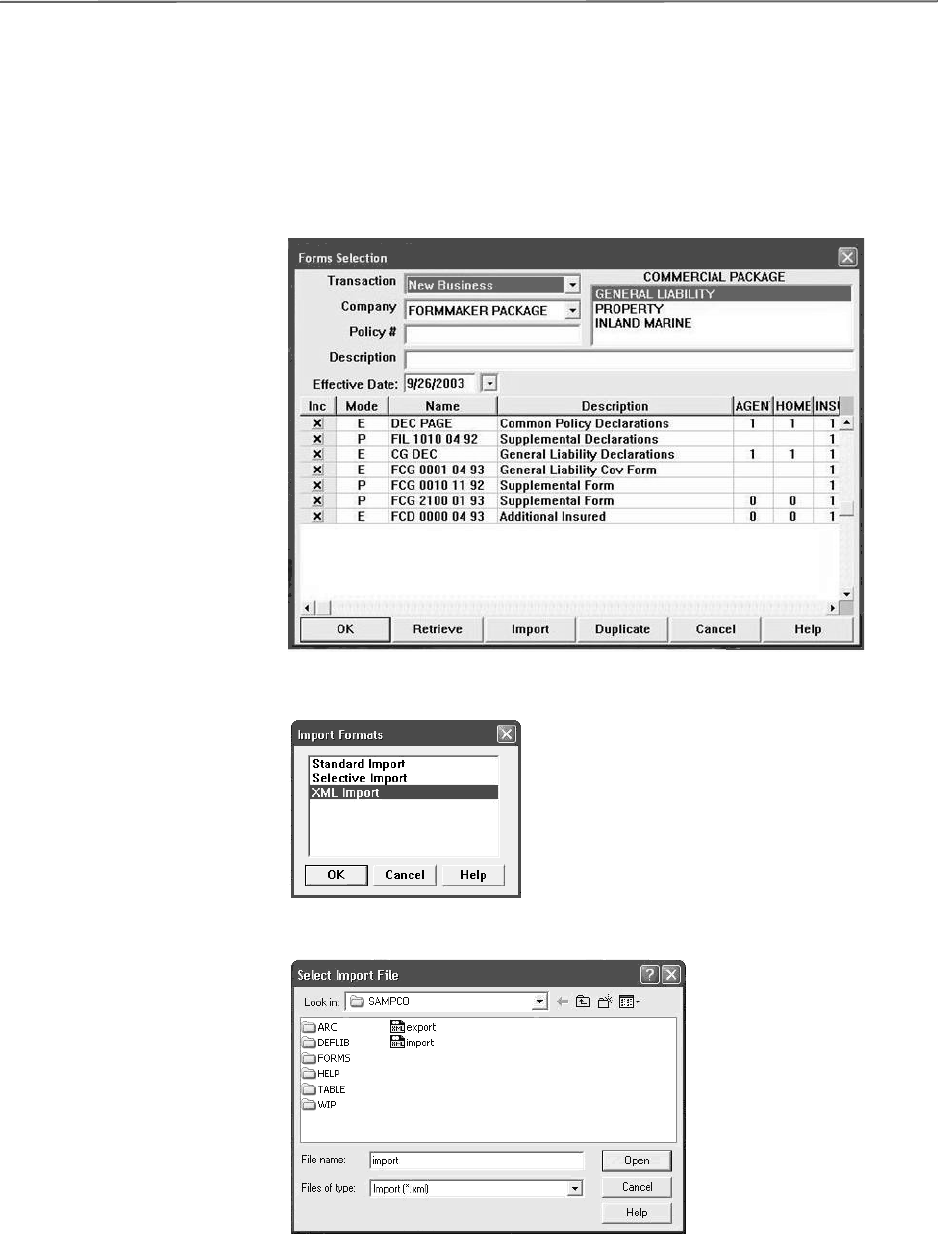
Importing a Documaker XML File
33
IMPORTING A
DOCUMAKER
XML FILE
Follow these steps to import a Documaker XML file:
1 Start Documaker Workstation (PPS). Select the File, New option. The Form
Selection window appears. From the Form Selection window, click Import.
2 Click XML Import as the format.
3 Select the XML file you want to import.
4 Complete the Forms Selection window and click Ok.
Your form set should be populated with data from your XML import file.
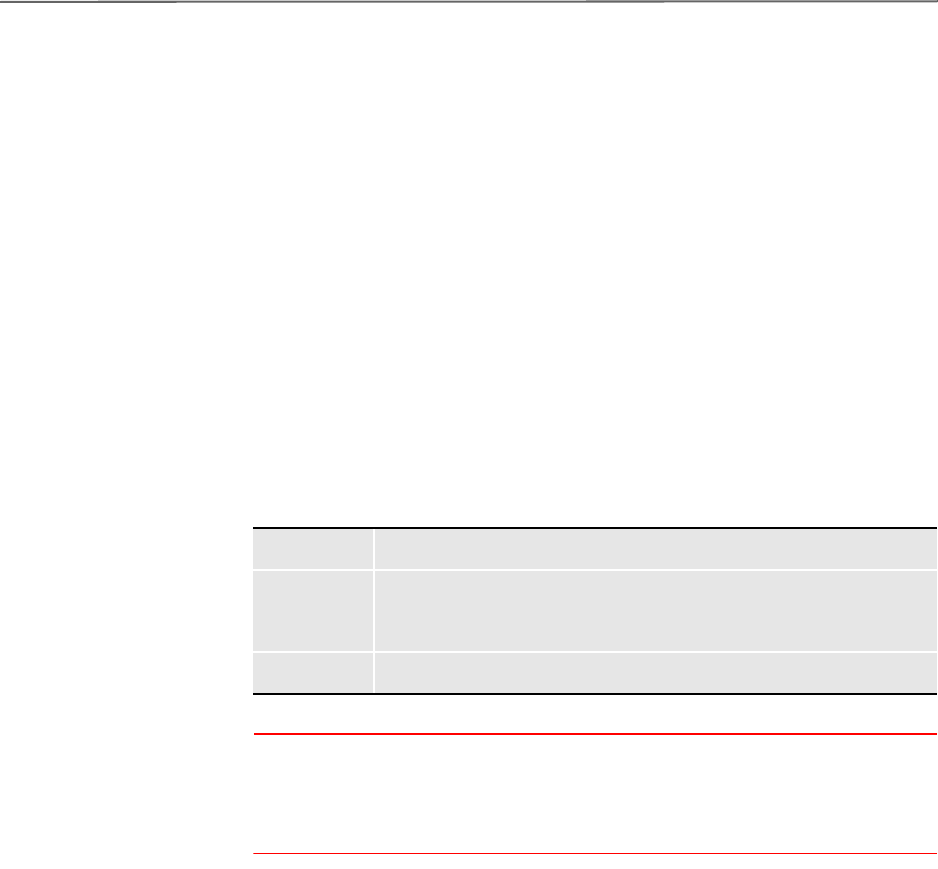
Transforming XML Files
34
TRANSFORMIN
G
XML FILES
You can export an XML file with XSLT transformation. This lets you transform the
output XML file into another format, such as HTML or text. The final output format is
determined by the XSLT template you choose.
The system transforms an export file with the XSLTW32.EXE program using the XSL
template you specified with the XSLTName option.
To enable the export, add this option to the ExportFormats control group:
< ExportFormats >
01 =;Mx;Export with XSL;WXMW32->WXMExportWithXSL
Then add these options:
< ExportWithXSL >
XSLTName =
Executable =
Debug =
NOTE: The default control group used by the WXMExportWithXSL rule is the
ExportWithXSL control group. If you specify another control group and one of
its options are missing, the system uses the values from the ExportWithXSL
control group.
You can define several INI options in the ExportFormats control group if you want to
display multiple output processing options, each with its own XSL template. Here is an
example:
< ExportFormats >
01 =;M1;Export with XSL;WXMW32->WXMExportWithXSL
02 =;M2;Export with XSL;WXMW32->WXMExportWithXSL
Each option listed under the ExportFormats control group requires a matching
ExportWithXSL control group:
< ExportWithXSL:M1 >
XSLTName =
Executable =
Debug =
< ExportWithXSL:M2 >
XSLTName =
Executable =
Debug =
Option Description
XSLTName The full or relative path and name of the XSLT template.
Executable (Optional) The full path and name of the program. If omitted, the system looks
for the XSLTW32.EXE program in the directory where the
AFEMNW32.EXE program is located.
Debug (Optional) Enter Yes to leave temporary files in place.

Transforming XML Files
35
Appending output
transformations
You can append multiple XSLT output transformations to the same file using this INI
option:
< ExpFile_CD >
AppendedExport = Yes
This example transforms an XML export into a semicolon-delimited output file you can
import into Excel. It also uses the XSLTW32.EXE program for the transformation.
First, you need these INI options:
< ExportFormats >
01 =;M1;Export with XSL;WXMW32->WXMExportWithXSL
< ExportWithXSL:M1 >
XSLTName = x:\rp\mstrres\aeic\xsl\output1.xsl
Executable =
Debug = No
And this XSL style sheet:
<?xml version="1.0" encoding="UTF-8"?>
<xsl:stylesheet
xmlns:xsl="http://www.w3.org/1999/XSL/Transform"
version="1.0">
<xsl:output method="text" encoding="ISO-8859-1" />
<!-- global variables -->
<xsl:template match="/">
<xsl:call-template name="process"/>
</xsl:template>
<xsl:template name="process">
<xsl:variable name="semicolon" select="';'"/>
<xsl:variable name="root" select="DOCUMENT/DOCSET"/>
<xsl:variable name="policy" select="$root/
FIELD[@NAME='POLICY']"/>
<xsl:variable name="insnam" select="$root/
FIELD[@NAME='INSNAM']"/>
<xsl:variable name="insnam2" select="$root/
FIELD[@NAME='INSNAM2']"/>
<xsl:variable name="insad1" select="$root/
FIELD[@NAME='INSAD1']"/>
<xsl:variable name="insad2" select="$root/
FIELD[@NAME='INSAD2']"/>
<xsl:variable name="inszip" select="$root/
FIELD[@NAME='INSZIP']"/>
<xsl:variable name="agent" select="$root/
FIELD[@NAME='AGENT']"/>
<xsl:variable name="effdte" select="$root/
FIELD[@NAME='EFFDTE']"/>
<xsl:variable name="expdte" select="$root/
FIELD[@NAME='EXPDTE']"/>
<xsl:variable name="cddesc" select="$root/
FIELD[@NAME='CDDESC_BUSDSC']"/>
<xsl:variable name="premo_prop" select="$root/
FIELD[@NAME='PREMO_PROP']"/>
<xsl:variable name="advprem" select="$root/
FIELD[@NAME='ADVPREM']"/>
<xsl:variable name="totpre" select="$root/
FIELD[@NAME='TOTPRE']"/>

Transforming XML Files
36
<xsl:variable name="galmt" select="$root/
FIELD[@NAME='GALMT']"/>
<xsl:variable name="prcolmt" select="$root/
FIELD[@NAME='PRCOLMT']"/>
<xsl:variable name="pailmt" select="$root/
FIELD[@NAME='PAILMT']"/>
<xsl:variable name="perocc" select="$root/
FIELD[@NAME='PEROCC']"/>
<xsl:variable name="fdlmt" select="$root/
FIELD[@NAME='FDLMT']"/>
<xsl:variable name="medlmt" select="$root/
FIELD[@NAME='MEDLMT']"/>
<xsl:value-of select="concat($policy, $semicolon)"/>
<xsl:value-of select="concat($insnam, $semicolon)"/>
<xsl:value-of select="concat($insnam2, $semicolon)"/>
<xsl:value-of select="concat($insad1, $semicolon)"/>
<xsl:value-of select="concat($insad2, $semicolon)"/>
<xsl:value-of select="concat($inszip, $semicolon)"/>
<xsl:value-of select="concat($agent, $semicolon)"/>
<xsl:value-of select="concat($effdte, $semicolon)"/>
<xsl:value-of select="concat($expdte, $semicolon)"/>
<xsl:value-of select="concat($cddesc, $semicolon)"/>
<xsl:value-of select="concat($premo_prop, $semicolon)"/>
<xsl:value-of select="concat($advprem, $semicolon)"/>
<xsl:value-of select="concat($totpre, $semicolon)"/>
<xsl:value-of select="concat($galmt, $semicolon)"/>
<xsl:value-of select="concat($prcolmt, $semicolon)"/>
<xsl:value-of select="concat($pailmt, $semicolon)"/>
<xsl:value-of select="concat($perocc, $semicolon)"/>
<xsl:value-of select="concat($fdlmt, $semicolon)"/>
<xsl:value-of select="concat($medlmt, $semicolon)"/>
<xsl:text>
</xsl:text>
</xsl:template>
</xsl:stylesheet>
And this XML export file:
<?xml version="1.0" encoding="UTF-8" ?>
- <DOCUMENT TYPE="RPWIP" VERSION="10.3">
- <DOCSET NAME="">
<FIELD NAME="POLICY">A108</FIELD>
<FIELD NAME="INSNAM">SAM MALONE</FIELD>
<FIELD NAME="INSNAM2">CHEERS, INC.</FIELD>
<FIELD NAME="NEW">X</FIELD>
<FIELD NAME="INSAD1">123 MAIN ST</FIELD>
<FIELD NAME="INSAD2">SUITE 100</FIELD>
<FIELD NAME="INSCTY">ATLANTA</FIELD>
<FIELD NAME="INSST">GA</FIELD>
<FIELD NAME="INSZIP">23033</FIELD>
<FIELD NAME="AGENT">12345</FIELD>
<FIELD NAME="AGYNAM">Docucorp Insurance Agency</FIELD>
<FIELD NAME="AGYAD1">2727 Paces Ferry Road S.E.</FIELD>
<FIELD NAME="AGYAD2">Suite II-900</FIELD>
<FIELD NAME="AGYCTY">Atlanta</FIELD>
<FIELD NAME="AGYST">GA</FIELD>
<FIELD NAME="AGYZIP">30339</FIELD>

Transforming XML Files
37
<FIELD NAME="PRMSTE">GA</FIELD>
<FIELD NAME="EFFDTE">07/05/2003</FIELD>
<FIELD NAME="EXPDTE">07/05/2004</FIELD>
<FIELD NAME="TERM">366 DAYS</FIELD>
<FIELD NAME="CDDESC_BUSDSC">BAR & GRILL</FIELD>
<FIELD NAME="PREMO_PROP">12,000.00</FIELD>
<FIELD NAME="ADVPREM">12,000.00</FIELD>
<FIELD NAME="FEEDESC1">Policy Tax</FIELD>
<FIELD NAME="FEEDESC1 TAX">3%</FIELD>
<FIELD NAME="FEEAMT1">360.00</FIELD>
<FIELD NAME="FEEDESC2">Stamping Fee</FIELD>
<FIELD NAME="FEEAMT2">250.00</FIELD>
<FIELD NAME="OTHCHG">610.00</FIELD>
<FIELD NAME="TOTPRE">12,610.00</FIELD>
<FIELD NAME="CSIGNEDLOC">Atlanta, GA</FIELD>
<FIELD NAME="SIGNED DATE">07/30/2003</FIELD>
<FIELD NAME="SIGNED TIME">09:25:18</FIELD>
<FIELD NAME="OPINIT">DOCUCORP</FIELD>
<FIELD NAME="SIGNATURE">Authorized Representative</FIELD>
<FIELD NAME="GALMT">1,000,000</FIELD>
<FIELD NAME="PRCOLMT">1,000,000</FIELD>
<FIELD NAME="PAILMT">1,000,000</FIELD>
<FIELD NAME="PEROCC">1,000,000</FIELD>
<FIELD NAME="FDLMT">1,000,000</FIELD>
<FIELD NAME="MEDLMT">1,000,000</FIELD>
- <GROUP NAME="" NAME1="American Equity" NAME2="INTERLINE">
- <FORM NAME="FS100 10-2000">
<DESCRIPTION>Schedule of Forms/End</DESCRIPTION>
<FIELD NAME="FORM DESC LINE">Forms Applicable - INTERLINE</FIELD>
<FIELD NAME="FORM DESC LINE #003">A100J 02-1999 Policy Jacket -
AEIC</FIELD>
<FIELD NAME="FORM DESC LINE #004">A100 03-1997 Common Policy Dec -
AEIC</FIELD>
<FIELD NAME="FORM DESC LINE #005">A101 03-1997 Minimum Earned
Premium Endt</FIELD>
<FIELD NAME="FORM DESC LINE #006">A104 10-1998 Service of Suit</
FIELD>
<FIELD NAME="FORM DESC LINE #007">IL0017 11-1998 Common Policy
Conditions</FIELD>
<FIELD NAME="FORM DESC LINE #008">IL0021 04-1998 Nuclear Energy
Liab Excl Endt</FIELD>
<FIELD NAME="FORM DESC LINE #010">Forms Applicable - GENERAL
LIABILITY</FIELD>
<FIELD NAME="FORM DESC LINE #012">CL150 01-2000 General Liab
Coverage Part</FIELD>
<FIELD NAME="FORM DESC LINE #013">L003 03-1997 Amendment of Premium
Condition</FIELD>
<FIELD NAME="FORM DESC LINE #014">L005 01-2000 Contractual Liab
Limitation</FIELD>
<FIELD NAME="FORM DESC LINE #015">L007 07-1998 Ded Liab Ins-w/Costs
per Claim</FIELD>
<FIELD NAME="FORM DESC LINE #016">L150 01-2000 Additional
Exclusions</FIELD>
<FIELD NAME="FORM DESC LINE #017">CG0001 07-1998 Comm General Liab
Cov Form</FIELD>

Transforming XML Files
38
<FIELD NAME="FORM DESC LINE #018">CG2160 09-1998 Excl - Year 2000
Computer Prob</FIELD>
<RECIPIENT NAME="EXTRA COPY" COPYCOUNT="1" />
<RECIPIENT NAME="GENERAL AGENT" COPYCOUNT="1" />
<RECIPIENT NAME="HOME OFFICE" COPYCOUNT="1" />
<RECIPIENT NAME="ORIGINAL" COPYCOUNT="1" />
<RECIPIENT NAME="RETAIL AGENT" COPYCOUNT="1" />
- <SHEET>
- <PAGE>
<SECTION NAME="FORMSCHA" />
</PAGE>
</SHEET>
</FORM
</DOCSET>
</DOCUMENT>
The output file looks like this:
A108;SAM MALONE;CHEERS, INC.;123 MAIN ST;SUITE 100;23033;12345;07/
05/2003;07/05/2004;; 12,000.00;
12,000.00;;1,000,000;1,000,000;1,000,000;1,000,000;1,000,000;1,000,
000;
You can import this file into an Excel spreadsheet.
39
Chapter 3
Importing and Exporting
XML Files with
Docupresentment
To import and export XML files in Documaker Server,
you use the ImportXMLFile and ImportXMLExtract
rules. These rules work similar to the other import rules,
such as ImportFile.
For more information on these rules, see
• ImportXMLExtract on page 40
• ImportXMLFile on page 43
Keep in mind that importing XML is not the same as
using an XML file as your extract file. Import assumes
you are using a specific file layout that describes your
document in a predefined manner.
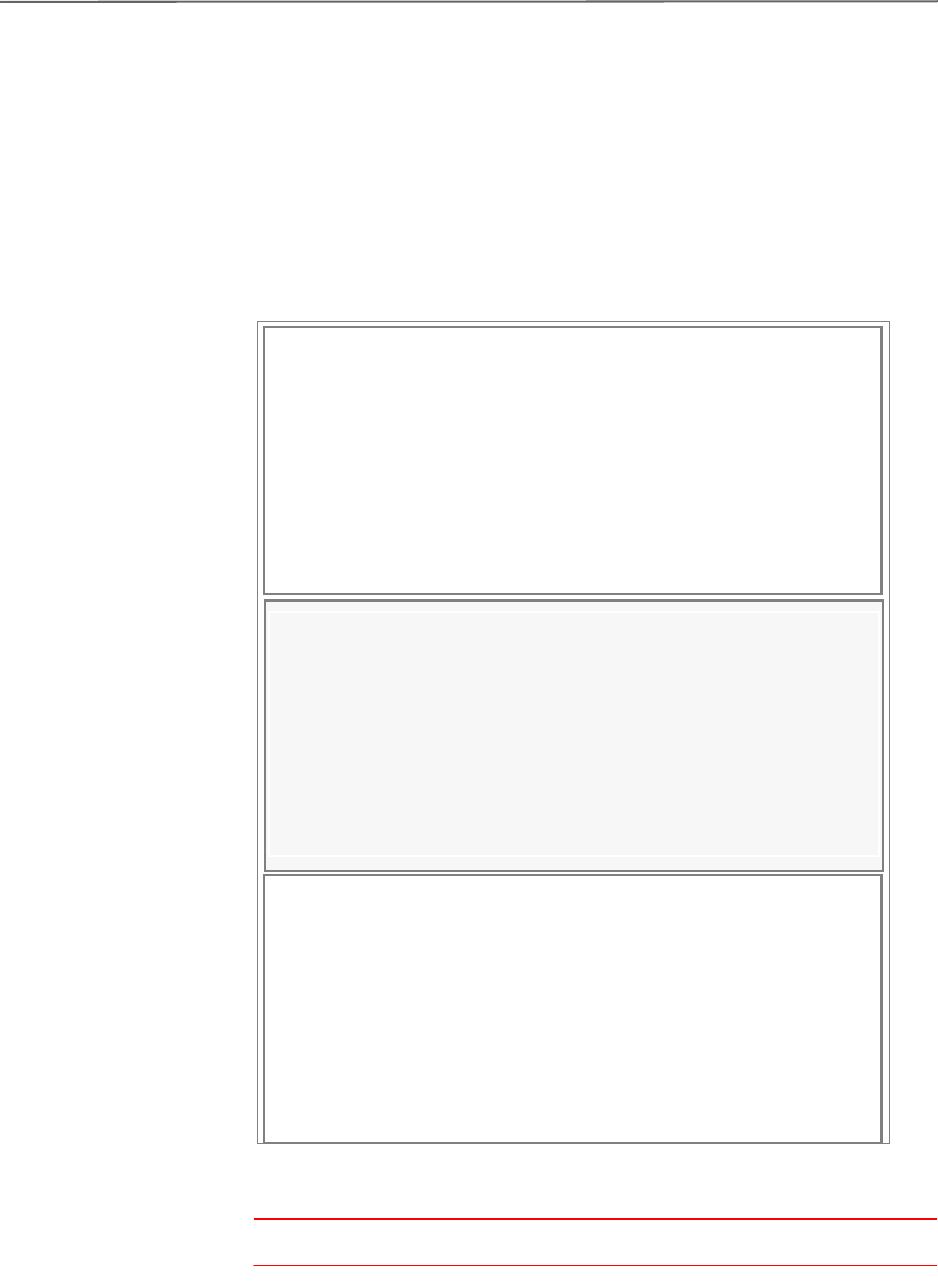
ImportXMLExtract
40
IMPORTXMLE
XTRACT
Use this form set rule (level 2) to import a file which consists of one or more XML
transactions into the GenData program for processing. Using this file, the GenData
program creates the recipient batch, NAFile, POLFile, and NewTrn files that you can
print, archive, or both using the GenPrint and GenArc programs.
You append multiple export files to create the import XML file. The export files are
created using the Documaker Workstation XML Export option. This illustration shows
an example file comprised of export files appended to one another:
Syntax
ImportXMLExtract;;;
NOTE: You can only use this rule for single-step processing.
Although there are no parameters for this rule keep in mind:
Transaction 1
<?xml version="1.0"?>
<Document Type="Docucorp Universal" Version="5.0">
<DocSet>
<ArcEffectiveDate></ArcEffectiveDate>
<Library Name="Docucorp Insurance"></Library>
<Key1 Name=”Company”>DocuInsur</Key1>
<KeyY2 Name=”Lob”>Package Policy</Key2>
<TransactionID Name="PolicyNum">1010j</TransactionID>
…
…
Transaction 2
<?xml version="1.0"?>
<Document Type="Docucorp Universal" Version="5.0">
<DocSet>
<ArcEffectiveDate></ArcEffectiveDate>
<Library Name="Docucorp Insurance"></Library>
<Key1 Name=”Company”>DocuInsur</Key1>
<KeyY2 Name=”Lob”>Package Policy</Key2>
<TransactionID Name="PolicyNum">1110j</TransactionID>
…
…
Transaction 3
<?xml version="1.0"?>
<Document Type="Docucorp Universal" Version="5.0">
<DocSet>
<ArcEffectiveDate></ArcEffectiveDate>
<Library Name="Docucorp Insurance"></Library>
<Key1 Name=”Company”>DocuInsur</Key1>
<KeyY2 Name=”Lob”>Package Policy</Key2>
<TransactionID Name="PolicyNum">1210j</TransactionID>
…
…
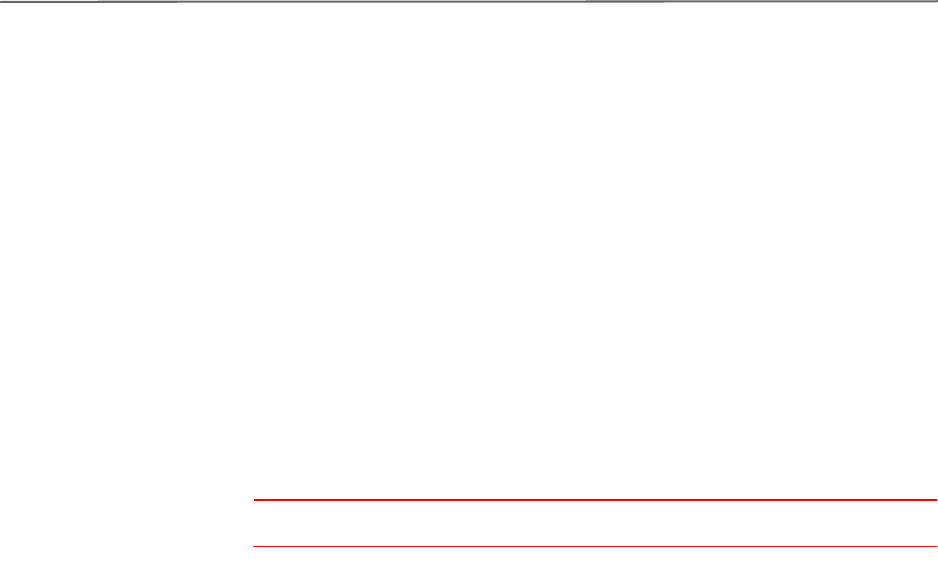
ImportXMLExtract
41
• Create a simplified AFGJOB.JDT file when you use this rule. For instance, omit
these rules:
LoadRcpTbl
LoadExtractData
RunSetRcpTbl
CreateGlbVar
LoadDDTDefs
InitOvFlw
SetOvFlwSym
ResetOvFlw
NOTE: For information on these and other rules, see the Rules Reference.
• Use the NoGenTrnTransactionProc rule because the XML file has no transaction
information on the first line.
• Place the ImportXMLExtract rule in the <Base Form Set Rules> section of the
AFGJOB.JDT file after the BuildFormList rule or any custom rule that creates a
form set.
• In the TRN_File control group, set MaxExtRecLen option to the length of the
longest record in the import file.
• In the TRN_Fields control group, include only the Key1, Key2, and KeyID options.
Set these options to dummy data, because the GVM variables are set to the data
values in the XMLTags2GVM control group during processing.
• Define the XMLTags2GVM control group in your FSISYS.INI file as shown here:
< XMLTags2GVM >
GVM = XMLTag, (Req/Opt)
Where GVM is the name of the GVM variable and XMLTag is the tag name in the
XML file. Include Req or Opt to specify whether it is required or optional. If it is
required and is not present in the XML file, processing will terminate. Here is an
example:
< XMLTags2GVM >
Key1 = Key1, Req
Key2 = Key2, Req
KeyID = TransactionID, Opt
Example Assume you have the following items defined in your master resource library. See XML
File Format on page 22 for an example of an import file in the standard XML file format.
Here is an example of the INI options you need in your FSISYS.INI file:
< Data >
AFGJOBFile = .\deflib\afgjob.jdt
ExtrFile = .\extract\extrfile.xml

ImportXMLExtract
42
< ExtractKeyField >
SearchMask = 1,<?xml
< Key1Table >
XML = XML
< Key2Table >
XML = XML
< KeyIDTable >
XML = XML
< Trigger2Archive >
Key1 = Key1
Key2 = Key2
KeyID = KeyID
RunDate = RunDate
< TRN_Fields >
Key1 = 3,3,N
Key2 = 3,3,N
KeyID = 3,3,N
< TRN_File >
BinaryExt = N
MaxExtRecLen= 175
< XMLTags2GVM >
Key1 = Key1,Req
Key2 = Key2,Req
KeyID = TransactionID,Opt
Here is an excerpt from a sample AFGJOB.JDT file:
< Base Rules >
;RULStandardJobProc;;;
…
< Base Form Set Rules >
;NoGenTrnTransactionProc;;;
;BuildFormList;;;
;ImportXMLExtract;;;
…
…
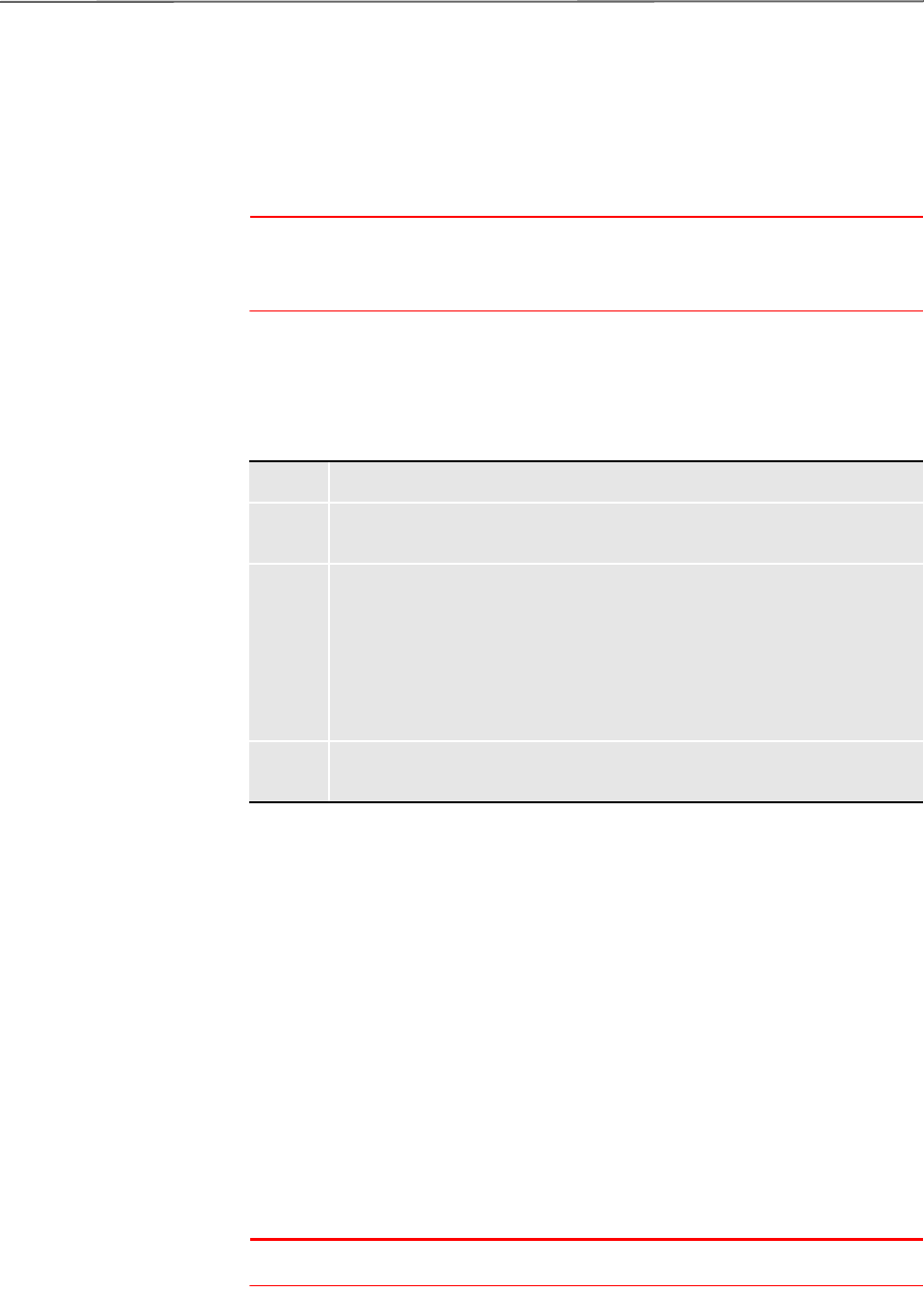
ImportXMLFile
43
IMPORTXMLF
ILE
Use this form set rule (level 2) to import an XML file which specifies a Documaker Server
document layout. The XML document must conform to the Documaker Standard XML
format.
NOTE: Importing an XML document in this manner does not let you map additional
XML information other than that specified in the Documaker Standard XML
format.
Syntax
;ImportXMLFile;;option;
There are several ways to specify the import file in the option parameter:
Keep in mind:
• Create a simplified AFGJOB.JDT file when you use this rule. For instance, omit
these rules:
LoadRcpTbl
LoadExtractData
RunSetRcpTbl
CreateGlbVar
LoadDDTDefs
InitOvFlw
SetOvFlwSym
ResetOvFlw
NOTE: For information on these and other rules, see the Rules Reference.
Option Description
FILE Enter the name and path of the import file.
INI Enter the INI control group and option in which the import file is defined. Separate
the control group and option with a comma.
SCH Enter the search criteria and the file name data, separated by a space.
The name of the file, including its path, that you want to import should be contained
in the record in the file indicated by the ExtrFile option in the Data control group.
The search criteria are one or more comma delimited data pairs, offsets and character
string, used as the search mask for finding the record in the specified file.
The file name data is a comma delimited data pair that defines the offset and length
of the file name in the record defined by the search criteria parameter.
GVM Enter the global variable name (GVM) that contains the file name and path
information.

ImportXMLFile
44
• Use the NoGenTrnTransactionProc rule because the XML file has no transaction
information on the first line.
• Place the ImportXMLExtract rule in the Base Form Set Rules section of the
AFGJOB.JDT file after the BuildFormList rule or any custom rule that creates a
form set.
• In the TRN_File control group, set MaxExtRecLen option to the length of the
longest record in the import file.
• In the TRN_Fields control group, include only the Key1, Key2, and KeyID options.
Set these options to dummy data, because the GVM variables are set to the data
values in the XMLTags2GVM control group during processing.
• Define the XMLTags2GVM control group in your FSISYS.INI file as shown here:
< XMLTags2GVM >
GVM = XMLTag, (Req/Opt)
Where GVM is the name of the GVM variable and XMLTag is the tag name in the
XML file. Include Req or Opt to specify required or optional. If it is required and is
not present in the XML file, processing terminates. Here is an example:
< XMLTags2GVM >
Key1 = Key1, Req
Key2 = Key2, Req
KeyID = TransactionID, Opt
Example These examples show the different ways you can define the import file when you use this
rule. Assume you have the following items defined in your master resource library. For an
example of the standard XML file format, see XML File Format on page 22. Here are
sample INI settings in your FSISYS.INI file:
< Data >
AFGJOBFile = .\deflib\afgjob.jdt
ExtrFile = .\extract\dummy.dat
< ExtractKeyField >
SearchMask = 1,XML_FILE_NAME
< Key1Table >
XML = xml
< Key2Table >
XML = xml
< KeyIDTable >
XML = xml
< Trigger2Archive >
Key1 = Key1
Key2 = Key2
KeyID = KeyID
RunDate = RunDate
< TRN_Fields >
Key1 = 1,3,N
Key2 = 5,5,N
KeyID = 10,4,N
< TRN_File >
BinaryExt = N
MaxExtRecLen = 175
< XMLTags2GVM >
Key1 = Key1,Req

ImportXMLFile
45
Key2 = Key2,Req
KeyID = TransactionID,Opt
Here is a sample of the DUMMY.DAT file, pointed to by the ExtrFile option in the Data
control group in your FSISYS.INI file.
01
15
XML_FILE_NAME This is a dummy extract file.
Using the File Option
This example imports the F_FILE.XML file from the \export directory. Using this file,
the GenData program creates the recipient batch, NA, POL, and NewTrn files needed
for GenPrint and GenArc processing.
Here is an excerpt from a sample AFGJOB.JDT file using the File option:
< Base Rules >
;RULStandardJobProc;;;
…
< Base Form Set Rules >
;NoGenTrnTransactionProc;;;
;BuildFormList;;;
;ImportXMLFile;;File=.\Export\F_File.xml;
…
Using the INI Option
This example imports the F_INI.XML file from the \export directory. Using this file, the
GenData program creates the recipient batch, NA, POL, and NewTrn files needed for
GenPrint and GenArc processing.
In addition to the INI options defined previously, you must also include the this option:
< Import_Data >
Import_File = .\Export\F_File.xml\
Here is an excerpt from a sample AFGJOB.JDT file:
< Base Rules >
;RULStandardJobProc;;;
…
< Base Form Set Rules >
;NoGenTrnTransactionProc;;;
;ResetOvFlw;;;
;BuildFormList;;;
;ImportNAPOLFile;;INI=Import_Data,Import_File;
…
Using the SCH Option
This example imports XML files (F_SCH1.XML, F_SCH2.XML, and F_SCH3.XML)
based on the content of a line in the file pointed to by the ExtrFile option in the Data
control group. Using these files, the GenData program creates the recipient batch, NA,
POL, and NewTrn files needed for GenPrint and GenArc processing.
This INI option differs from the one defined in the assumed MRL definition:
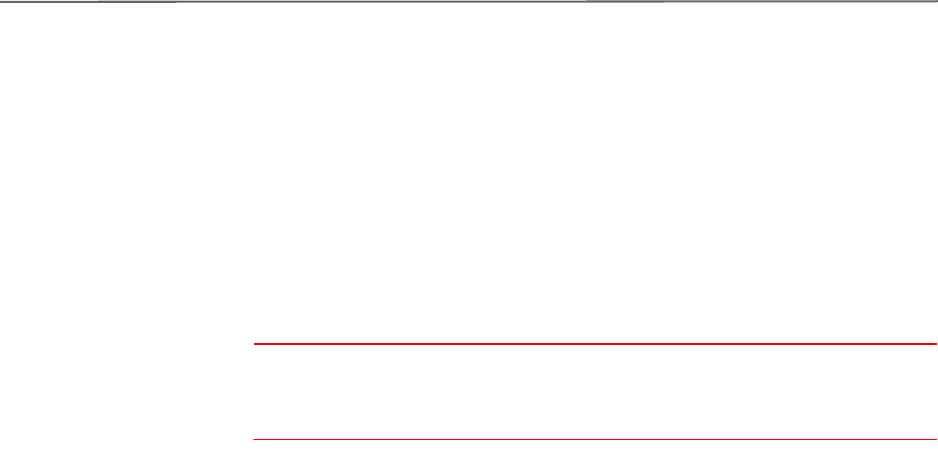
ImportXMLFile
46
< Data >
ExtrFile = .\extract\F_Sch.DAT
Here is an excerpt from the F_SCH.DAT file in the \extract directory which contains an
entry (path and file name) for each XML file to import:
XML_FILE_NAME .\export\F_SCH1.xml
XML_FILE_NAME .\export\F_SCH2.xml
XML_FILE_NAME .\export\F_SCH3.xml
…
NOTE: This option lets you import and process multiple XML files because of the way
the file name and path are specified—one file per entry in the file specified in the
ExtrFile option in the Data control group.
Here is an excerpt from a sample AFGJOB.JDT file:
< Base Rules >
;RULStandardJobProc;;;
…
< Base Form Set Rules >
;NoGenTrnTransactionProc;;;
;BuildFormList;;;
;ImportXMLFile;2;SCH=1,XML_FILE_Name 15,19
Using the GVM Option
This example imports data from a XML file based on file name contained in the GVM
variable called Import_File. Using this file, the GenData program creates the recipient
batch, NA, POL, and NewTrn files needed for GenPrint and GenArc processing.
Any valid GVM variable can be used no matter how it is created or assigned.
This example creates the GVM variable, ImportXMLFile_GVM, by including this INI
option and adding its definition to the TRNDFDFL.DFD file:
< GentrnDummyFields >
ImportXMLFile_GVM = .\export\F_GVM.xml
Here is an excerpt from a sample AFGJOB.JDT file:
< Base Rules >
;RULStandardJobProc;;;
…
< Base Form Set Rules >
;NoGenTrnTransactionProc;;;
;BuildFormList;;;
;ImportXMLFile;;GVM=ImportXMLFile_GVM
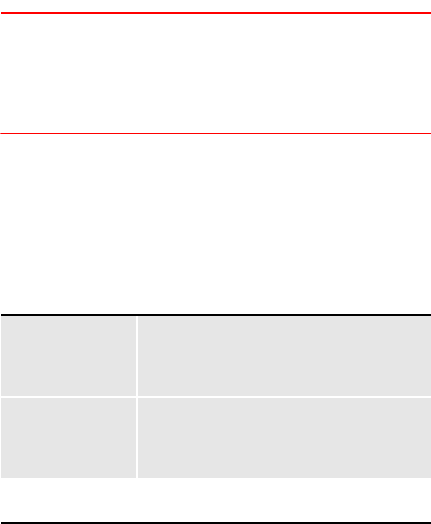
47
Chapter 4
Using XML Extract Files
You can set up Documaker Server to use extract files in
XML format. To do so, you must first set up the system,
see Setting Up the XML Add-On on page 17 for more
information.
NOTE: During setup, keep in mind the SuppressDlg
option is not applicable for XML extract files.
This option only applies when you are
importing and exporting XML files.
Once you have set up the XML Add-On, you can use
these rules to create an alternative data search method so
you can do direct XML mapping within the Documaker
Server:
This chapter contains information on these topics:
• Mapping Formatted Data from Extract Files on
page 48
• Searching an XML Extract File on page 50
• Handling Overflow on page 51
• Triggering Forms and Images on page 52
• Mapping Formatted Data from Extract Files on
page 48
Rule Description
UseXMLExtract Uses the extract list loaded by the
transaction as the source of the XML
tree.
XMLFileExtract Assumes the extract list contains the
name of an external file which is the
source of the XML tree.
For more information, see the
Rules Reference.

Mapping Formatted Data from Extract Files
48
MAPPING
FORMATTED
DATA FROM
EXTRACT
FILES
You can map data with XML markup directly into multi-line variable fields. This lets you
specify...
• End of paragraph or end of line syntax (including CR/LF)
•Text formatting
• Paragraph attributes
•Bullets
and so on. Whatever is supported in Skywire Software standard XML file format for text
areas is now supported for multi-line fields.
This feature is designed for data mapping from an XML extract file into a multi-line
variable field in a FAP file. The data on the XML node (element and its descendants)
being mapped must comply with the standard Skywire Software XML format.
This feature adds new syntax for XPath, which is not W3C standard XPath syntax. When
XPath is specified, you can append the following:
.xml()
and it will return a string of XML for data mapping.
Data mapping is done by supporting the mapped data that contains the XML string —
just as if it had been loaded from a file on disk.
Keep in mind...
• The data must start with element named FIELD.
• If the text area can possibly overflow to next page, set the Can Grow and Can Span
Pages attributes as desired on the multi-line field. Also determine whether to set the
Can Grow attribute on the image. In most cases, you should choose to include the
TextMergeParagraph rule to defer formatting of text areas until embedded fields are
mapped. In addition, you can use the CanSplitImage rule when you are not using the
Can Span options and want the image to break across pages if the position of the
image on the page warrants this action.
• You cannot have other FAP objects below the multi-line field on the same image.
When these are pushed down, extra pages can be created.
• You should include the CheckImageLoaded rule when mapping multi-line variable
fields, unless the FAP files are loaded via INI options
Here is an example of an XML extract file:
<?xml version="1.0" encoding="UTF-8"?>
<My_Extract_Data>
<FIELD><P>First line of data.</P><P>End of <B><U>field</U></B>
data.</P></FIELD>
<KeyInfo PolicyNumber="APV 10003" State="OH" LOB="Auto"
AgencyCode="5432" PrintType="Duplex" PrintAgentCopy="False"
System_Date="06/02/2003"/>
<Print_Header>
....
Based on the example, this XPath syntax returns the text highlighted above in red:
/descendant::My_Extract_Data/FIELD.xml()

Mapping Formatted Data from Extract Files
49
Since the XML string returned from XPath can exceed the 1K limit of regular data
mapping, the Move_It rule was enhanced to handle the mapping of an unlimited size of
data (but limited to available memory).
Using the Move_It rule To get the desired result, you must add the B flag to the Move_It rule format mask. Here
is an example DDT line using both examples from above:
;0;0;FIELD;0;1024;FIELD;0;1024;B;move_it;!/
descendant::My_Extract_Data/FIELD.xml();N;N;N;N;3715;2899;11010;

Searching an XML Extract File
50
SEARCHING
AN
XML
E
XTRACT FILE
Keep in mind the extract list and the XML tree are separate. Once the XML tree is loaded,
it remains loaded and can be searched by subsequent rules — just like any extract list.
The system lets you use these search methods:
• An XDB token reference such as ?TOKEN looked up in the XDB to get the actual
search text
• The legacy Offset,Mask method such as 10,HEADERREC)
• An XML search text, such as !/descendant::Item
In most cases, the XBD token reference will be the preferred method.
An XDB entry can return either a legacy offset/length search mask or an XML search
path. XML search masks must begin with an exclamation mark (!). The leading
exclamation mark is not actually sent to the search routine.
You can use text movement and formatting rules, like Move_It, MoveNum, FmtDate,
and FmtNumber, to do simple operations, but keep in mind some of the more
complicated options may not work.
For instance, Move_It supports a same record flag. This does not work in XML searches.
Likewise, Move_Num supports several binary input data types like BCD and you cannot
include those in XML at present.
More complicated rules that have multiple search criteria like SetAddr, SubExtractList,
and Concat do not work with XML files.

Handling Overflow
51
HANDLING
OVERFLOW
The XML search infrastructure has position support.
/descendant::Forms/child::form[position()=2]/child::field1
The 2 in this case indicates you want the second form child. Since you would not want to
write the search to work with every explicit number, you must indicate where the overflow
variable fits into the equation, as shown here:
/descendant::Forms/child::form[position()=****]/child::field1
The system first scans the search to see if a replacement is needed for the overflow value.
In this case, it would insert the 2 (taken from the overflow variable value) and then do the
actual XML search.
You can also handle overflow within overflow by specifying an overflow variable name in
the search. For instance, suppose you have multiple cars and each car can have multiple
drivers.
<car>
<driver>Tom<driver/>
<driver>Tim<driver/>
<car/>
<car>
<driver>Sally<driver/>
<car/>
If you had two overflow variables, one working for car and one for driver, you could create
a search like this:
/descendant::car[**carvar**]/child::driver[**drivevar**]
Where the system gets two overflow variables and insert them into the search text.
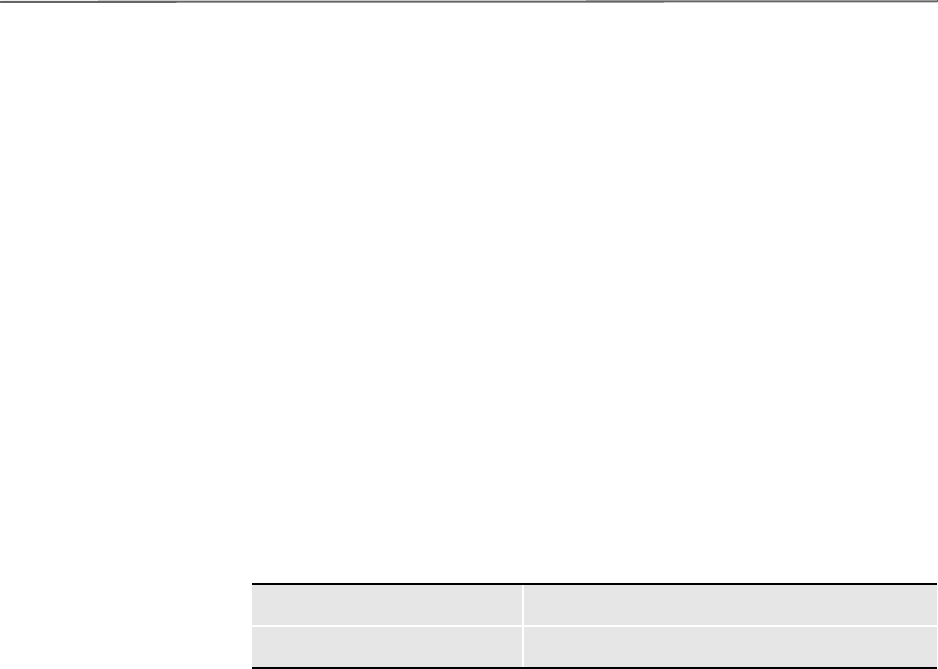
Triggering Forms and Images
52
TRIGGERING
FORMS AND
IMAGES
You can do simple triggering based upon the existence of a node. For example, this
/child::car
would trigger a form if car is a child of the root node. Referring back to the earlier example,
you could make it trigger two of the same forms because there are two cars.
The system supports value matching. So you can do the following:
/child::car[child::driver="Tom"]
Or, you can use the RecipIf rule to trigger an image with custom rule parameters, as
shown in this example:
A={!/child::car/child::driver 1,7}::if
(A='Tom')::return("^1^")::end::;
If there is such a value in that element in the XML file, the image would trigger. For this
to work, define the offset of the variable attribute as 1 and the length of the data you want
to compare.
You can also use XML search strings such as these:
Using the ElementText
option
Note that when the XPath specifies an element node such as
//BookStore/Book
it returns the element handle and either its element text or its first attribute value if there
is no element text. If you want to use this to map a field, you can use the ElementText
INI option to better control what XPath returns. For instance, here is an excerpt from an
XML file:
...
< BookStore >
< Book Category = "Fiction"> </Book>
...
Since there is no text for the element/node Book in this excerpt, this XPath statement
returns the first attribute value, which equals Fiction.
//BookStore/Book
With the ElementText option set to Yes, which is the default, nothing is returned. If you
set this option to No, the first attribute is returned. Here is an example of the
ElementText option:
< XPath >
ElementText = Yes
This string Finds
!descendant::PolicyNumber The PolicyNumber value
!descendant::Forms/child::Form All forms
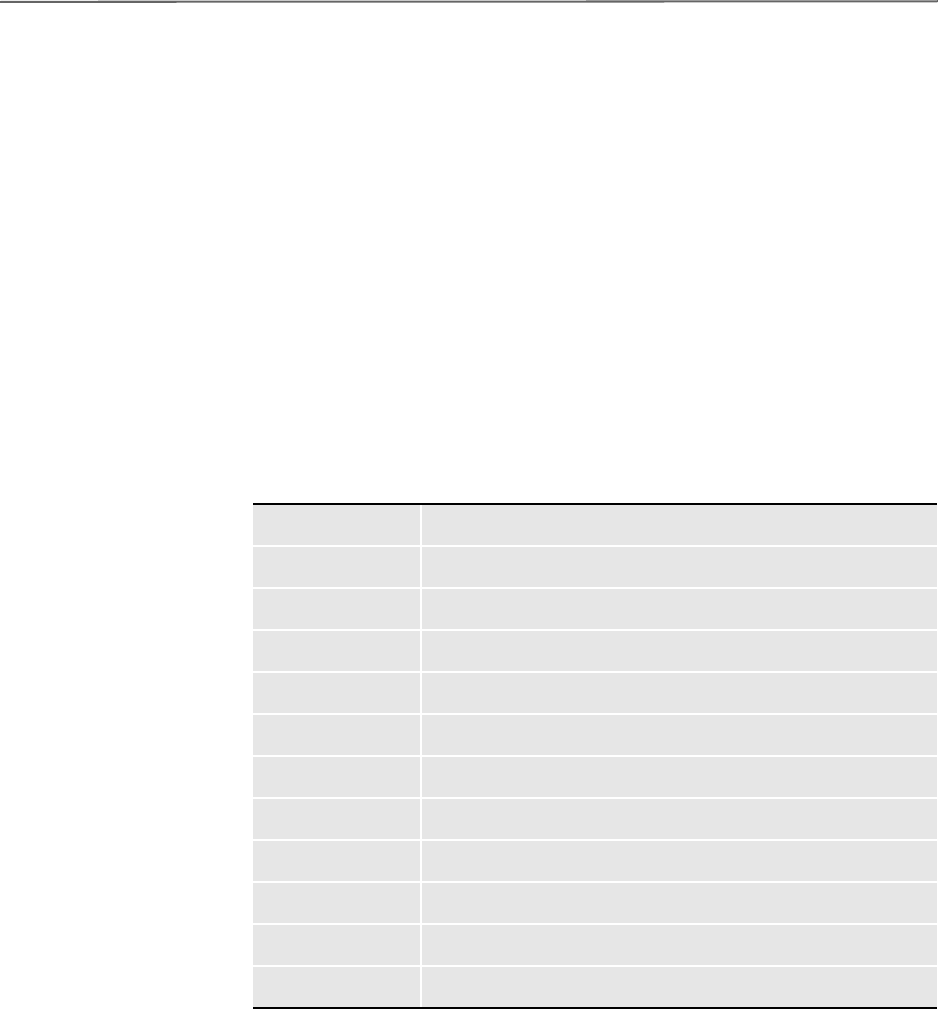
Using XPath
53
USING XPATH
XML path locator (XPath) complies with the standard syntax specifications (W3C
standards) found in the XML Path Language, but differs in some regards because it was
developed to support the Rules Processor in Documaker Server. Because this version of
XPath has some limitations, you should check the syntax using the XPATHW32 utility.
XPATH SYNTAX
Here are examples of the valid axes, function calls, signs, and operators to help you
understand and use the XPath syntax.
Axes
You have these axes:
When used, an axis is always followed by a context node name separated by two colons
(::). For example, the syntax descendant::para locates all para descendants of the current
context node.
Name Used to locate the
ancestor Ancestors of the current context node
ancestor-or-self Ancestors of the current context node and itself
parent Parents of the current context node
descendant Descendants of the current context node
descendant-or-self Descendants of the current context node and itself
attribute Attributes of the current context node
child Children of the current context node
following-sibling Following siblings of the current context node
following Context nodes that follow the current node
preceding-sibling Preceding siblings of the current context node
preceding Context nodes that precede the current node
self Self context node
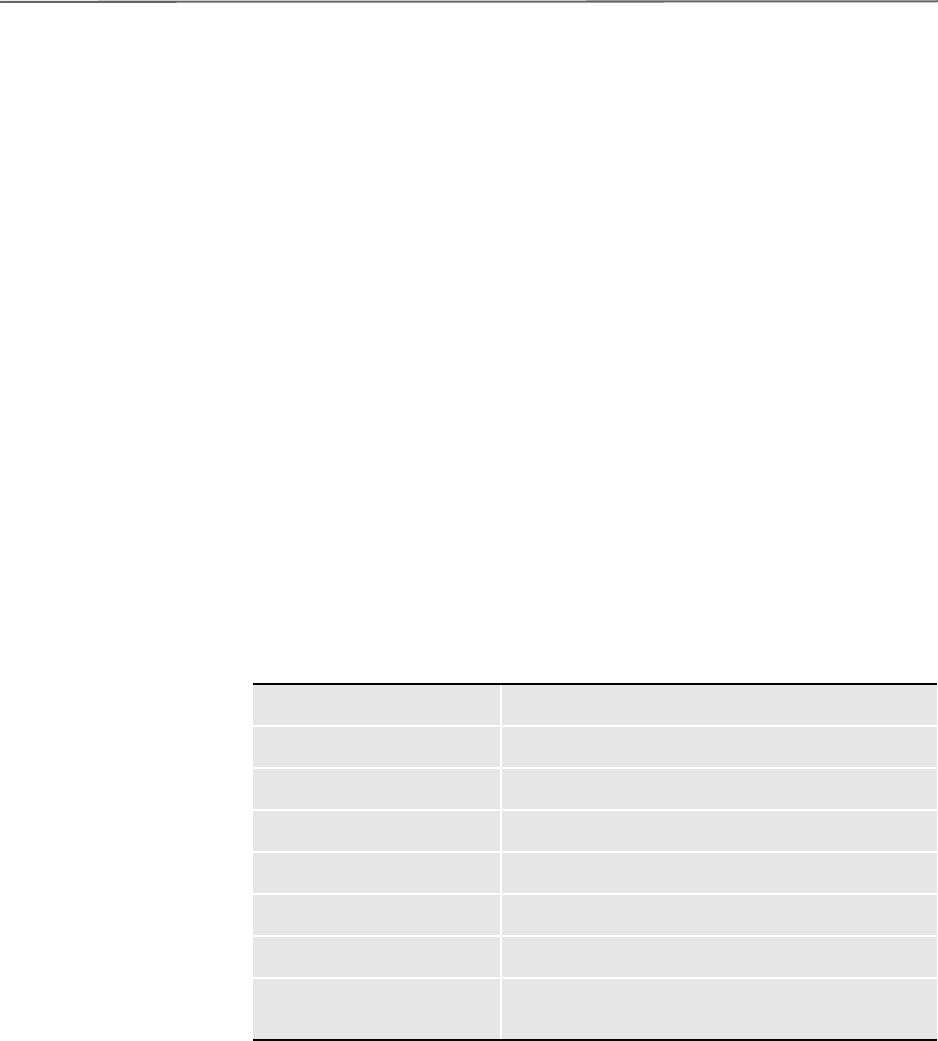
Using XPath
54
Symbols
You can use these calculation operators:
Where !=, <, >, + can be used as calculation operators in function position(), such as,
[position()=2], [position()!=2], [3+i], [position()<5], and so on. The equals sign (=) is also
used for evaluations such as @Name=’Auto’.
You can use these symbols in a valid XPath:
Where the pair of brackets ( [ ] ) enclose a condition for evaluation, the at symbol (@) is
an abbreviation of the attribute, the asterisk (*) is used for a wild card search, and others
are used in a valid XPath, as shown below.
Functions
You can use these functions:
=!=<>+-
///*::[]@
Function Returns
concat(string, string, string… The concatenation of the strings
last() The last element in the selection
name() The name of the selected elements
node() The node names
position() The position of selected elements
text() The text of selected elements
string(object) The string from the context node
xml() The output buffer containing all descendents of the
specified element
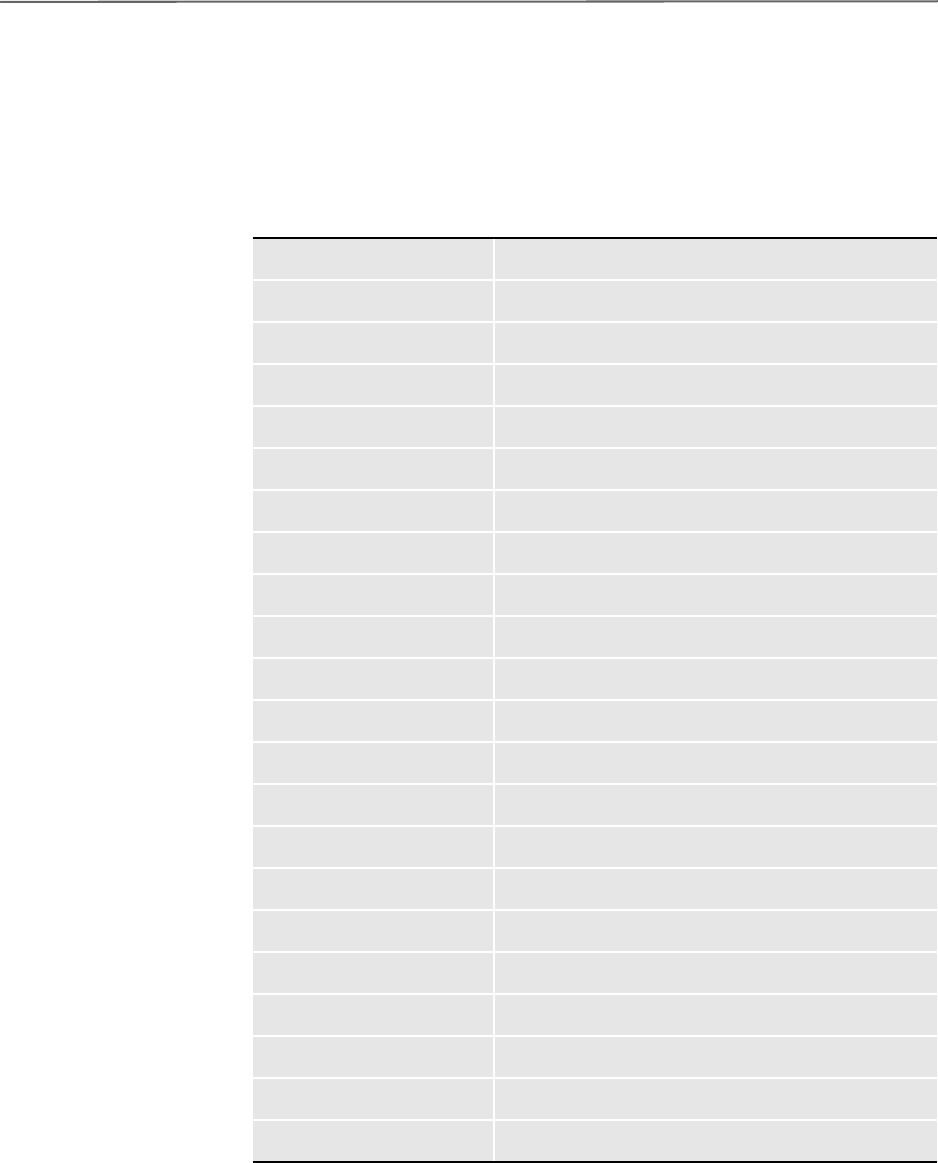
Using XPath
55
Expressions
You can use abbreviated syntax with XPath. Here are the valid expressions:
Abbreviated syntax Full syntax
* child::*
para child::para
chapter/para child::chapter/child::para
para[1] child::para[position()=1]
/chapter/para[last()] /child::chapter/child::para[position()=last()]
text() child::text()
node() child::node()
para[@type] child::para[attribute::type]
para[@type="warning"] child::para[attribute::type="warning"]
para[@type="warning"][2+i] child::para[attribute::type="warning"][position()#2+i]
chapter[title] child::chapter[child::title]
chapter[title=’Introduction’] child::chapter[child::title="Introduction"]
doc//para child::doc/descendant-or-self::node()/child::para
@* attribute::*
@type attribute::type
[@name=’warning’] [attribute::name=’warning’]
//para /descendant-or-self::node()/child::para
. self::node()
.//para self::node/descendant-or-self::node()/child::para
.. parent::node()
../chapter parent::node()/child::chapter
../@type parent::node()/attribute::type
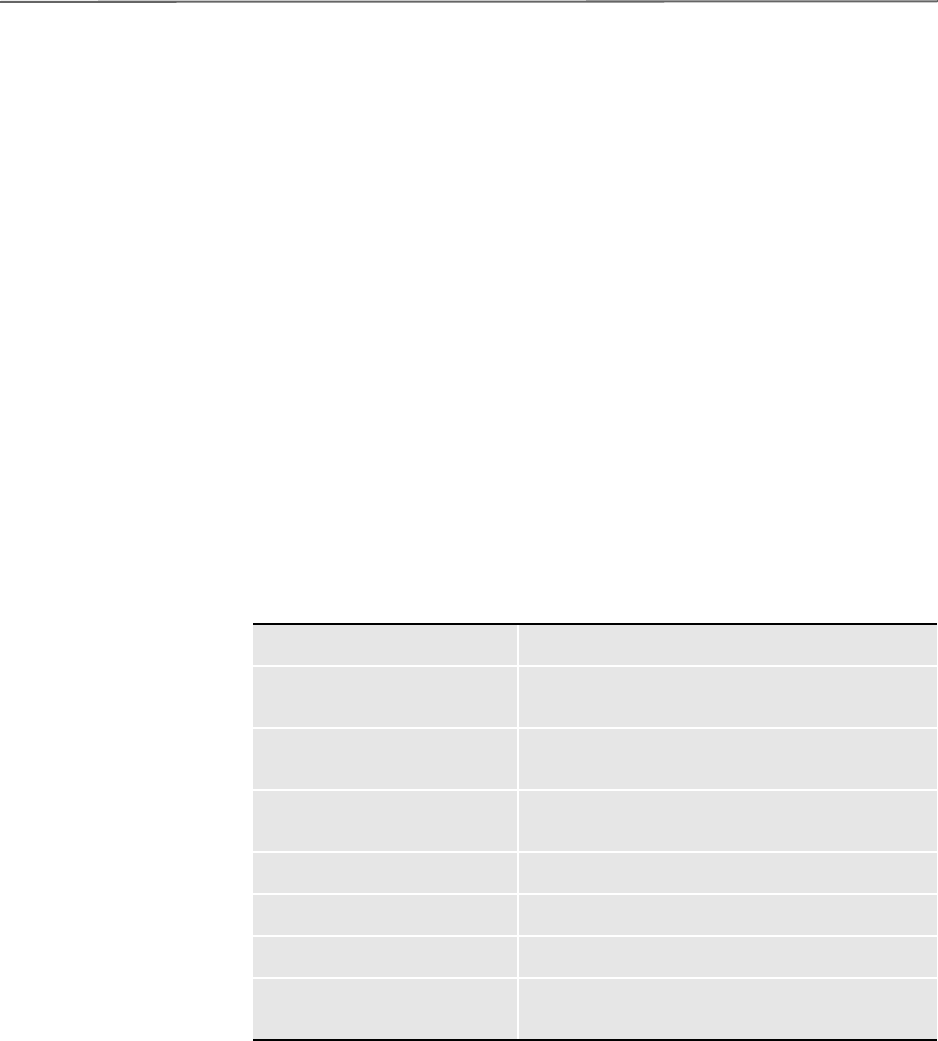
Using XPath
56
USING THE XPATH TESTING UTILITY
Here is the syntax of the XPATHW32 testing utility:
xpathw32 /f= xml file /e=starting node /x= search path
The /e parameter specifies the node where the search of the XPath starts. You can omit
this parameter if you want the search to start from the beginning. A pair of double quotes
is required to enclose the search mask. Here is an example:
xpathw32 /f=“d:\test\test.xml” /x=“Forms/Form/Car[@Name=’Car1’]/
text()”
This example searches the node Car with the attribute Name=“Car1”. It then retrieves its
text and returns a text string similar to this one:
Text string = Car 1 is Toyota
These examples illustrate some search paths most frequently used in Documaker RP
applications. Run the testing tool yourself for the answer.
Example 1 These examples search for a list of nodes with or without conditions. Keep in mind a
condition is always placed within brackets, as shown here: [condition].
This Returns
Forms/Form/Car A list of the Car nodes
Forms/Form/
Car[@*][position()<3]
The first two nodes in the Car node list
Forms/Form/
Car[@Name][position()>1]
A list of the Car nodes above the first element
Forms/Form/
Car[text()][position()!=2]
A list of the Car nodes, excluding the second one
Forms/Form/Car[Model] A list of Car nodes that have a child named Model
Forms/Form/Car/node() A list of children nodes under the Car nodes
Forms/Form/Car/Coverage[1] A list of first child Coverage under the Car nodes
Forms/Form/
Car[@Name=’Car1’]/Coverage
A list of nodes Coverage under Car1
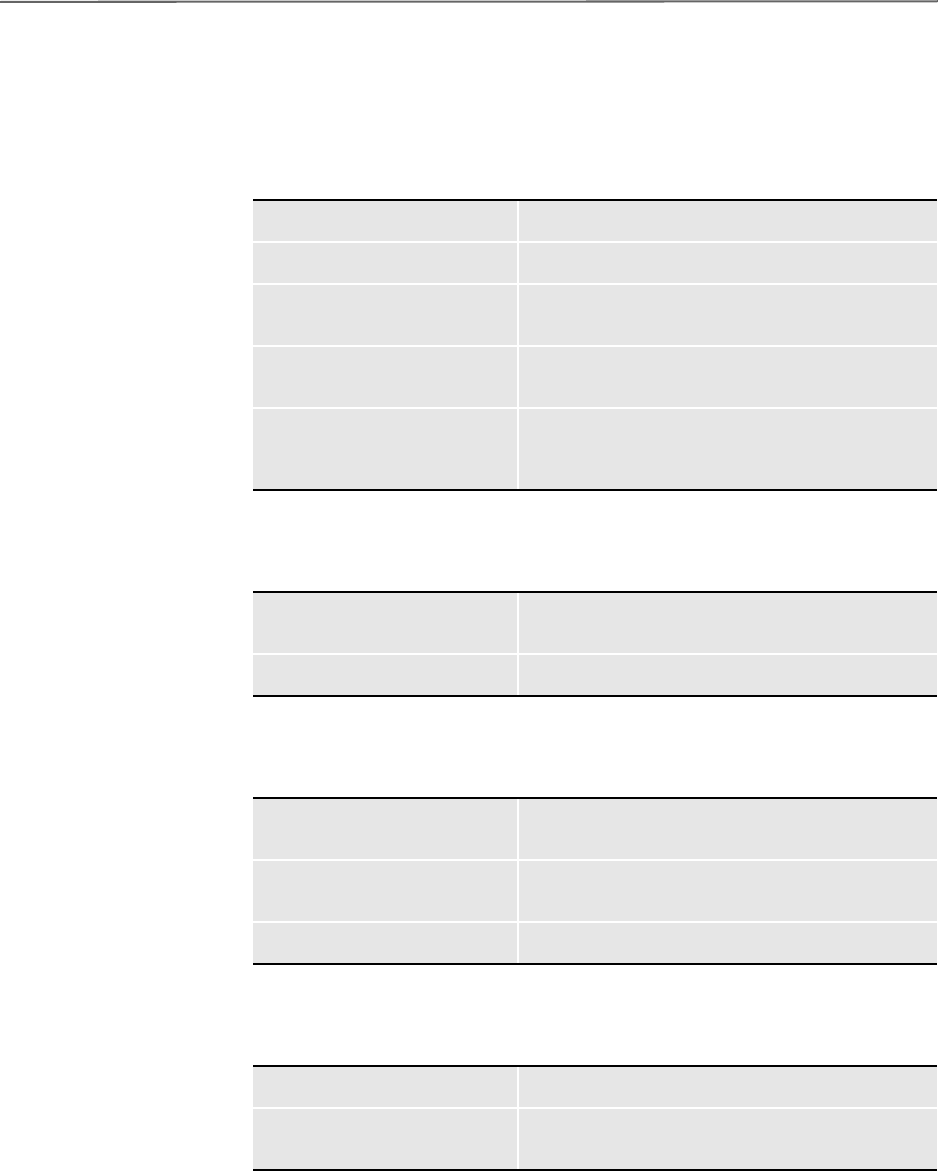
Using XPath
57
Example 2 These examples search for the path for a single element:
Example 3 These examples search for a list of attributes:
Example 4 These examples search for a single attribute:
Example 5 These examples search for a list of text strings:
This Produces
Forms/Form/Car[@*][1] The first node of the Car list with any attributes
Forms/Form/Car[@Name][last()] The last node of the Car list with the attribute Name
Forms/Form/
Car[@Name=’Car1’]
The Car node with attribute name Car1
Forms/Form/
Car[Model=’Toyota’]
The Car node with a child Model that has a text string of
Toyota.
Forms/Form/
Car[Model=’Nissan’]/Coverage[3]
The third child node of Coverage under the parent node
Car that has a child named Model with a text string of
Nissan
This Produces
Forms/Form/
Car[Model=’Nissan’]/@*
A list of attributes of the Car node that have a Child node
named Model with a value of Nissan
Forms/Form/Car/@Name A list of the attribute Name that has a parent node of Car
This Produces
Forms/Form/
Car[Model=’Honda’]/@*[1]
The first attribute of the Car node that has a child named
Model with a value of Honda
Forms/Form/Car
[Model=’Honda’]/@Name
The attribute Name of the Car node that has a child
named Model with a value of Honda
Forms/Form/Car[1]/@Name The attribute Name of first Car node
This Produces
Forms/Form/Car/text() A list of text strings of Car nodes
Forms/Form/Car[Model]/text() A list of text strings of Car nodes which have children
named Model
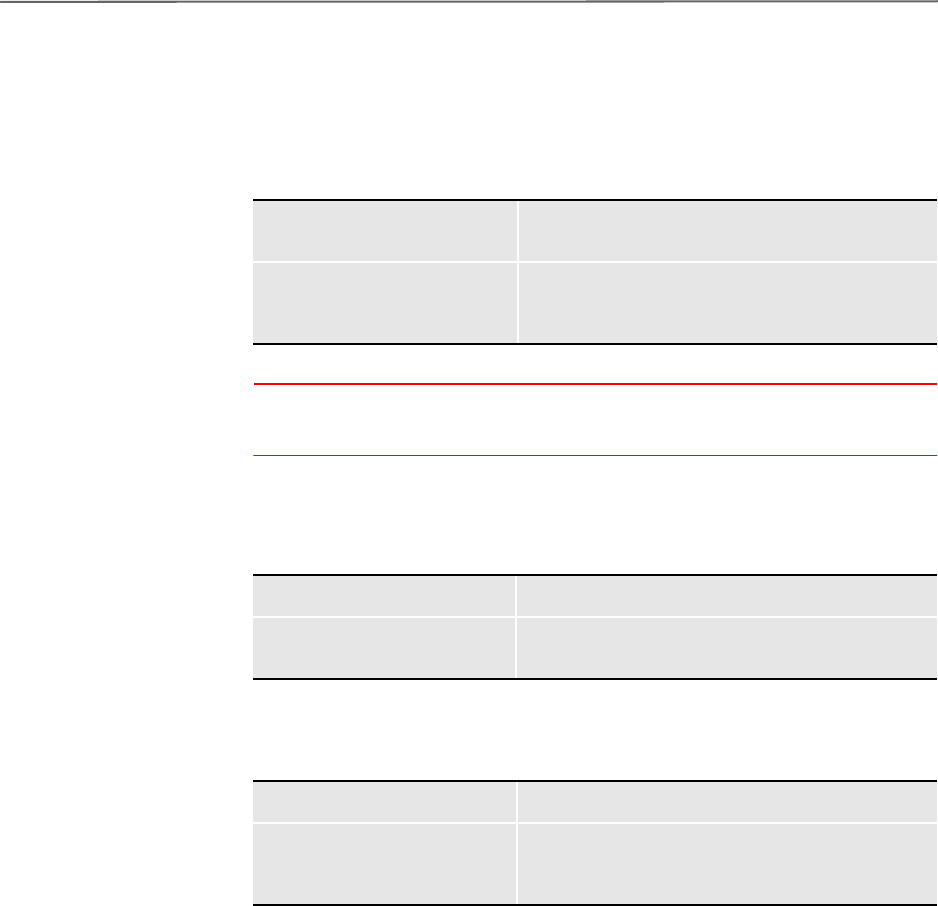
Using XPath
58
Example 6 These examples search for a single text string:
NOTE: There are three types of returned lists: elements, attributes, and text. When a list
includes only one element, the structure returns a single element instead of a list.
Example 7 These examples search for the name of elements:
Example 8 These examples concatenate text strings:
This Produces
Forms/Form/
Car[Model=’Toyota’]/text()
The text string of the Car node which has a child name
Model with a value of Toyota
Forms/Form/
Car[Model='Honda']/parent::*/
text()
The text string of the node Form which has a child named
Car that, in turn, has a child named Model with a value of
Honda
This Returns
//*[name()=’Car’] “Car” nodes
Forms/Form/*[name()=’Car’][2]/
text()
A text string of second “Car” nodes
This Returns
concat('Car1', 'and', 'Car2')" A string “Car1 and Car2”
concat(//Car[@Name='Car1'],
'and',//Car[@Name='Car3'], 'are
imported cars.'))
A string “Toyata and Nissan are imported cars.”
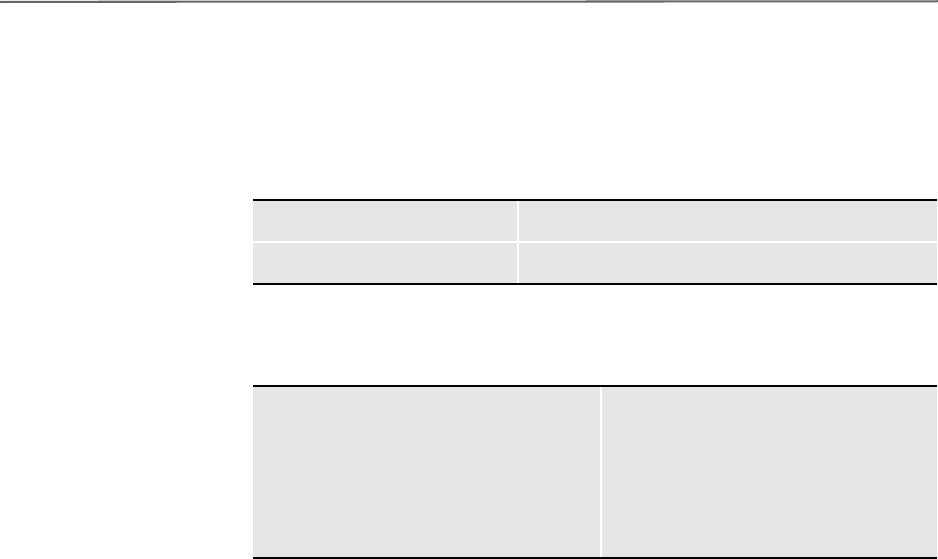
Using XPath
59
Example 9 These examples search for strings:
Example 10 This examples returns a buffer that contains all descendants of the specified element:
Note that the XPath must point to a single element, such as Car[2] in the example.
This Returns
string(‘ 12345’) The string “ 12345”
string(//Car[2]/*[1]) The string of the first child of the second Car node
This Produces
xpathw32 /f=cars.xml /x="//Car[2]/xml() <Car Name=" Car2">Car 2 is Honda
<Model>Honda</Model>
<Coverage>Cover 4</Coverage>
<Coverage>Cover 5</Coverage>
<Coverage>Cover 6</Coverage>
</Car>

Using XPath
60
EXAMPLE XML FILE
Here is an example XML file (TEST.XML):
<?xml version="1.0" encoding="UTF-8"?>
<!--Sample XML file generated by XML Spy v4.2 U (http://
www.xmlspy.com)-->
<Forms>
<Form>
<Car Name="Car1">Car 1 is Toyota
<Model>Toyota</Model>
<Coverage>Cover 1</Coverage>
<Coverage>Cover 2</Coverage>
<Coverage>Cover 3</Coverage>
</Car>
<Car Name="Car2">Car 2 is Honda
<Model>Honda</Model>
<Coverage>Cover 4</Coverage>
<Coverage>Cover 5</Coverage>
<Coverage>Cover 6</Coverage>
</Car>
<Car Name="Car3">Car 3 is Nissan
<Model>Nissan</Model>
<Coverage>Cover 7</Coverage>
<Coverage>Cover 8</Coverage>
<Coverage>Cover 9</Coverage>
</Car>
</Form>
</Forms>
61
Chapter 5
Using DAL XML
Functions and XPath
The DAL XML API extends existing DAL functionality
so Documaker Server applications can access a specified
XML document and retrieve XML data via a DAL
script.
This chapter discusses:
• Scenarios on page 62
• Using XML Built-in Functions on page 63
• Using the XML Path Locator on page 67

Scenarios
62
SCENARIOS
There are two scenarios in which you would use DAL XML API functions:
Scenario 1 A Documaker Server program, such as GenData, loads an XML document and extracts
the XML tree at the transaction level using the XMLFileExtract rule. This rule creates a
list type DAL variable with a default name of %extract and pushes it onto the DAL stack.
Then you can call other XML API functions in a DAL script to access the XML tree and
extract XML data.
Here are examples of the form set and image rules you would add and a DAL script that
would call the XML API functions.
• Add this in the AFGJOB.JDT file:
;XMLFileExtract;2;File=.\deflib\test.xml
The rule loads the XML file and creates a list type DAL variable to pass the XML
tree to the XML API function.
• Add this in your DDT file:
;0;0;DALXMLSCRIPT;0;9;DALXMLSCRIPT;0;9;;DAL;Call("TEST.DAL");N;N;N;
N;4792;19444;11010;
TEST.DAL is the name of the DAL script file.
• Here is an example of the DAL script:
%listH=XMLFind(%extract, “Forms”, “Form”);
#rc=XMLFirst(%listH);
if #rc=0
return(“Failed to XMLFirst”);
end
aStr=XMLGetCurText(%listH);
return(aStr);
%listH denotes a list type DAL variable. #rc denotes an integer type DAL variable.
aStr denotes a string type DAL variable.
Scenario 2 You can also load the XML document and create the XML tree at a specific image field
by calling the LoadXMLList rule from a DAL script. You must set the calling procedure
in the DDT file as shown in Scenario 1.
Here is an example of DAL script file:
%xListH=LoadXMLList("test.xml");
%listH=XMLFind(%xListH,"Forms","Form/@*");
aStr=XMLNthAttrValue(%listH,2);
#rc=DestroyList(%xListH);
return(aStr);
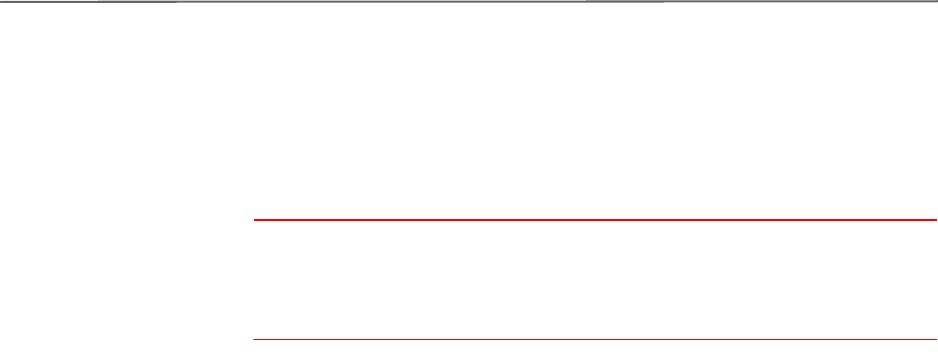
Using XML Built-in Functions
63
USING XML
B
UILT-IN
FUNCTIONS
The DAL XML API function are registered in keywords, called built-in functions. A DAL
XML built-in function performs an operation on a set of parameters and returns a DAL
variable in one of the three types: list, integer, or string.
NOTE: A list type DAL variable always begins with a percent sign (%) and an integer type
DAL variable always begins with an octothorpe (#). Floating decimal numbers
begin with a dollar sign ($). A string type DAL variable does not begin with a
leading symbol.
Here are brief descriptions of the DAL XML built-in functions:
LoadXMLList
%xListH=LoadXMLList(filename);
This function loads a XML document and extracts a XML tree. The only required input
parameter is the XML document file name. This function returns the XML tree in the list
type DAL variable.
For an example, see the DAL script in scenario 2.
DestroyList
#rc=DestroyList(%xListH);
This function destroys the XML tree created by LoadXMLList. The input parameter is a
list type DAL variable that passes the XML tree handle. This function returns one (1) for
success or zero (0) for failure. The return DAL variable is of integer type.
For an example, see the DAL script in scenario 2.
GetListElem
aStr=GetListElem(%xListH, SrchCriteria);
This function has two input parameters. The first is a list type DAL variable that passes
the XML tree handle. The second is a string type DAL variable that passes the search
criteria.
The search criteria can be a node name, followed by up to five pairs of attribute names
and values. If success, it returns a text string which contains the first element that matches
the search criteria.
This example returns the text of the first matched element node Form with the attribute
name ID and value Agent.
%xListH=LoadXMLList(“test.xml”);
aStr= GetListElem(%xListH, “Form”, “ID”, “Agent”);
return(aStr);
IsXMLError IsXMLError;
This function checks the list for error status. The input parameter is a list type DAL
variable that passes the XML tree handle. This function returns one (1) if there no errors
occur or zero (0) if errors do occur.

Using XML Built-in Functions
64
XMLFind Result=XMLFind(%xListH, srchnode, xpath);
This function locates the XML path from the extracted XML tree and returns a list of
matched elements to a list type DAL variable or a matched text to a string type DAL
variable, depending on the search request.
This function has three input parameters. The first is a list type DAL variable passed from
either the XMLFileExtract rule or the LoadXMLList built-in function. The second is a
string type DAL variable that passes a node name from which the search starts. The third
is also a string type DAL variable that passes the XML location. If you omit the second
parameter, the search starts from the root of the XML tree.
Result can be a list type or a string type DAL variable.
For an example, see the next section.
XMLFirst
#rc=XMLFirst(%listH);
This function takes one input parameter, a list type DAL variable. The variable can be
either a XML tree or a list of extracted elements. In any cases, it sets the current pointer
to the first element in the specified list. This function returns one (1) for success or zero
(0) for failure.
This example returns text from the last element in the list.
aStr="Text not found!";
%xListH=LoadXMLList("test.xml");
%listH=XMLFind(%xListH,"Forms","Form[text()]");
#rc=XMLFirst(%listH);
loop:
if #rc=0
goto endloop:
end
aStr=XMLGetCurName(%listH);
#rc=XMLNext(%listH);
goto loop:
endloop:
#rc=DestroyList(%xListH);
return(aStr);
XMLNext #rc=XMLNext(%listH);
This function is similar to XMLFirst. It sets the current pointer to the next node or
element in the specified list and returns one (1) for success or zero (0) for failure.
For an example, see XMLFirst.
XMLGetCurName
aStr=XMLGetCurName(%listH);
This function takes one input parameter of the list type. It can be either an XML tree or
a list of elements. It returns the element name from the current element. The return value
is the string type.
For an example see XMLFirst.

Using XML Built-in Functions
65
XMLGetCurText aStr=XMLGetCurText(%listH);
This function is similar to XMLGetCurName. It returns the text from the current
element. The return value is the string type. The message is similar to that from the
XMLGetCurName function.
For an example see XMLFirst.
XMLFirstAttrib
rc=XMLFirstAttrib(%listH);
This function has one input parameter of a list type variable. It can be an element or
attribute list. This function sets the attribute pointer to the first attribute for the current
element in the element list or to the first attribute element in the attribute list.
If the input is an element list, use these functions to retrieve the attribute name and value:
• XMLAttrName
• XMLAttrValue
If the input is an attribute list, use these functions to retrieve attribute name and value:
• XMLNthAttrName
• XMLNthAttrValue
For examples, see XMLAttrName and XMLNthAttrName.
XMLNextAttrib
rc=XMLNextAttrib(%listH);
This function is similar to XMLFirstAttrib. It sets the current attribute pointer to the next
attribute for the current element in the list or to the next attribute element in the attribute
list.
For an example, see XMLAttrName and XMLNthAttrName.
XMLAttrName
aStr=XMLAttrName(%listH);
This function takes a list type DAL variable of input parameter. It returns the name of the
current attribute pointed to by the XMLFirstAttrib and XMLNextAttrib functions.
The example returns the second attribute name of the first Form is the list.
aStr="Attribute not found!";
%xList=LoadXMLList("test.xml");
%listH=XMLFind(%xList,"Forms","Form");
#rc=XMLFirst(%listH);
#rc=XMLFirstAttrib(%listH);
#rc=XMLNextAttrib(%listH);
if #rc > 0
aStr=XMLAttrName(%listH);
end
#rt=DestroyList(%xList);
return(aStr);
XMLAttrValue aStr=XMLAttrValue(%listH);
This function is similar to XMLAttrName. It returns the value of the current attribute
pointed to by the XMLFirstAttrib and XMLNextAttrib functions.
For an example, see XMLAttrName. Use XMLAttrValue to replace XMLAttrName.

Using XML Built-in Functions
66
XMLNthText aStr=XMLNthText(%listH,#index);
This function has two input parameters. One is a list type DAL variable that passes a text
list. The other is an integer type DAL variable that passes an index number. It returns the
nth text value indicated by the index number.
In this example, LoadXMLList returns a text list and XMLNthText gets the first text.
AStr=”Text not found”;
%xList=LoadXMLList("test.xml");
%listH=XMLFind(%xList,"Forms","Form/text()");
aStr=XMLNthtext(%listH, 1);
#rt=DestroyList(%xList);
return(aStr);
XMLNthAttrName aStr=XMLNthAttrValue(%listH,#index);
This function has two input parameters. One is a list type DAL variable that passes an
attribute list. The other is a integer type DAL variable that passes an index number. It
returns the nth attribute name indicated by the index number.
In this example, XMLFind returns a list of attributes and XMLNthAttrName returns the
name of the first attribute in the list.
aStr="Attribute not found!";
%xList=LoadXMLList("test.xml");
%listH=XMLFind(%xList,"Forms","Form/@*");
aStr=XMLNthAttrName(%listH, 1);
end
#rt=DestroyList(%xList);
return(aStr);
XMLNthAttrValue aStr=XMLNthAttrValue(%list,#index);
This function is similar to XMLNthAttrName. It returns the nth attribute value indicated
by the index number.
For an example, see XMLNthAttrName. Use XMLNthAttrValue to replace
XMLNthAttrName.
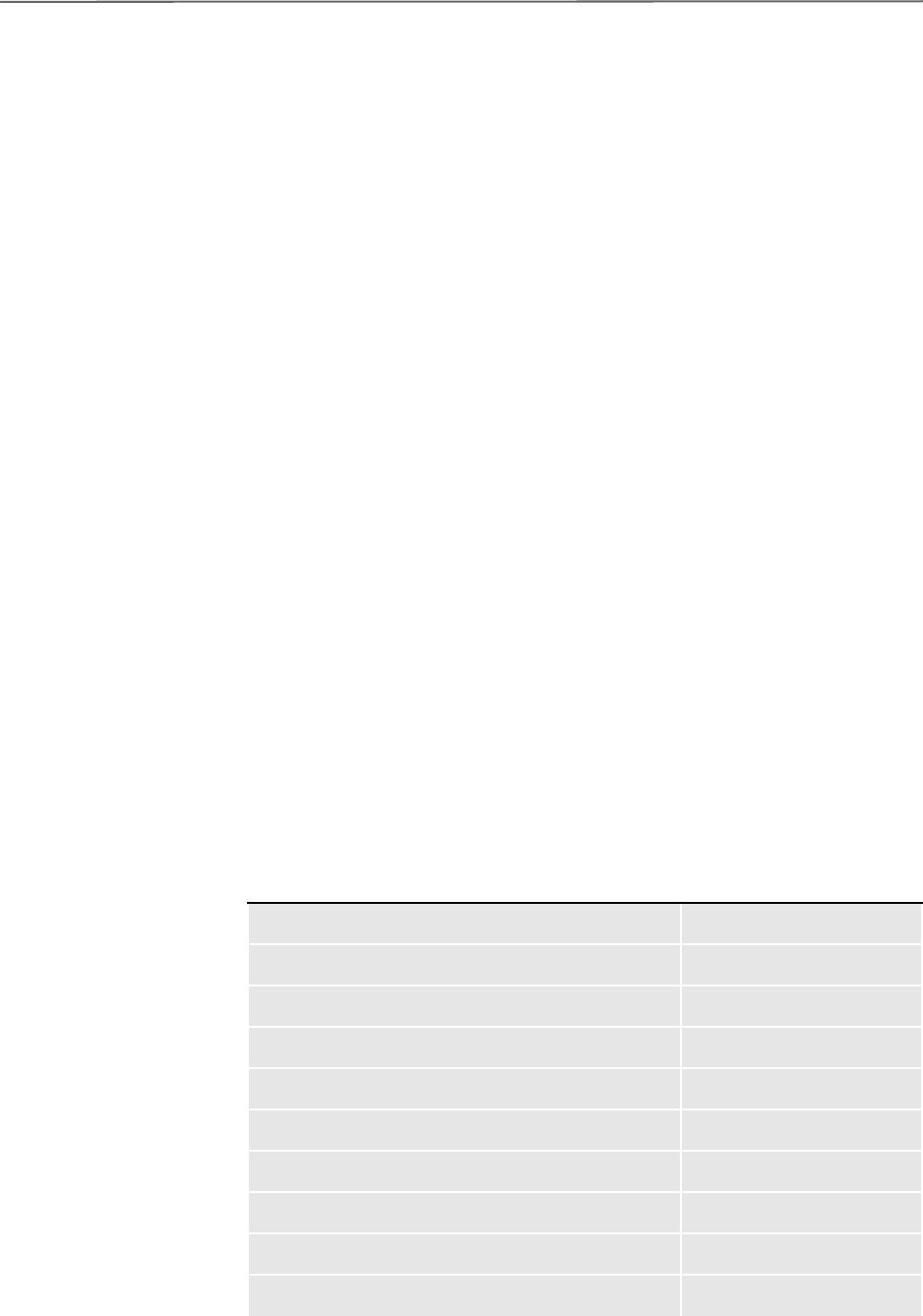
Using the XML Path Locator
67
USING THE
XML PATH
LOCATOR
The XMLFind function is called the DAL XML path locator or DAL XPath. It is a limited
version of the XML path and does not cover all aspects defined in the W3C literature.
Refer to W3C recommendations for the description of XPointer and XPath syntax. You
can use the XPATHW32 testing tool to verify the applicable specifications of Skywire
Software’s DAL XPath. Run the XPATHW32 program to get the syntax.
Below is a summary of XML path specifications for DAL XPath:
Axes These axes apply:
Function calls You can use these function calls:
Operators or signs You can use these operators or signs:
Expressions You can use abbreviated syntax, as this table shows:
ancestor ancestor-or-self attribute
child descendant descendant-or-self
following following-sibling parent
preceding preceding-sibling self
last() position() node()
text() name(
node-set
)string(
object
)
concat(
string
,
string
,
string
…)
=!=<>+- / //* :: [ ]
For... Use this abbreviation:
child::* *
child::para para
child::chapter/child::para chapter/para
child::para[position()=1] para[1]
/child::chapter/child::para[position()=last()] /chapter/para[last()]
child::text() text()
child::node() node()
child::para[attribute::type] para[@type]
child::para[attribute::type="warning"] para[@type="warning"]
child::para[attribute::type="warning"][position()=2] para[@type="warning"][2]
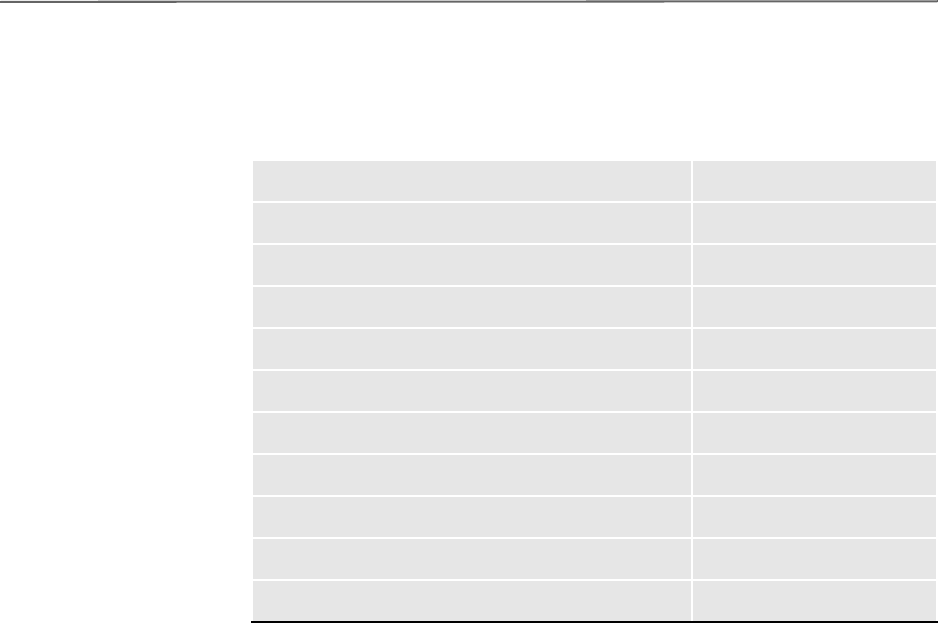
Using the XML Path Locator
68
XMLFind locates the XML path from the extract XML tree and returns a valid DAL
variable result. It requires three input parameters, a list type DAL variable and two string
type variables. They in turn pass in an XML tree, a node name from which the search
starts, and XML path location for searching.
If you omit the second parameter, the search starts from the root. The return DAL
variable Result can be either list type or string type, depending on XML path.
Here are some examples that result in different return values:
Element list
%elemListH=XMLFind(%extract, , “descendant::Form[@ID=Agent]”);
In this example, DAL XPath selects the Form element descendants that have an attribute
with name ID and value Agent from the extract XML tree (root), and returns an element
list.
Attribute list
%attrListH=XMLFind(%extract, “Forms”, “Form/@type=’warning’”);
In this example, DAL XPath returns an attribute list that collects type attributes with value
warning for Form children of current context node Forms.
Text list
%TextListH= XMLFind(%extract, “Forms”, “Form/text()”);
In this example, DAL XPath returns a text list that contains all text nodes of Form children
of current context node Forms.
child::chapter[child::title] chapter[title]
child::chapter[child::title="Introduction"] chapter[title="Introduction"]
child::doc/descendant-or-self::node()/child::para doc//para
attribute::* @*
attribute::type @type
/descendant-or-self::node()/child::para //para
self::node() .
self::node/descendant-or-self::node()/child::para .//para
parent::node() ..
parent::node()/child::chapter ../chapter
parent::node()/attribute::type ../@type
For... Use this abbreviation:

Using the XML Path Locator
69
Text string aStr=XMLFind(%extract, Forms, “string(Form[2])”);
It returns the text of second child Form of the current context node Forms.
aStr=XMLFind(%extract, “Forms”, “concat(“Get form 2 text: ”,
“Form[2])”);
It returns the concatenation of the text string Get form 2 text: , and the text of the second
child Form of current context node Forms.
aStr=XMLFind(%extract, “Forms”, “name()”);
It returns the name of current context node.

70
Chapter 6
Using XML Print Driver
The XMPLIB library allows you to use Documaker RP
to create Docucorp Standard XML output. You can
unload Docucorp Standard XML output from GenData
or GenPrint programs (using the PrintFormset rule).
Here is an example of the INI setup this feature requires:
< Printers >
PrtType = XMP
< PrtType:XMP >
Module = XMPW32
PrintFunc = XMPPrint
NOTE: No other INI options are needed.
Additional XML tags and information can be optionally
written to the output files.
To produce these additional XML tags, add either Filter
and\or OutputEmptyField options to the INI group
<PrtType:XMP>
Filter = Yes | No (the default is Yes)
OutputEmptyFields = Yes | No (the default
is No)
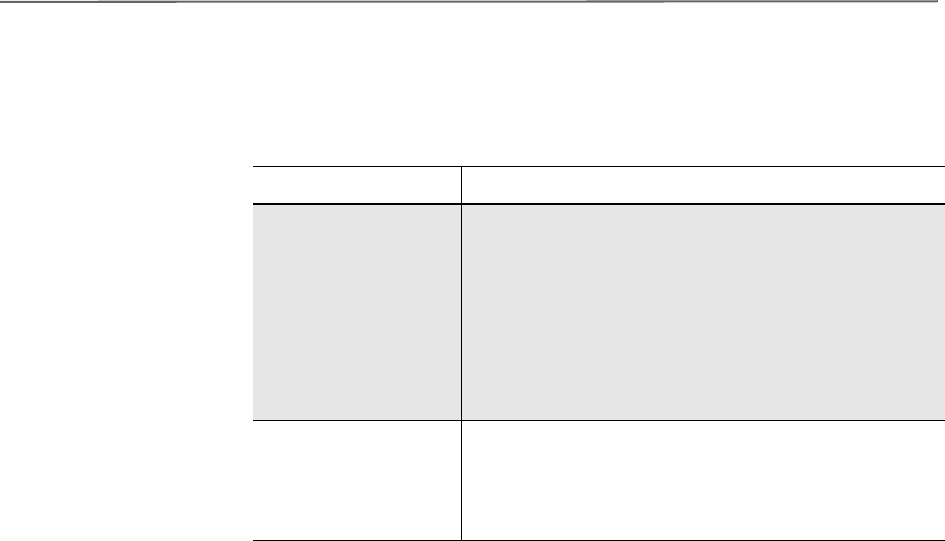
71
When using with Documaker RP, it is recommended to use the MultiFilePrint
functionality to create a separate XML file per transaction. If multiple XML files are
written into the same file, the file will not load in an XML parser, browser, or editor.
Options Description
Filter Yes (default): Standard XML tag and attribute information is
written to the XML output files.
No: Additional static section (FAP) content, font and
attribute information is written to the XML output files.
When this option is set to No, field information such as
prompt, color, font id and coordinates, text label name (plus
coordinates, color, font id) is also written to the XML output
file
OutputEmptyFields Yes: If a field is not populated with data, the field name is still
written to the output XML files.
No (default): If a field is not populated with data, the field
name is omitted from the output XML files.
72
Chapter 7
Additional Ways to Use
XML and Documaker
Server
This chapter describes other ways you can use XML and
Documaker Server.
This chapter discusses:
• Mapping Fields with XPath on page 73
• Referencing DAL and GVM Using XML on page
74
• Running Documaker Server Using an XML Job
Ticket on page 76
• Creating Multiple Print Files Using the
PrintFormset Rule on page 77
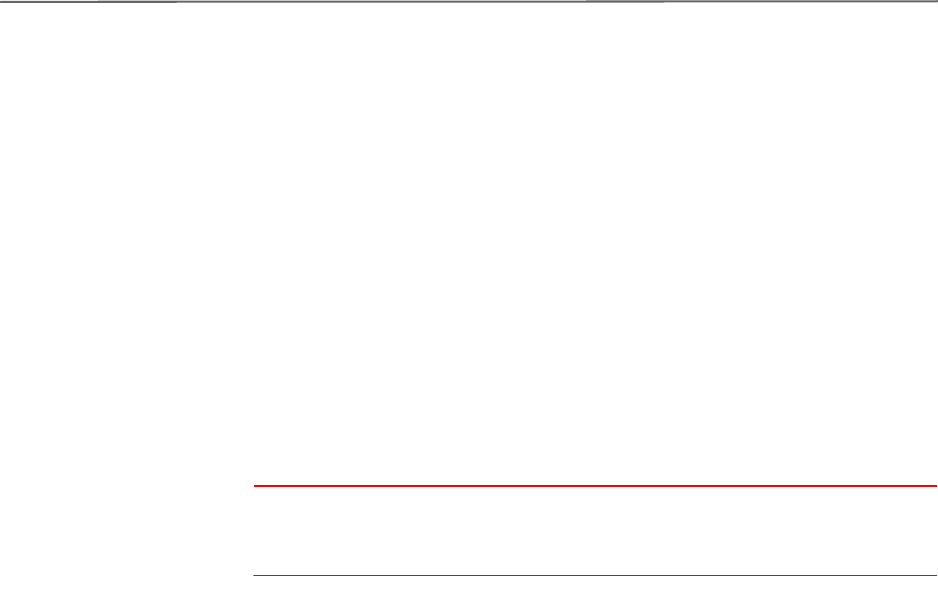
Mapping Fields with XPath
73
MAPPING
FIELDS WITH
XPATH
The GenTrn program and the NoGenTrnTransactionProc rule let you use the
TRN_Fields control group to map all of your fields with the XPath. To let the system
know you are using the XML file, set the XMLTrnFields option in the TRN_File control
group to Yes and also set the XMLExtract option in the RunMode control group to Yes.
Here is an example:
< RunMode >
XMLExtract = Yes
< TRN_File >
XMLTrnFields= Yes
< TRN_Fields >
Company = !/Forms/Key1
LOB = !/Forms/Key2
PolicyNum = !/Forms/PolicyNum
RunDate = !/Forms/RunDate;DM-4;D4
NOTE: Use this format for the Trn_Fields options:
(Field in the Transaction DFD File) = XPath;Field Format
Be sure to include the leading exclamation mark (!). This tells the system to use an XML
path search but is not part of the actual search routine. Do not specify whether a field is
a key. The system does not support multiple (search) keys with the XML implementation.
If you are selectively excluding transactions, in your exclude file, instead of an offset and
SearchMask, replace it with the XPath. Here is an example:
!/Forms[PolicyType="OLD"]

Referencing DAL and GVM Using XML
74
REFERENCING
DAL AND
GVM USING
XML
The system lets you reference the GVM and DAL expressions before it rebuilds XPath
search masks. The format is as follows:
=XXX(expression)
where XXX is one of the supported ways of finding data from a symbol, such as DAL or
GVM.
Here are the standard access methods:
• =(“expression”) returns the value of a DAL symbol represented by expression
Here is an example:
!/Forms/Data1[Data2="**=("dalVar")**"]/Data3
dalVar is a DAL symbol. If the value of this variable is Two, the system resolves the
expression and returns the following XPath search mask:
!/Forms/Data1[Data2="Two"]/Data3
• =(expression) returns the value of a DAL variable named in the expression which
contain a name of another DAL variable.
Here is an example:
!/Forms/Data1[Data2="**=(dalVar2)**"]/Data3
If you assign dalVar2 equal to another DAL variable called dalVar which holds a
value of Two, here is the result:
!/Forms/Data1[Data2="Two"]/Data3
• =DAL(“expression”) returns the value of a DAL script named by expression.
Here is an example:
!/Forms/Data1[Data2="**=DAL("test.dal")**"]/Data3
The system runs the named DAL script and returns the value as a result of that run.
If test.dal returns a value of Three, the expression is resolved and this XPath search
mask is the result:
!/Forms/Data1[Data2="Three"]/Data3
• =GVM(“expression”) returns the value of a GVM symbol named by the expression.
Here is an example:
!/Forms/Data1[Data2="**=GVM("gvmVar")**"]/Data3
gvmVar is a GVM symbol. If the value for this symbol is One, the system resolves the
expression and returns this XPath search mask:
!/Forms/Data1[Data2="One"]/Data3

Referencing DAL and GVM Using XML
75
• =GVM(expression) returns the DAL or GVM variable named in the expression
which contains a name of another GVM variable.
Here is an example:
!/Forms/Data1[Data2="**=GVM(dalVar)**"]/Data3
dalVar is a DAL variable. If dalVar was assigned a value equal to another GVM
variable called gvmVar and the value for this variable is One, here is the result:
!/Forms/Data1[Data2="One"]/Data3
!/Forms/Data1[Data2="**=GVM(gvmVar2)**"]/Data3
gvmVar2 is a GVM variable. If gvmVar2 was assigned a value equal to another GVM
variable called gvmVar and the this variable holds a value of One, here is the result:
!/Forms/Data1[Data2="One"]/Data3
• =() Retrieves the contents of a DAL variable that is, by default, the root name of the
source name of the current DDT field.
Here is an example:
!/Forms/TestGVM[GVMField="**=()**"]/Data
Assume, current DDT field has destination name dalVar #003 and also source name
dalVar #003 and the content of this DAL variable, dalVar, is One, the system resolves
the expression and returns this XPath search mask:
!/Forms/TestGVM[GVMField="One"]/Data
If you have GVM, DAL, or other symbols in the XPath, you may want to know what
symbolic data you are referencing. Use these INI options to have the system write the
symbol and its referred data into the log file:
< Debug_Switches >
Enable_Debug_Options = Yes
XPath = Yes

Running Documaker Server Using an XML Job Ticket
76
RUNNING
DOCUMAKER
SERVER
USING AN
XML JOB
TICKET
Now you can run Documaker Server from another application using an XML job ticket.
You receive results in an XML job log file.
The layout of these files is the same as those used by Docupresentment for running
Documaker Server. See Creating Multiple Print Files Using the PrintFormset Rule on
page 77 for more information.
The name of the Job ticket is passed to the GenData program on the command line as
/jticket= parameter
The default name is JOBTICKET.XML.
To set this up replace the StandardJobProc rule with the TicketJobProc rule. Keep in
mind you must run Documaker Server in single step mode, since only the GenData
program is executed.
You can specify the name of the resulting job log file using this command line parameter:
/jlog=
The default is JOBLOG.XML.
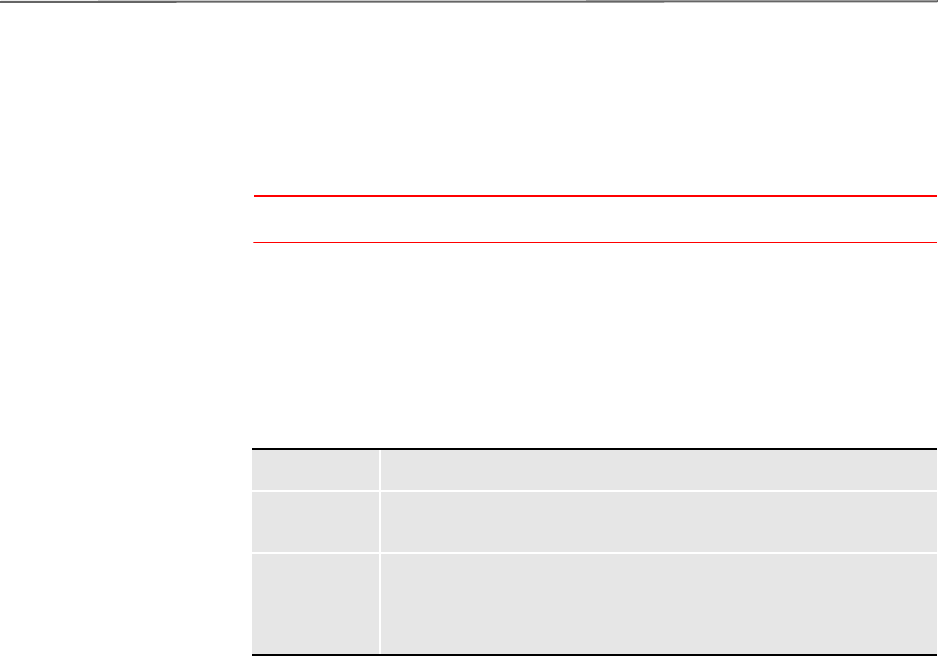
Creating Multiple Print Files Using the PrintFormset Rule
77
CREATING
MULTIPLE
PRINT FILES
USING THE
PRINTFORMS
ET
RULE
The PrintFormset rule lets you create multiple print files when you run the GenData
program in single-step mode.
NOTE: When running in multi-step mode, use the MultFilePrint callback functionality.
To use this feature, add these options to PrintFormset control group:
< PrintFormset >
MultiFilePrint = Yes
LogFileType = XML
LogFile = (log file name and path)
The log file that is created is either a semicolon-delimited text file, formatted like the file
created by the MultiFilePrint callback function or an XML file. Here is an example of the
layout of the XML file:
<?xml version="1.0" encoding="UTF-8" ?>
- <LOGFILE>
- <TRANSACTION INSTANCE="1">
<BATCH NAME="Logical Batch Name">.\data\BATCH1.BCH</BATCH>
<GROUP1 NAME="Company">SAMPCO</GROUP1>
<GROUP2 NAME="Lob">LB1</GROUP2>
<TRANSACTIONID NAME="PolicyNum">1234567</TRANSACTIONID>
<TRANSACTIONTYPE NAME="TransactionType">T1</TRANSACTIONTYPE>
<RECIPIENT NAME="INSURED">INSUREDS COPY</RECIPIENT>
<FILE>DATA\0rDcP7WxytE8ECp5jexhWXVqkV840Vw_F-GykT_VMfd.PDF</FILE>
</TRANSACTION>
- <TRANSACTION INSTANCE="2">
<BATCH NAME="Logical Batch Name">.\data\BATCH2.BCH</BATCH>
<GROUP1 NAME="Company">SAMPCO</GROUP1>
<GROUP2 NAME="Lob">LB1</GROUP2>
<TRANSACTIONID NAME="PolicyNum">1234567</TRANSACTIONID>
<TRANSACTIONTYPE NAME="TransactionType">T1</TRANSACTIONTYPE>
<RECIPIENT NAME="COMPANY">COMPANY COPY</RECIPIENT>
<FILE>DATA\0v3l7pBdVqHceoRL5hf2xqjJ7WMxiRVO9U70iFiIcne.PDF</FILE>
</TRANSACTION>
</LOGFILE>
Use the options in the DocSetNames control group to determine which XML elements
are created. The values in this control group are the same as those written to a recipient
batch or TRN file.
Option Description
MultiFilePrint Set this option to Yes to allow multiple file print.
LogFileType Specifies the type of the log file. Enter XML for an XML file. Any other entry
results in a text file.
LogFile Specifies the name of the log file. Include the full path. If you omit the path,
the system uses DATAPATH. If you omit this option, the system creates a file
named TMP.LOG. If you enter XML in the LogFileType option and a
different extension here, the system uses XML.
78
Chapter 8
Using Docupresentment
to Run Documaker
Server
This chapter tells you how to set up Docupresentment
and Documaker Server so Docupresentment can run
Documaker Server as a subordinate process.
This chapter discusses:
• Overview on page 79
• Setting Up Docupresentment on page 80
• Setting Up Documaker Server on page 82
• Controlling Documaker Server on page 84
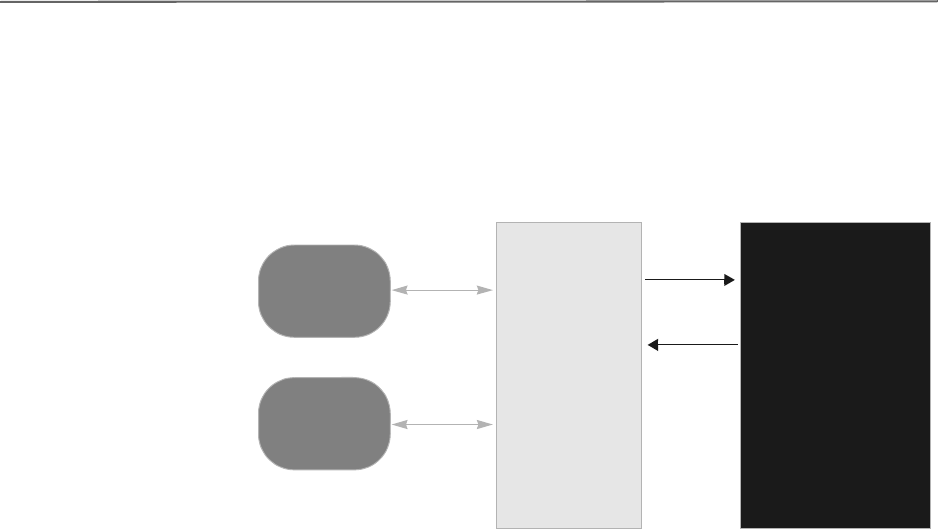
Overview
79
OVERVIEW
When using Docupresentment to run Documaker Server, web clients communicate with
Docupresentment using queues. Docupresentment communicates with Documaker
Server via XML files called job tickets and job logs, as shown below.
Docupresentment can start or stop Documaker Server as needed, without user
interaction. One Docupresentment session controls one Documaker Server process. You
can, however, implement multiple Docupresentment sessions and have multiple
Documaker Server processes as well.
The ServerBaseProc rule replaces the RULStandardJobProc rule and lets
Docupresentment run Documaker Server as a separate, stay alive process. This means
Documaker Server only has to start once and Docupresentment can continue even if
Documaker Server fails. See ServerBaseProc on page 101 for more information.
Keep in mind these limitations:
• You can only run Documaker Server in single step mode. Consult the Documaker
Administration Guide for more information on single step processing.
• You must run Documaker on Windows 2000 or higher.
• If any Docupresentment transaction specifies a different resource setup, the
Documaker Server process will automatically re-initialize to change to those
resources. Such resource changes can affect the overall performance of the system.
• During processing, some INI options can be changed by the client. Since some
Documaker Server rules use static variables and store INI values in memory, it is
possible that a client will be unable to change an INI option if those Documaker
Server rules are used. To handle these situations, you must restart Documaker Server.
Web Client
Docupresentment
Documaker
(GenData)
VB\COM\
Java Client
XML Job
Ticket
XML
Job Log
Server

Setting Up Docupresentment
80
SETTING UP
DOCUPRESEN
TMENT
To set up Docupresentment so that it will run Documaker Server, you will need to make
the following changes in the following INI files:
DOCSERV.INI file Make these changes in the DOCSERV.INI file, or the INI file the Docupresentment is
configured to use. Here is an example of how to add a request type for Documaker Server:
< ReqType:RPD >
function = atcw32->ATCLogTransaction
function = atcw32->ATCLoadAttachment
function = atcw32->ATCUnloadAttachment
function = dprw32->DPRSetConfig
function = rpdw32->RPDCheckRPRun
function = rpdw32->RPDCreateJob
function = rpdw32->RPDProcessJob
If necessary, you can add two more request types, one to check if Documaker Server is
running and one to stop Documaker Server. Here is an example:
< ReqType:CHECK >
function = atcw32->ATCLogTransaction
function = atcw32->ATCLoadAttachment
function = atcw32->ATCUnloadAttachment
function = dprw32->DPRSetConfig
function = rpdw32->RPDCheckRPRun
< ReqType:STOP >
function = atcw32->ATCLogTransaction
function = atcw32->ATCLoadAttachment
function = atcw32->ATCUnloadAttachment
function = dprw32->DPRSetConfig
function = rpdw32->RPDStopRPRun
You will also need to add the following Docupresentment rule to the ReqType:INI
control group:
function = rpdw32->RPDStopRPRun
DAP.INI file Add a configuration option for a the master resource library you will use. Here is an
example which is based on the RPEX1 master resource library:
< Configurations >
CONFIG = RPEX1
< Config:RPEX1 >
INIFile = RPEX1.INI
RPEX1.INI file Make these changes in the RPEX1.INI file (or the INI file you are using for your
configuration):
< IDSServer >
ExtrPath = e:\fap\mstrres\rpex1\extract\
PrintPath = e:\fap\mstrres\rpex1\data\
WaitForStart = 60
SleepingTime = 500
MaxWaitTime = 120
GENSemaphoreName = gendata
RPDSemaphoneName = rpdrunrp

Setting Up Docupresentment
81
PrintFileCacheTime = 7200
TextFileCacheTime = 7200
< RPDRunRP >
Executable = e:\rel101\shipw32\gendaw32.exe
Directory = e:\fap\mstrres\rpex1\
UserINI = e:\fap\mstrres\rpex1\fsiuser.ini
BaseLocation = http://10.8.10.69/fap/mstrres/rpex1/data/
< Printer >
PrtType = PDF
< Debug >
RPDProcessJob = Yes
Setting up multiple
Docupresentment servers
The semaphores used by Docupresentment and Documaker Server are global for a
computer, so if you need multiple Docupresentment processes on the same computer,
each Docupresentment process and subordinate Documaker Server process should use
different semaphore names.
The semaphore names are generated automatically by Docupresentment for each
additional Docupresentment instance. These names are passed to Documaker Server as
command line parameters. No user intervention is usually needed.
To specify the own naming conventions for these semaphores, do so by changing these
INI options:
< IDSServer >
GENSemaphoreName =
RPDSemaphoreName =
Keep in mind the names must be unique for a computer, so two Docupresentment
servers will have to use two different INI files specifying semaphore names.

Setting Up Documaker Server
82
SETTING UP
DOCUMAKER
SERVER
The first step is to set up Documaker Server to run in a single step mode. See the
Documaker Administration Guide for more information
Keep in mind these considerations...
• If the Documaker Server executables and DLLs are located on the network, the start
time for Documaker Server can be significant. Keep in mind, however, that the start
time only affects the first transaction. Subsequent transactions will process much
more quickly. If the start time exceeds 10 seconds, consider changing the
WaitForStart option to a higher value.
• All of the standard Documaker Server performance-related INI options are available
even when Docupresentment runs Documaker Server as a subordinate process. For
best results, optimize Documaker Server’s performance before using it with
Docupresentment.
• Documaker Server will run fastest if the resource files for Documaker Server, as well
as input and output files, are physically located on the computer where
Docupresentment and Documaker Server are running.
In addition, you will need to make changes to your FSISYS.INI or FSIUSER.INI files and
to your AFGJOB.JDT file.
FSISYS.INI or
FSIUSER.INI file
Be sure to turn off all Documaker Server stop options, as shown here:
< GenDataStopOn >
BaseErrors = No
TransactionErrors = No
ImageErrors = No
FieldErrors = No
Also, add the following control groups and options:
< IDSServer >
SleepingTime = 500
GENSemaphoreName = gendata
RPDSemaphoneName = rpdrunrp
< Debug >
RULServerJobProc = Yes
< PrintFormsSet >
MultiFilePrint = Yes
LogFileType = XML
LogFile = .\data\printlog.xml
AFGJOB.JDT file Change the base rule from RULStandardBaseProc, as shown here:
<Base Rules>
;RULServerJobProc;1;;
...
The ServerBaseProc on page 101 rule replaces the RULStandardJobProc rule and lets
Docupresentment run Documaker Server as a separate, stay alive process. This means
Documaker Server only has to start once and Docupresentment can continue even if
Documaker Server fails.

Setting Up Documaker Server
83
Naming Conventions for Output Files
The output files from Documaker Server use the names generated by the
Docupresentment rules and submitted to Documaker Server in the job ticket file. If you
need different names, provide them in the Docupresentment request. In this case, you
must make sure the names are unique or else they will be overwritten. The names
generated by Docupresentment can consist of up to 45 characters and are similar to the
names generated by the DPRPrint rule in Docupresentment.
The directory where the output files are created is determined in this manner:
• If the file name and path was provided, the system uses that information.
• If the file name was provided, but the path was omitted, the system looks for the path
in the PRINTPATH attachment variable.
• If the path is not in the PRINTPATH attachment variable, the system looks for the
PrintPath INI option in the IDSServer control group.
• If no path was specified in the PrintPath INI option, the system places the output
file in the current directory.
The extension of the output files is determined in this manner:
• If the name and extension was provided in the attachment, the system uses that
information.
• If the name and extension were omitted, the system generates a name and uses the
printer type as the extension for the print output files. For other files, the system
looks for the FileExt option in the IDSServer control group to find the extension.
The default is DAT.

Controlling Documaker Server
84
CONTROLLING
DOCUMAKER
SERVER
To control Documaker Server via Docupresentment, use these Docupresentment rules:
• RPDCheckAttachments - Checks the required input attachment variables and INI
options before starting the GenData program.
• RPDCheckRPRun - Makes sure Documaker Server is running. If Documaker Server
is not running, this rule starts it.
• RPDCreateJob - Finds the attachment variables for each of the values in the job
ticket and adds them to the XML tree. The XML tree is added to the RPDJobTicket
DSI variable so the next rule can use it.
• RPDProcessJob - Gets the XML tree from the RPDJobTicket variable and writes it
to a file. This file is used as the job ticket which triggers the Documaker Server
process.
• RPDStopRPRun - Receives the current process ID from the DSI variable
RPDRunProcess and then terminates Documaker Server.
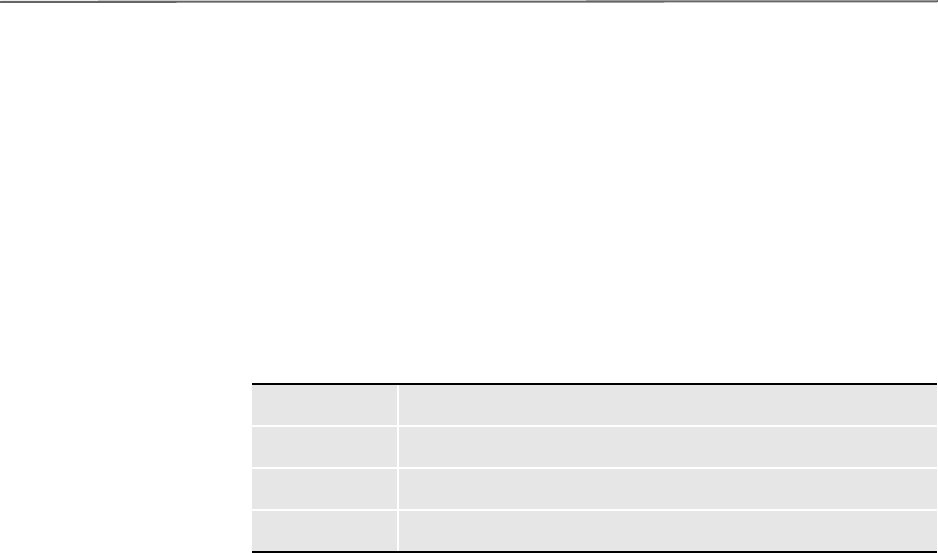
RPDCheckAttachments
85
RPDCHECKA
TTACHMENTS
Use this rule to check the required input attachment variables and INI options before
starting the GenData program.
Syntax
_DSIEXPORT DWORD _DSIAPI RPDCheckAttachments (DSIHANDLE hdsi,
char * pszParms,
ULONG ulMsg,
ULONG ulOptions)
Parameters
This rule runs before the RPDCheckRPRun rule. Using this rule, ReqType becomes:
< ReqType:RPD >
function = atcw32->ATCLogTransaction
function = atcw32->ATCLoadAttachment
function = atcw32->ATCUnloadAttachment
function = irlw32->IRLCopyAttachment
function = dprw32->DPRSetConfig
function = RPDW32->RPDCheckAttachments
function = RPDW32->RPDCheckRPRun
function = RPDW32->RPDCreateJob
function = RPDW32->RPDProcessJob
The expected attachment variables are checked only if they are in the RPDAttachments
control group. Here is an example:
< RPDAttachments >
Variable = ReqType
Variable = Config
Variable = PrintBatches
Variable = ExtrFile
If the ExtrFile option is required, the rule checks to see if it exists. Keep in mind the
ExtrFile option includes a full path. If you omit the path, the system uses the path
specified in the ExtrPath option as the default path.
This rule also checks these options in the RPDRunRP control group:
< RPDRunRP >
Executable = d:\RP\Mstrres\gendaw32.exe
Directory = d:\RP\Mstrres\rpex1\
UserINI = fsiuser
If the UserINI option does not include a drive letter, the system will look at the Directory
option to find the path, so the full UserINI name becomes:
d:\RP\Mstrres\rpex1\fsiuser.ini
In other cases, you can set the UserINI option, as shown here:
Parameter Description
DSIHANDLE hInstanceDSI instance handle
char * pszParms Pointer to rule parameter string unsigned long
ulMsg DSI_MSG, such as DSI_MSGRUNF unsigned long
ulOptions options

RPDCheckAttachments
86
Directory = d:\ProgIDS\RP\Mstrres\Validate\W32exe\
UserINI = fsiuser
So the full UserINI name becomes:
d:\ProgIDS\RP\Mstrres\Validate\W32exe\fsiuser.ini
This rule also makes sure the USERINI.INI file exists. For UNIX, if the first byte is “/”,
the system looks at the UserINI option for the full path, for example:
UserINI = /ProgIDS/RP/Mstrres/Deflib
Otherwise, the system uses the path specified in the Directory option. Keep in mind that
if you omit the UserINI option, the system uses the FSIUSER.INI file instead.
INI options
< RPDAttachments >
Variable = ReqType
Variable = Config
Variable = PrintBatches
Variable = ExtrFile
< IDSServer >
ExtrPath = d:\fap\mstrres\rpex1\extract\
< RPDRunRP >
Executable = d:\rel101\rps100\shipw32\gendaw32.exe
Directory = d:\fap\mstrres\rpex1\
UserINI = fsiuser
Returns Success or failure.
Error messages
Message Description
RPD0001 Can not locate variable #VARIABLE,# in the attachment list at
#LOCATION,#.
RPD0004 Can not add variable #VARIABLE,# to attachment at #LOCATION,#.
RPD0007 File #FILENAME,# does not exists. Failed to #LOCATION,#.
RPD0009 The INI option #INIOPTION,# could not be located in the group
#INIGROUP,#.
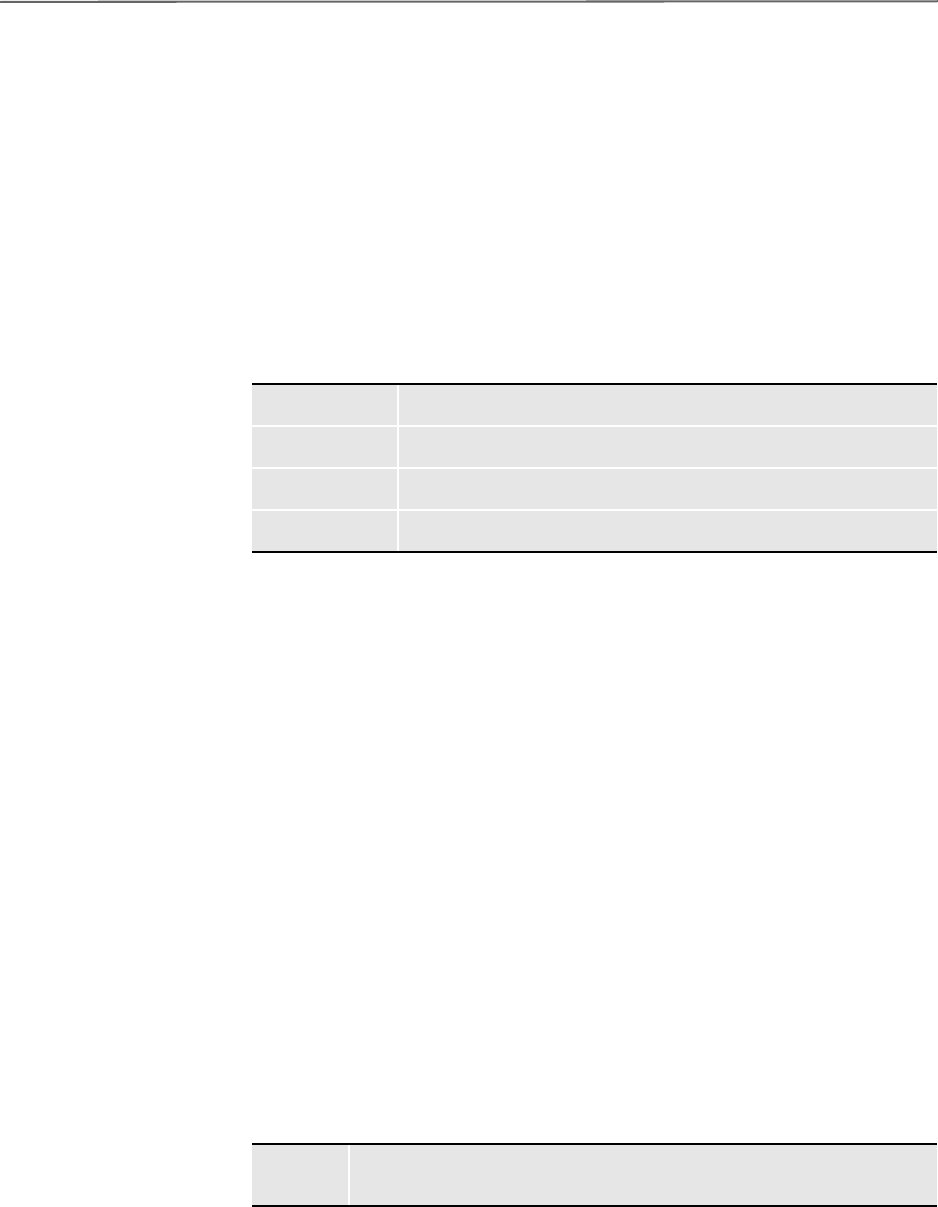
RPDCheckRPRun
87
RPDCHECKR
PR
UN
Use this rule to make sure Documaker Server is running. If Documaker Server is not
running, this rule starts it.
Syntax
_DSIEXPORT DWORD _DSIAPI RPDCheckRPRun (DSIHANDLE hdsi,
char * pszParms,
ULONG ulMsg,
ULONG ulOptions)
Parameters
To determine if Documaker Server is running, the rule looks at the CONFIG value. If the
CONFIG value is not the same as it was in the previous run, this rule stops and then
restarts Documaker Server.
On the RUNF message, this rule looks to see if a Documaker Server process exists and
starts one if needed. On the RUNR message, this rule stops the Documaker Server
process if there was an error.
On DSI_MSGRUNF, this rule first checks to see if Documaker Server is running by
detecting the gendata semaphore created by RULServerBaseProc rule. If the semaphore
does not exist, Documaker Server is not running. This rule then starts Documaker Server
and creates a semaphore called rpdrunrp.
This lets Documaker Server check the status of the Docupresentment by detecting the
existence of the semaphore. It also lets Documaker Server terminate normally in case
Docupresentment stops.
To handle situations where you have multiple master resource libraries (MRLs), the rule
checks the CONFIG value for every job process to see if a new MRL is requested. If the
CONFIG value changes, the rule stops the current Documaker Server process and starts
another one which uses the new MRL.
On DSI_MSGRUNR, this rule terminates Documaker Server if errors occur.
Input attachment variables
Parameter Description
DSIHANDLE hInstance DSI instance handle
char * pszParms Pointer to rule parameter string unsigned long
ulMsg DSI_MSG, such as DSI_MSGRUNF unsigned long
ulOptions options
Variable Description
CONFIG The configuration for the master resource library (MRL). See also the
DPRSetConfig rule and the setup with multiple master resource directories.
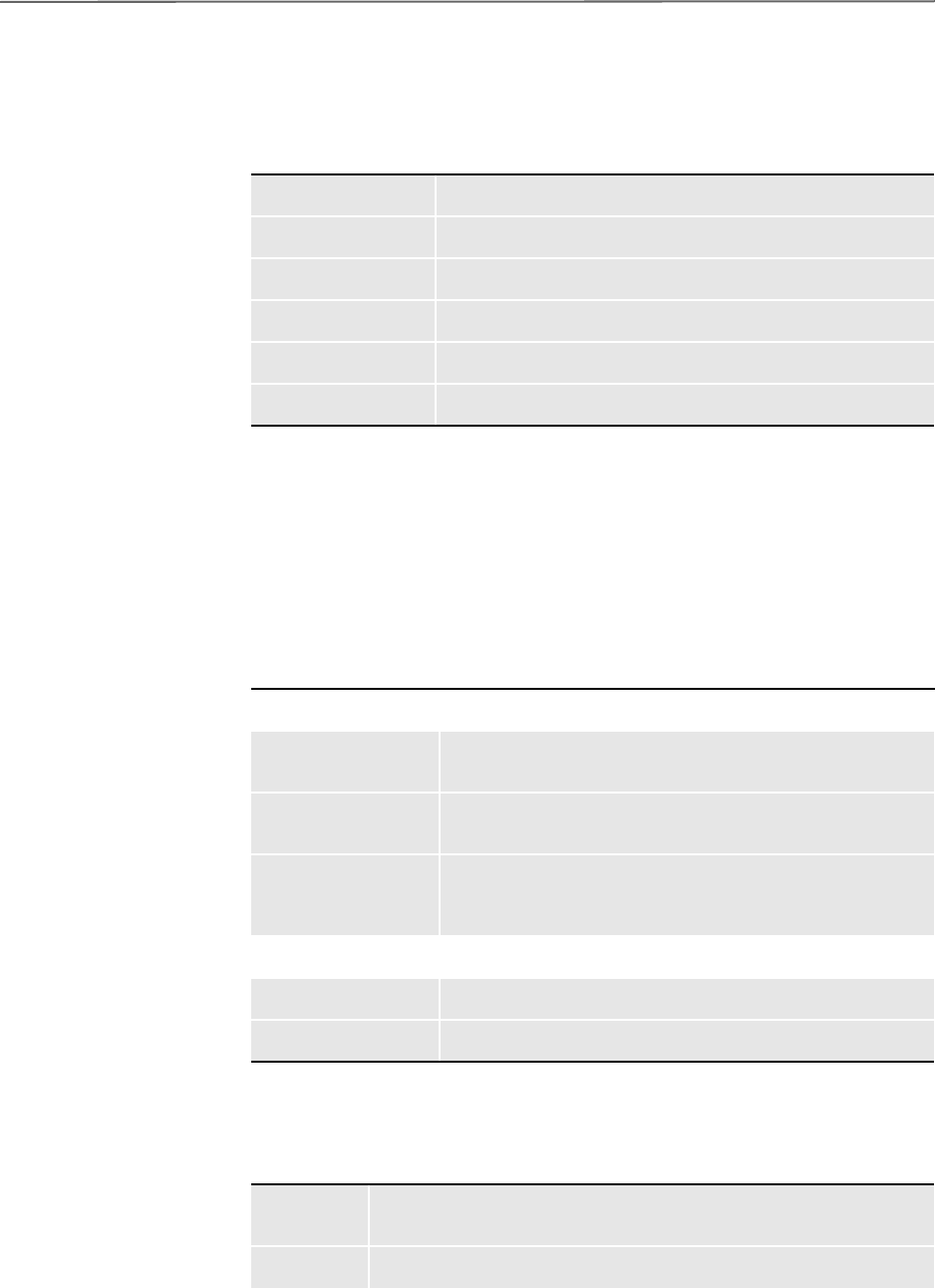
RPDCheckRPRun
88
Output DSI variables
INI options You can use these INI options:
< RPDRunRP >
Executable =
Directory =
UserINI =
< IDSServer >
GENSemaphoreName =
RPDSemaphoreName =
Returns Success or failure.
Error messages
Variable Description
RPDRunProcess This value is the process ID for the Documaker Server process.
RPDSemaphoreName The semaphore name from the RPDSemaphore INI option.
GENSemaphoreName The semaphore name from the GENSemaphore INI option.
RPDRunSemaphore Stores the RPDSemaphore handle.
RPDJobLogName The name of the job log file name to use.
RPDJobTicketName The name of the job ticket file name to use.
Option Description
RPDRunRP control group
Executable The name and path of the program you want to execute, such as
d:\rpsetup\gendaw32.exe.
Directory The path to the master resource library, where you want to run
Documaker Server.
UserINI (Optional) The name and path of the INI file you want to use. The
default is the FSIUSER.INI located in the directory specified by the
Directory option.
IDSServer control group
GENSemaphoreName The name of the semaphore. The default is gendata.
RPDSemaphoreName The name of the semaphore. The default is rpdrunrp.
Message Description
RPD0001 Cannot locate variable #VARIABLE,# in the attachment list at
#LOCATION,#.
RPD0004 Cannot add variable #VARIABLE,# to attachment at #LOCATION,#.

RPDCheckRPRun
89
RPD0008 The call by #LOCATION,# to API #APINAME,# failed.
RPD0009 The INI option #INIOPTION,# can not be located in the group
#INIGROUP,#.
RPD0010 Cannot create DSI variable #VARIABLE,#. #LOCATION,# failed.
Message Description
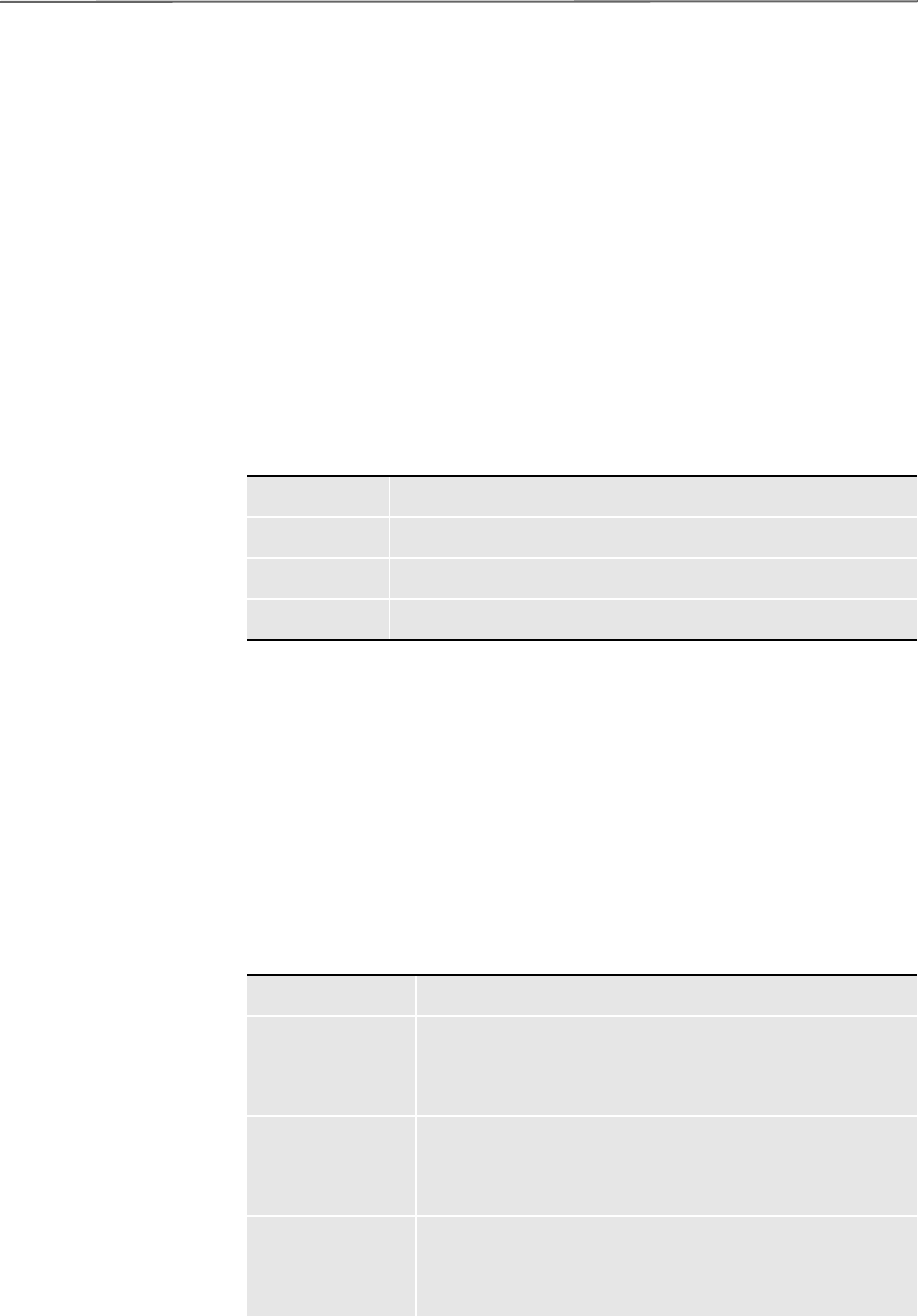
RPDCreateJob
90
RPDCREATEJ
OB
Use this rule to find the attachment variables for each of the values in the job ticket and
add them to the XML tree. The XML tree is added to the RPDJOBTICKET DSI variable
so the next rule can use it.
Keep in mind that the RPDCreateJob rule always adds the DbLogFile XML element to
the job ticket. If a value for this element is not in the job ticket, a unique file name is
generated and added. If an attachment variable or INI option is present but set to a blank
value, the RPDCreateJob rule does not add the DbLogFile element.
Syntax
_DSIEXPORT DWORD _DSIAPI RPDCreateJob (DSIHANDLE hdsi,
char * pszParms,
ULONG ulMsg,
ULONG ulOptions)
Parameters
On DSI_MSGRUNF, this rule creates the XML document for the job ticket that triggers
the job processing. You should direct your results to designated directories and use unique
file names, especially if you want to support multiple MRL setups, multiple Documaker
Server processes, or multiple job processes.
You can change INI options via attachment variables. These changes are added onto the
XML tree so Documaker Server can update the INI options in memory.
On DSI_MSGRUNR, this rule processes the XML document of the job log, and all
values of the XML tree are added to the output attachment.
Input attachment variables You can use these input attachment variables:
Parameter Description
DSIHANDLE hInstance DSI instance handle
char * pszParms Pointer to rule parameter string unsigned long
ulMsg DSI_MSG, such as DSI_MSGRUNF unsigned long
ulOptions options
Variable Description
ExtrFile Extract file name and path. This is a required input file.
MsgFile (Optional) Message file name and path. If you omit the path, the
PrintPath attachment variable is used. If the PrintPath was omitted, the
system uses the PrintPath defined in the IDSServer control group. If
the file name is omitted, the system creates a 46-byte unique file name.
ErrFile (Optional) Error file name and path. If you omit the path, the PrintPath
attachment variable is used. If the PrintPath was omitted, the system
uses the PrintPath defined in the IDSServer control group. If the file
name is omitted, the system creates a 46-byte unique file name.
LogFile (Optional) Log file name and path. If you omit the path, the PrintPath
attachment variable is used. If the PrintPath was omitted, the system
uses the PrintPath defined in the IDSServer control group. If the file
name is omitted, the system creates a 46-byte unique file name.
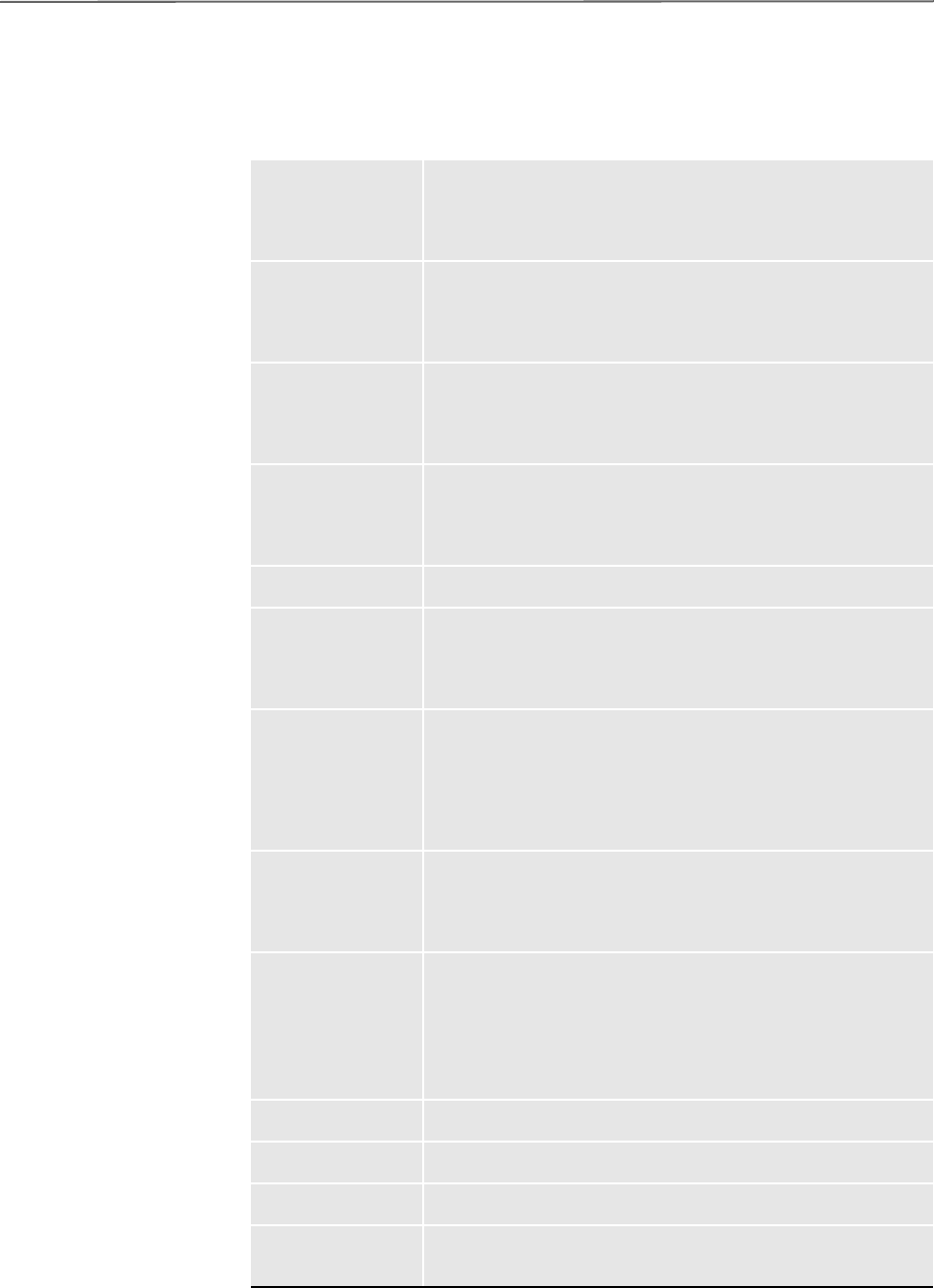
RPDCreateJob
91
DBLogFile (Optional) DB log file name and path. If you omit the path, the
PrintPath attachment variable is used. If the PrintPath was omitted, the
system uses the PrintPath defined in the IDSServer control group. If
the file name is omitted, the system creates a 46-byte unique file name.
NAFile (Optional) NA file name and path. If you omit the path, the PrintPath
attachment variable is used. If the PrintPath was omitted, the system
uses the PrintPath defined in the IDSServer control group. If the file
name is omitted, the system creates a 46-byte unique file name.
POLFile (Optional) POL file name and path. If you omit the path, the PrintPath
attachment variable is used. If the PrintPath was omitted, the system
uses the PrintPath defined in the IDSServer control group. If the file
name is omitted, the system creates a 46-byte unique file name.
NewTrn (Optional) NewTrn file name and path. If you omit the path, the
PrintPath attachment variable is used. If the PrintPath was omitted, the
system uses the PrintPath defined in the IDSServer control group. If
the file name is omitted, the system creates a 46-byte unique file name.
PrintBatchPath The default path for print batches.
PrintBatches The number of batches to print. If you enter zero or you do not enter
this variable, no print batch information is updated. Your entry cannot
exceed the number of printers listed in the PrinterInfo control group in
the FSISYS.INI file.
PrintBatchesX The name of a print batch, where X denotes the number of the print
batch, continuing from one to PrintBatches. If omitted, the system
creates a 46-byte unique name for the print batch. A print batch can
have a full path. If it does not have a path, PrintPath is used. If PrintPath
is omitted, the system uses the path specified in the PrintPath option in
the Data control group.
BatchFiles The number of batch files. If you enter zero or omit this option, no
batch file information is updated. Your entry should not exceed the
number of batch files listed in the Print_Batches control group in the
FSISYS.INI file.
BatchFilesX The name of the batch file. X denotes the number of the batch file,
counting from one to the maximum. If you omit this option, the system
creates a 46-byte unique name for the batch file.
You can include a full path. If you omit the path, the system uses the
PrintPath. If the PrintPath is omitted, the system uses the path specified
in the PrintPath option in the IDSServer control group.
INIOptions The number of other INI options to update.
INIOptionsX.Group The INI group name you want to update.
INIOptionsX.Option The INI option name you want to update.
INIOptionsX.Value The value of the INI option you want to update. X indicates the
number of INI options, counting from one to the maximum.
Variable Description
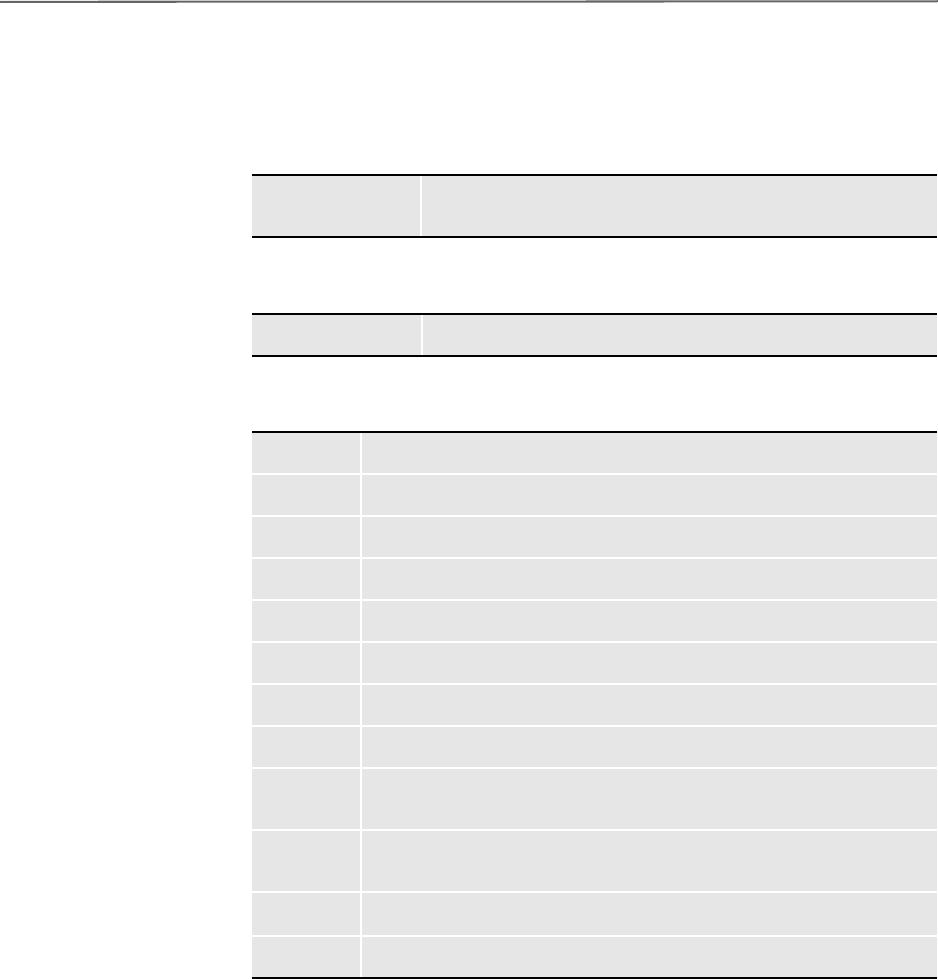
RPDCreateJob
92
Output DSI variables
Input DSI variables
Output attachment
variables
Note that the input attachments for PrintBatchX should be in the same order as those for
PrinterX, as defined in the PrintInfo control group in the FSISYS.INI file. Also keep in
mind that PrinterX and BatchX are option names you define in the PrintInfo and
Print_Batches control groups.
INI options
< IDSServer >
PrintPath =
PrintFileCacheTime =
TextFileCacheTime =
< Printer >
PrtType =
< RPDRunRP >
BaseLocation =
Variable Description
RPDJOBTICKET Job ticket variable. Its value is a XML document handle for the job
ticket.
Variable Description
RPDJOBLOG Job log variable. Returns an XML document handle for the job log.
Variable Description
ExtrFile Extract file name and path.
MsgFile Message file name and path.
ErrFile Error file name and path.
LogFile Log file name and path.
DBLogFile DB log file name and path.
NAFile NA file name and path.
POLFile Pol file name and path.
NewTrn NewTrn file name and path.
PrinterX Name and path of print batches. X denotes the number of the print batches from
one to the maximum.
BatchX The name and path of the batch files. X denotes the number of batch files, from
one to the maximum.
Results
Success or an error code from the Docupresentment rules.
RPResults An error code from Documaker Server: 0=Success, 4=Warning, 8 or 16=Failure.
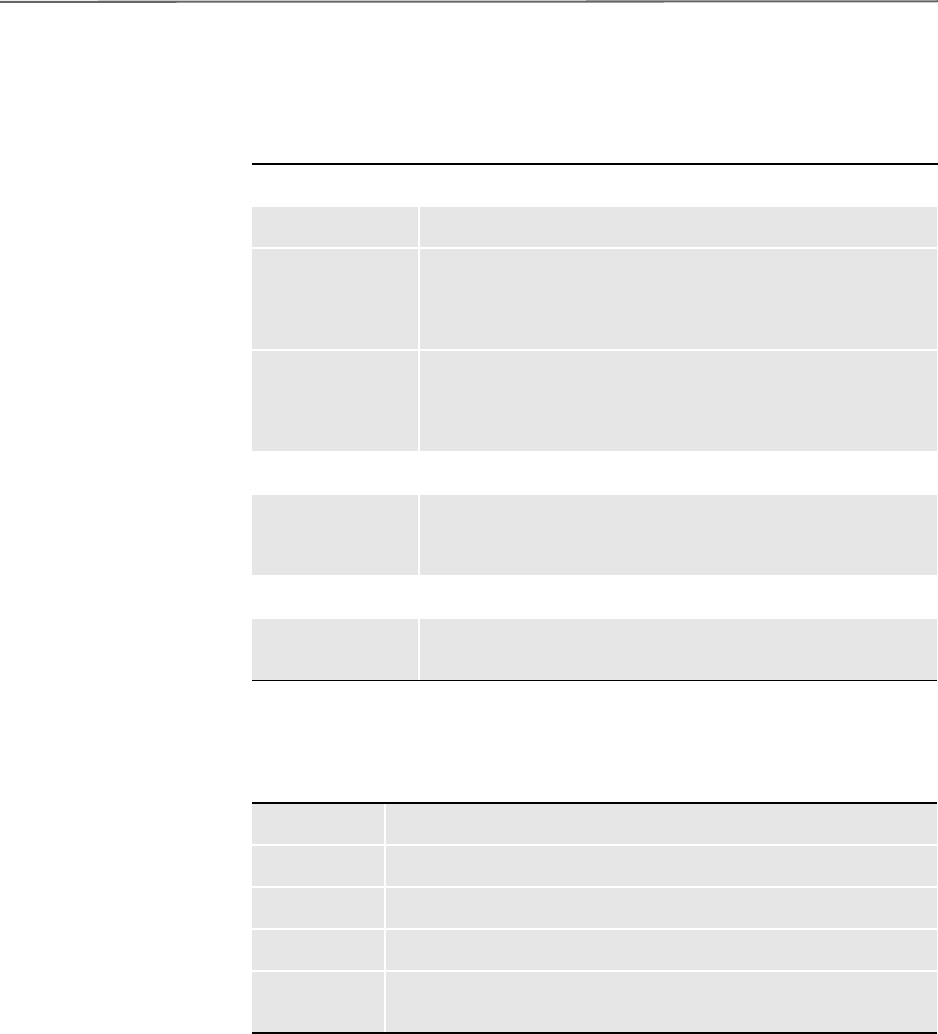
RPDCreateJob
93
Returns Success or failure.
Error messages
Option Description
IDSServer control group
PrintPath Used as a default path for print batches and the rest of the output files.
PrintFileCacheTime The length of time, in seconds, you want the system to store the print
files. At expiration time, the system removes the print batch files. The
default is 1800 (30 minutes). Note that only print files with the 46-byte
unique name created by the system are cached.
TextFileCacheTime The length of time, in seconds, you want the system to store the text files.
At expiration time, the system removes the text files. The default is 1800
(30 minutes). Note that only text files with the 46-byte unique name
created by the system are cached.
Printer control group
PrtType The type of print batch file. Your entry must be consistent with the
control group defined in the FSISYS.INI file. For instance, if you set up
a PrtType:PDF control group there, enter PDF here.
RPDRunRP control group
BaseLocation The URL to the output data directory. Your entry must be consistent
with the PrintPath or other defined data path.
Message Description
RPD0002 Cannot create #TAGNAME,# at #LOCATION,#.
RPD0003 Cannot create DSI variable #VARIABLE,# at #LOCATION,#.
RPD0004 Cannot add variable #VARIABLE,# to attachment at #LOCATION,#.
RPD0005 Cannot locate DSI variable #VARIABLE,# at #LOCATION,#.
RPD0006 DSI variable #VARIABLE,# does not contain valid data. Failed to
#LOCATION,#.
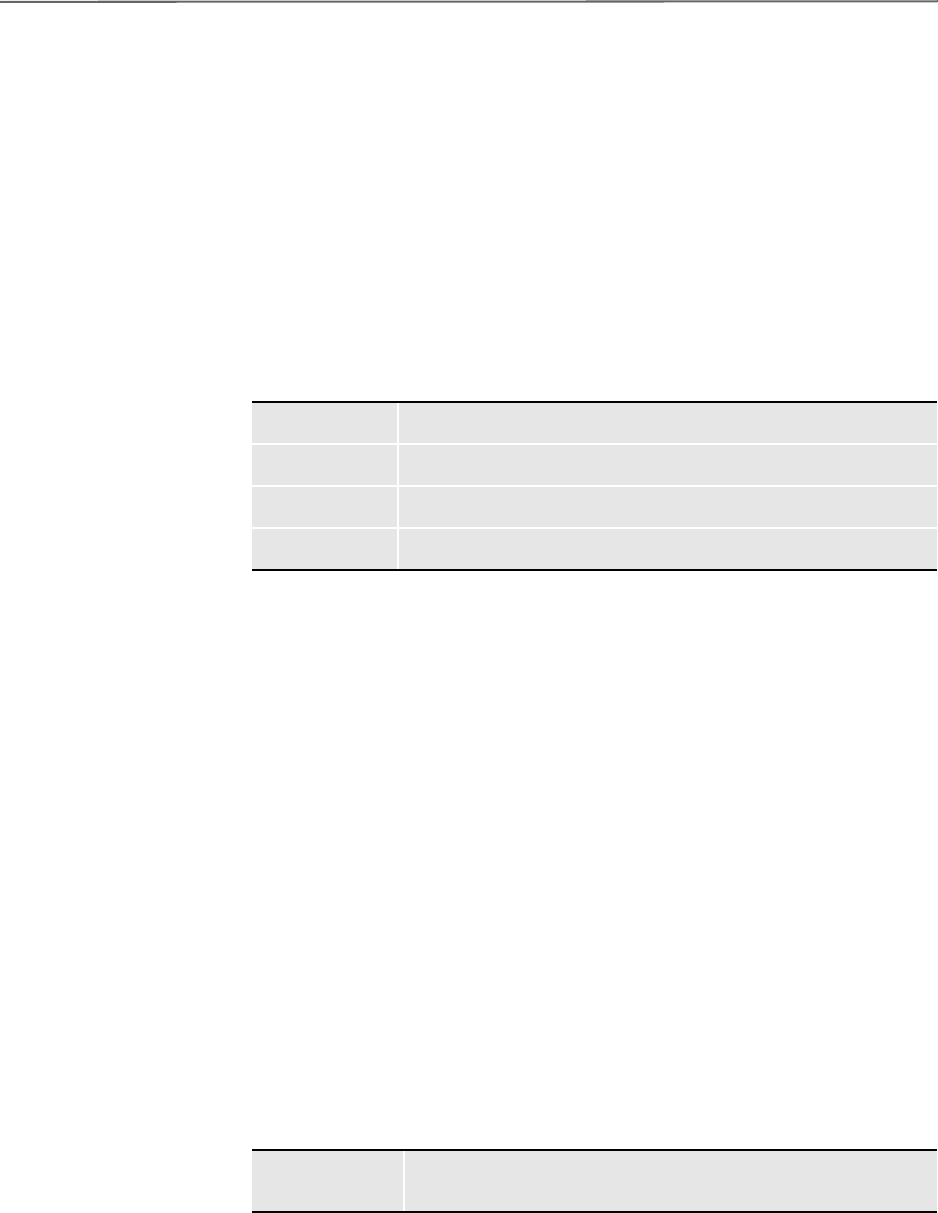
RPDProcessJob
94
RPDPROCES
S
JOB
Use this rule to get the XML tree from the DSI variable RPDJobTicket and write it to a
file written on the RUNF message. On the RUNR message, this rule waits for the job log
file. The job log file is located in the same directory and is loaded as an XML file on the
RUNR message.
Syntax
_DSIEXPORT DWORD _DSIAPI RPDProcessJob (DSIHANDLE hdsi,
char * pszParms,
ULONG ulMsg,
ULONG ulOptions)
Parameters
The Docupresentment variable RPDJobLog is created with the XML job log. The
RPDJobLog variable and the XML tree associated with it is destroyed in this rule on the
TERM message.
You can set the maximum amount of time to wait using the MaxWaitTime option. On
the RUNR message, this rule also removes the job log file from disk. You can also control
the removal of the job log file with the RPDProcessJob INI option. This option is for
debugging purposes only.
On DSI_MSGRUNF, this rule receives the XML document handle from the DSI variable
RPDJobTicket, and writes the XML tree into the JOBTICKET.XML file specified in the
Directory option.
On DSI_MSGRUNR, this rule waits until it receives the job log file (JOBLOG.XML),
from Documaker Server. You specify how long the system should wait using the
SleepingTime INI option. If the waiting time exceeds the limit, the rule stops Documaker
Server.
The system locates a job log placed in the directory specified in the Directory INI option.
The job log file is loaded into an XML document so the XML tree can be written out in
attachments. Whether the JOBLOG.XML file should be removed, depends on your entry
in the RPDProcessJob INI option.
Input Docupresentment
variables
Parameter Description
DSIHANDLE hInstance DSI instance handle
char * pszParms Pointer to rule parameter string unsigned long
ulMsg DSI_MSG, such as DSI_MSGRUNF unsigned long
ulOptions options
Variable Description
RPDJobTicket A job ticket variable. It returns the XML document handle for the job
ticket.
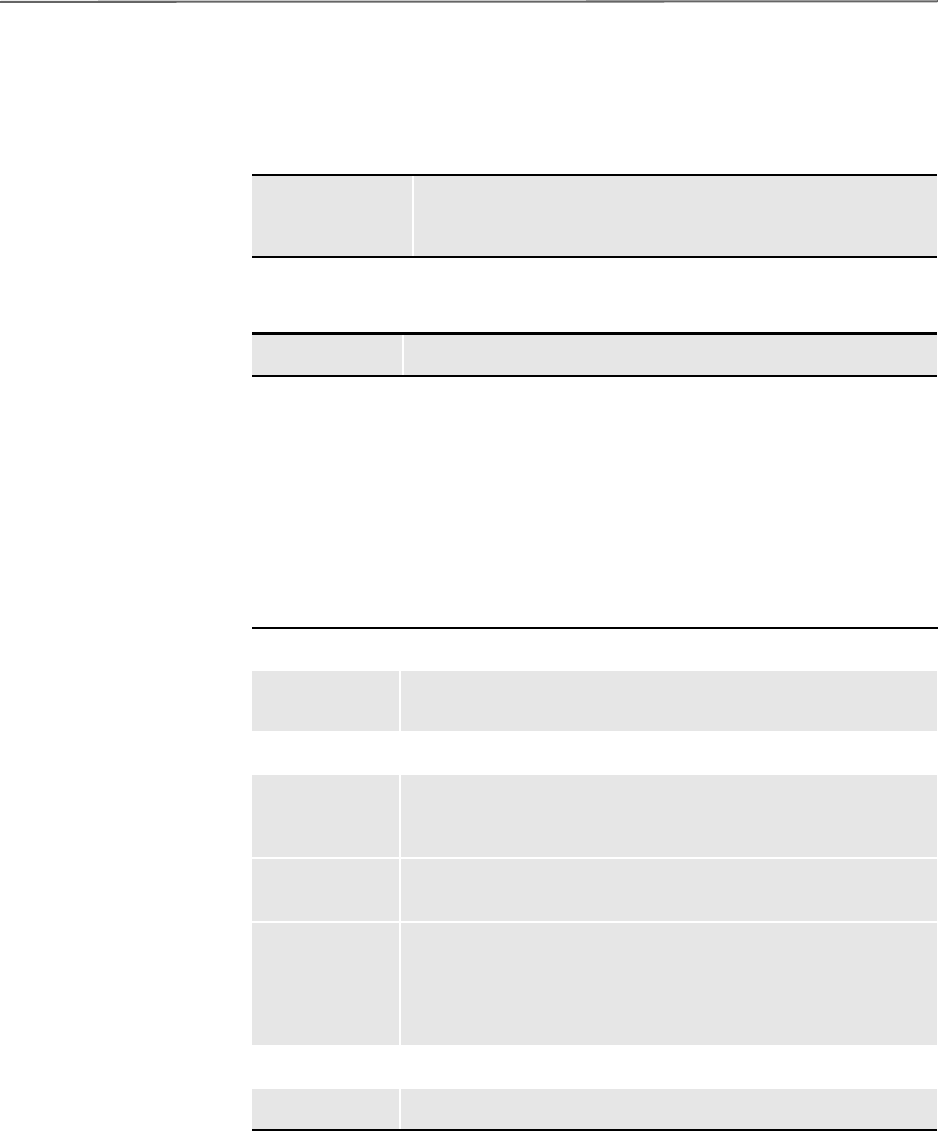
RPDProcessJob
95
Output files
Output DSI variables
INI options < RPDRunRP>
Directory =
< IDSServer >
MaxWaitTime =
SleepingTime =
WaitForStart =
< Debug >
RPDProcessJob =
Return values Success or failure.
File Description
JOBTICKET.XML A job ticket, which is a trigger for the Documaker Server process. It
contains request information and information used to update INI
options.
Variable Description
RPDJobLog The job log variable. Its value is an XML document handle for the job log.
Option Description
RPDRunRP control group
Directory Enter the path where you want to load and unload the JOBTICKET.XML
and JOBLOG.XML files.
IDSServer control group
MaxWaitTime Enter, in seconds, the maximum length of time you want
Docupresentment to wait for the JOBLOG.XML file. The default is 60
seconds.
SleepingTime
Enter the time, in milliseconds, to specify how often Docupresentment
should check for a job ticket. The default is 1000 (1 second).
WaitForStart
The length of time Docupresentment should wait for Documaker Server
to start before assuming Documaker Server is not running. The default is
10 seconds. Adjust this value if the Documaker Server requires more time
to start. If Documaker Server does not start within the allotted time, this
rule returns an error and stops processing.
Debug control group
RPDProcessJob Enter Yes to keep the JOBLOG.XML file. Enter No to remove it.
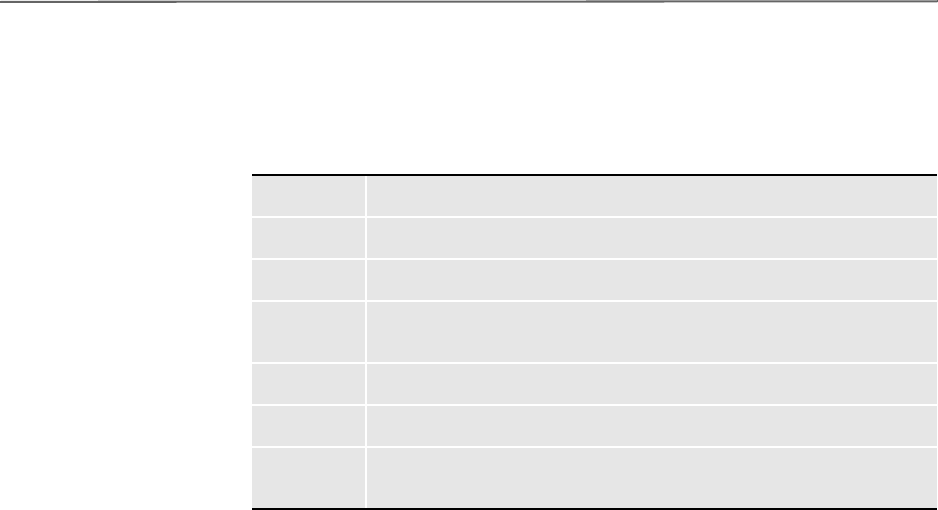
RPDProcessJob
96
Error messages
Message Description
RPD0003 Cannot create the DSI variable #VARIABLE,# at #LOCATION,#.
RPD0004 Cannot add the variable #VARIABLE,# to attachment at #LOCATION,#.
RPD0005 Cannot locate the DSI variable #VARIABLE,# at #LOCATION,#.
RPD0006 The DSI variable #VARIABLE,# does not contain valid data. Failed to
#LOCATION,#.
RPD0007 The file #FILENAME,# does not exist. Failed to #LOCATION,#.
RPD0008 The call by #LOCATION,# to API #APINAME,# failed.
RPD0009 The INI option #INIOPTION,# cannot be located in the group
#INIGROUP,#.
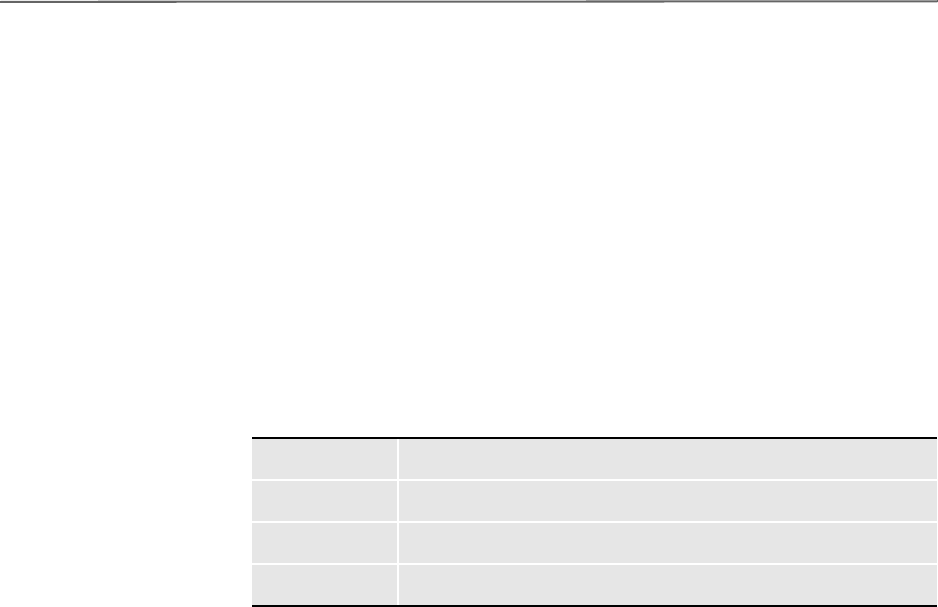
RPDStopRPRun
97
RPDSTOPRP
R
UN
Use this rule to stop Documaker Server. To do so, you need to execute the request type
STOP as described in the topic, Setting Up Docupresentment on page 80.
This rule is also used as an INIT/TERM rule and is registered on Docupresentment
under the ReqType:INI control group. You can use this rule to make sure that when
Docupresentment stops, Documaker Server also stops.
Syntax
_DSIEXPORT DWORD _DSIAPI RPDStopRPRun (DSIHANDLE hdsi,
char * pszParms,
ULONG ulMsg,
ULONG ulOptions)
Parameters
This rule receives the current process ID from the DSI variable RPDRunProcess and
then terminates Documaker Server.
Return values Success or failure.
Parameter Description
DSIHANDLE hInstance DSI instance handle
char * pszParms Pointer to rule parameter string unsigned long
ulMsg DSI_MSG, such as DSI_MSGRUNF unsigned long
ulOptions options

RULServerBaseProc
98
RULSERVER
BASEPROC
When you use Docupresentment to run Documaker Server, this rule replaces the
RULStandardBaseProc rule and is registered as RULServerJobProc.
Syntax
;RULServerBaseProc;;;
Insert this rule in the AFGJOB.JDT file as the first rule.
This rule looks for a job ticket file in the current working directory and loads it as an XML
file. All of the values on the XML tree are added to or updated in the INI options. After
Documaker Server finishes processing, the rule checks the status. If there are errors, it
returns a no more bases return code on the next iteration. This terminates Documaker
Server.
This rule uses a polling technique—sleep a while and check for the file existence— which
you can configure using INI options. The rule loads the job ticket and sets INI options
used when running subsequent rules. On the post message, this rule creates a job log XML
tree and writes it to disk. If any necessary values are missing from the XML job ticket,
these values are generated and changed (or appended) in the INI context.
On RP_PRE_PROC_B, this rule creates a semaphore (gendata), which makes it possible
for the Docupresentment RPDCheckRPRun rule to detect the status of Documaker
Server when the next processing job starts.
This rule stays in waiting status and checks for the existence of job ticket file
(JOBTICKET.XML) and the rpdrunrp semaphore. As soon as the job ticket file is
detected, this rule loads it onto the XML tree and uses the contents of the XML tree to
update INI options in memory.
If the rule does not detect the rpdrunrp semaphore, the rule terminates Documaker Server
by returning a msgNO_MORE_BASES return code. It also creates a GVM variable
(DSISERV) so the CUSInitPrint rule can re-initialize printers after the job process is
complete. This GVM variable can be used by any of the Documaker Server rules to detect
if the Documaker Server is running under Docupresentment, if different logic is needed.
On RP_POST_PROC_B, the rule writes out the job log file and removes the job ticket
file. If the RULServerJobPRoc option is set to Yes, a copy of the file will be obtained for
debugging purposes.
INI options Use these INI options with this rule:
< Data >
DataPath =
ExtrFile =
MsgFile =
ErrFile =
LogFile =
DBLogFile =
NAFile =
POLFile =
NewTrn =
< PrinterInfo >
Printer =
< Printer >
Port =
< Print_Batches >
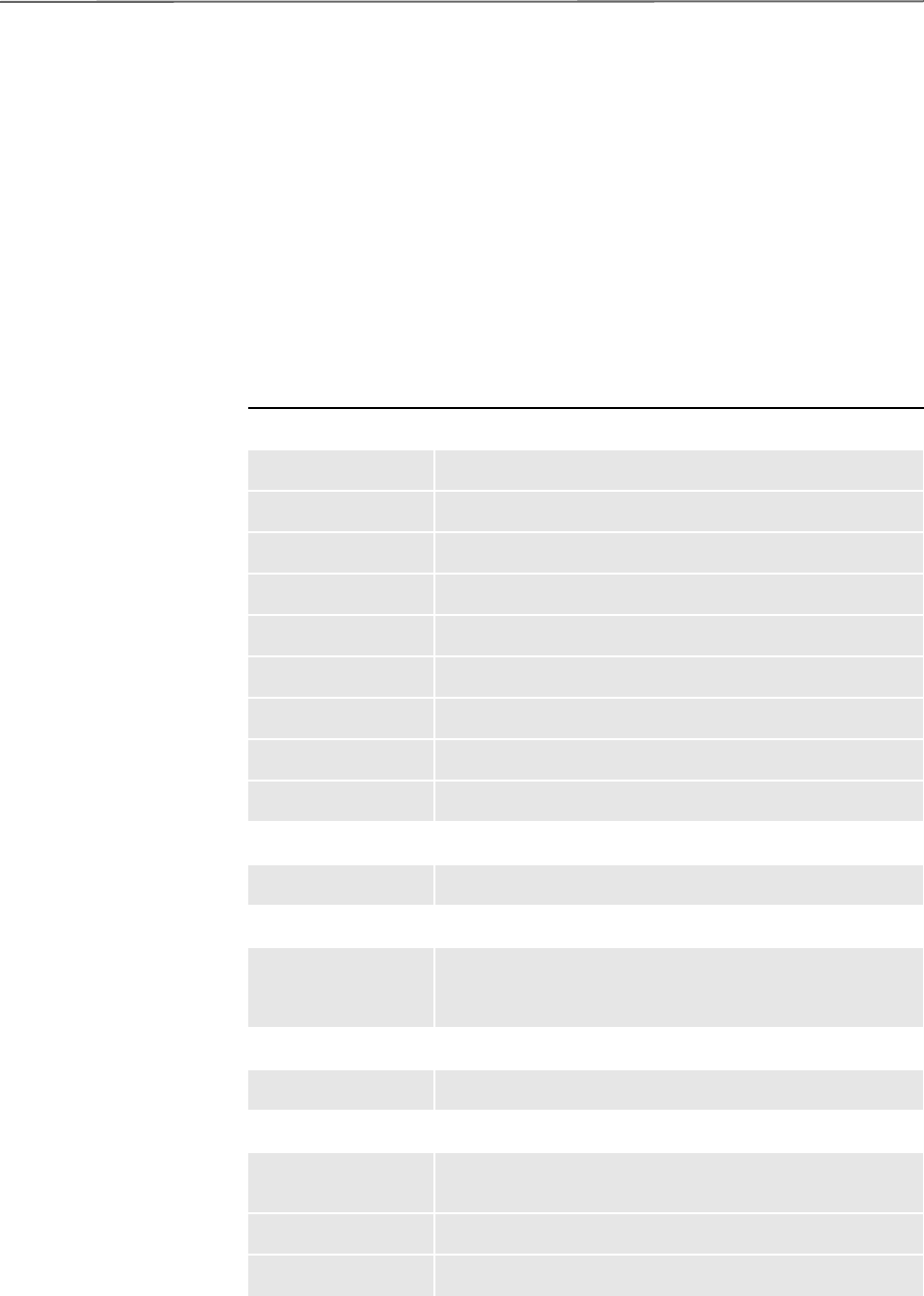
RULServerBaseProc
99
Batch1 = batch1.bch
< IDSServer >
SleepingTime =
GENSemaphoreName =
RPDSemaphoreName =
< Debug >
RULServerJobProc =
< PrintFormSet >
MultiFilePrint =
LogFileType =
LogFile =
Option Description
Data control group
DataPath Used as the default path if you omit PrintPath.
ExtrFile Enter the name and path of the extract file.
MsgFile Enter the name and path of the message file.
ErrFile Enter the name and path of the error file.
LogFile Enter the name and path of the log file.
DBLogFile Enter the name and path of the DB log file.
NAFile Enter the name and path of the NA file.
POLFile Enter the name and path of the POL file.
NewTrn Enter the name and path of the NewTrn file.
PrinterInfo
control group
Printer Enter the designated printers for print batches.
Printer control group
Port Enter the name of the print batch file for each designated printer.
Note the group name is defined by the printer option in the
PrinterInfo control group.
Print_Batches control group
Batch1 Then name of the batch file.
IDSServer control group
SleepingTime Enter the amount of time in milliseconds you want the system to wait
before it checks for a job ticket. The default is 1000 (1 second).
GENSemaphoreName Enter the name of the semaphore. The default is gendata.
RPDSemaphoreName Enter the name of the semaphore. The default is rpdrunrp.
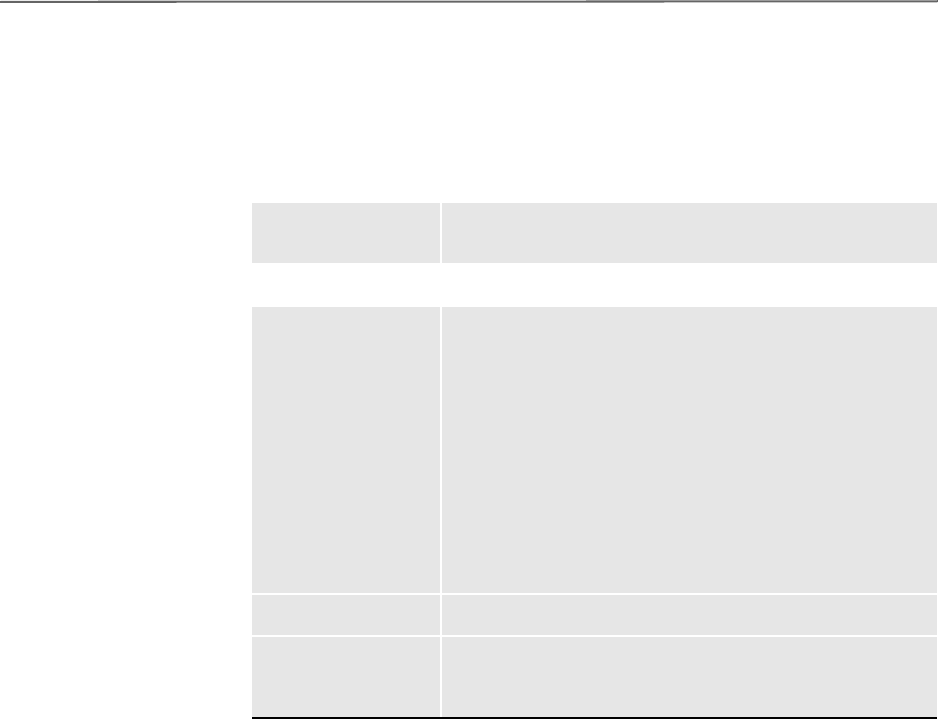
RULServerBaseProc
100
Input file JOBTICKET.XML
Output file JOBLOG.XML
Debug control group
RULServerJobProc Enter Yes if you want errors appended to the ErrFile, the LogTrace
file to record the trace, and the JobLog file to be renamed and saved.
PrintFormSet control group
MultiFilePrint Enter Yes to generate multiple print files which use 46-byte unique
names.
To identify which recipients are in which print batch, enter No or
omit this option.This causes the PrintFormSet rule to save the printer
for the print batch along with its recipient information. The
RULServerBaseProc rule then adds three new tags for each print
batch file and adds them to the JOBLOG.XML file.
For example, for the print batch file on PRINTER1, the system
creates these new tags:
<PRINTER1RECIP>Insured</PRINTER1RECIP>
<PRINTER1CODE>001</PRINTER1CODE>
<PRINTER1DESC>Insured Copy</PRINTER1DESC>
LogFileType Specify the type of print log file, such as XML or TEXT.
LogFile Enter the name and path of the print log file. If you omit the
extension, the system uses the LogFileType option to determine the
extension.
Option Description

ServerBaseProc
101
SERVERBASE
PROC
When you use Docupresentment to run Documaker Server, this rule replaces the
RULStandardJobProc rule.
Syntax
;ServerBaseProc;;;
Insert this rule in the AFGJOB.JDT file as the first rule.
This rule looks for a job ticket file in the current working directory and loads it as an XML
file. All of the values on the XML tree are added to or updated in the INI options. After
Documaker Server finishes processing, the rule checks the status. If there are errors, it
returns a no more bases return code on the next iteration. This terminates Documaker
Server.
This rule uses a polling technique—sleep a while and check for the file existence— which
you can configure using INI options. The rule loads the job ticket and sets INI options
used when running subsequent rules. On the post message, this rule creates a job log XML
tree and writes it to disk. If any necessary values are missing from the XML job ticket,
these values are generated and changed (or appended) in the INI context.
On RP_PRE_PROC_B, this rule creates a semaphore (gendata), which makes it possible
for the Docupresentment RPDCheckRPRun rule to detect the status of Documaker
Server when the next processing job starts.
This rule stays in waiting status and checks for the existence of job ticket file
(JOBTICKET.XML) and the rpdrunrp semaphore. As soon as the job ticket file is
detected, this rule loads it onto the XML tree and uses the contents of the XML tree to
update INI options in memory.
If the rule does not detect the rpdrunrp semaphore, the rule terminates Documaker Server
by returning a msgNO_MORE_BASES return code. It also creates a GVM variable
(DSISERV) so the CUSInitPrint rule can re-initialize printers after the job process is
complete. This GVM variable can be used by any of the Documaker Server rules to detect
if the Documaker Server is running under Docupresentment , if different logic is needed.
On RP_POST_PROC_B, the rule writes out the job log file and removes the job ticket
file. If the RULServerJobPRoc option is set to Yes, a copy of the file will be obtained for
debugging purposes.
INI options
< Data >
DataPath =
ExtrFile =
MsgFile =
ErrFile =
LogFile =
DBLogFile =
NAFile =
POLFile =
NewTrn =
< PrinterInfo >
Printer =
< Printer >
Port =
< Print_Batches >
Batch1 = batch1.bch
< IDSServer >
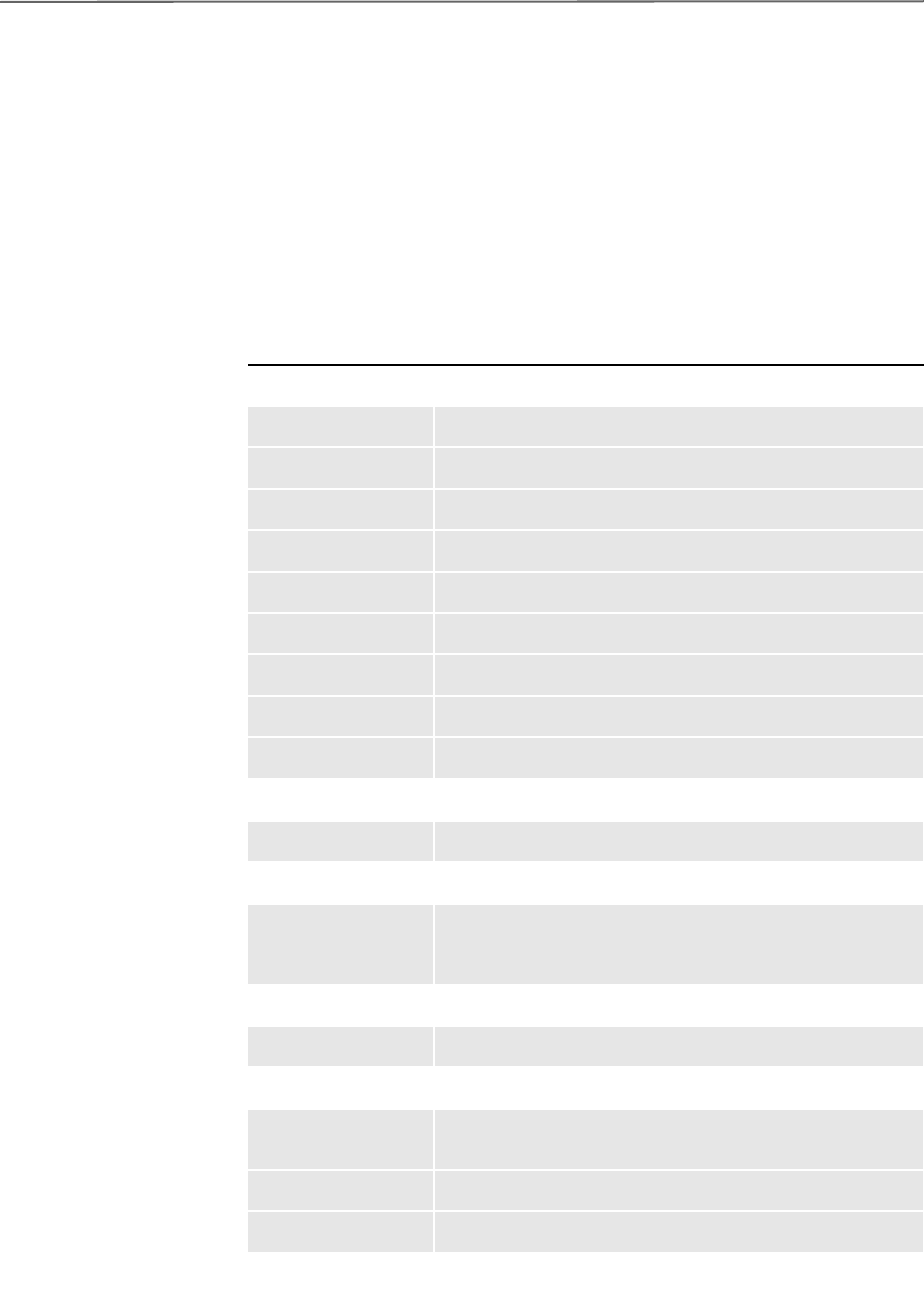
ServerBaseProc
102
SleepingTime =
GENSemaphoreName =
RPDSemaphoreName =
< Debug >
RULServerJobProc =
< PrintFormSet >
MultiFilePrint =
LogFileType =
LogFile =
Option Description
Data control group
DataPath Used as the default path if you omit PrintPath.
ExtrFile Enter the name and path of the extract file.
MsgFile Enter the name and path of the message file.
ErrFile Enter the name and path of the error file.
LogFile Enter the name and path of the log file.
DBLogFile Enter the name and path of the DB log file.
NAFile Enter the name and path of the NA file.
POLFile Enter the name and path of the POL file.
NewTrn Enter the name and path of the NewTrn file.
PrinterInfo
control group
Printer Enter the designated printers for print batches.
Printer control group
Port Enter the name of the print batch file for each designated printer.
Note the group name is defined by the printer option in the
PrinterInfo control group.
Print_Batches control group
Batch1 Then name of the batch file.
IDSServer control group
SleepingTime Enter the amount of time in milliseconds you want the system to wait
before it checks for a job ticket. The default is 1000 (1 second).
GENSemaphoreName Enter the name of the semaphore. The default is gendata.
RPDSemaphoreName Enter the name of the semaphore. The default is rpdrunrp.
Debug control group
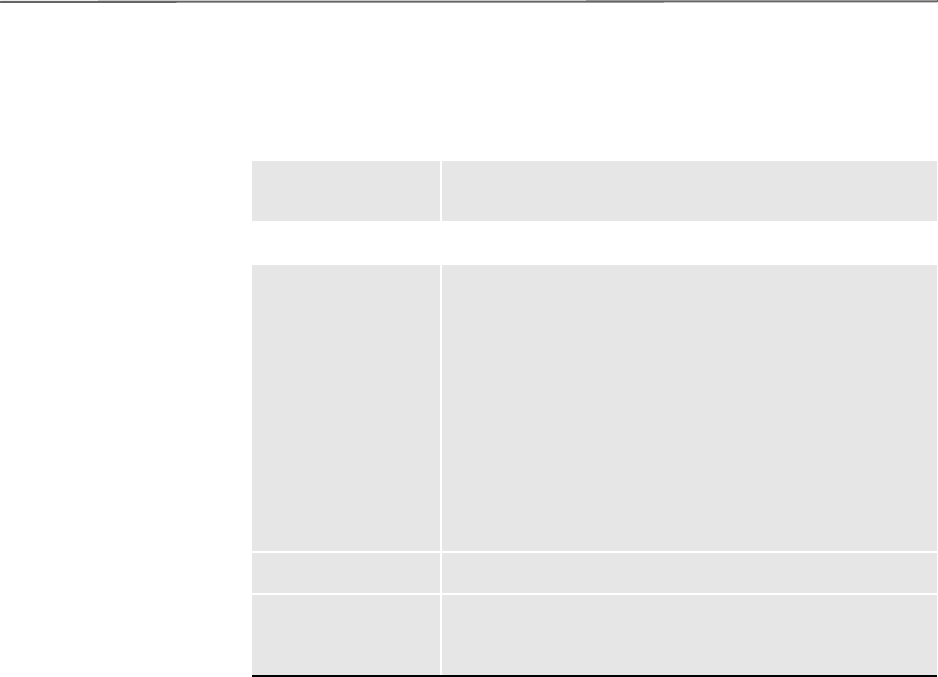
ServerBaseProc
103
Input file JOBTICKET.XML
Output file JOBLOG.XML
RULServerJobProc Enter Yes to get a copy of the job ticket file before the system
removes it.
PrintFormSet control group
MultiFilePrint Enter Yes to generate multiple print files which use 46-byte unique
names.
To identify which recipients are in which print batch, enter No or
omit this option.This causes the PrintFormSet rule to save the printer
for the print batch along with its recipient information. The
RULServerBaseProc rule then adds three new tags for each print
batch file and adds them to the JOBLOG.XML file.
For example, for the print batch file on PRINTER1, the system
creates these new tags:
<PRINTER1RECIP>Insured</PRINTER1RECIP>
<PRINTER1CODE>001</PRINTER1CODE>
<PRINTER1DESC>Insured Copy</PRINTER1DESC>
LogFileType Specify the type of print log file, such as XML or TEXT.
LogFile Enter the name and path of the print log file. If you omit the
extension, the system uses the LogFileType option to determine the
extension.
Option Description
104
Chapter 9
Frequently Asked
Questions
This chapter provides answers to commonly asked
questions.

105
Is XML the same as HTML?
No. XML is primarily a data exchange format and contains the data definitions and the
data. HTML can contain data and layout, however the definitions of the data are not
defined in tags (such as <author>) as they are in XML. These tags are defined in a schema.
To portray XML data in a page layout an XSL (Extensible Stylesheet Language) file is
required. This would contain information such as position, fonts, and so on.
The benefits of XML over HTML are that it is becoming an industry standard accepted
format for data transfer and it has a more defined structure. When an XML file has a valid
structure it is known as being well formed.
Who developed the XML parser?
The system uses the Expat XML parser, which was originally developed for Netscape. It
is a third-party library. You cannot plug in your own parser. Here are some links if you
want more information on Expat:
http://expat.sourceforge.net/
http://sourceforge.net/projects/expat/
What is an XML tag?
XML tags are created like HTML tags. There is a start tag and a closing tag.
<TAG>content</TAG>
The closing tag uses a slash after the opening bracket. The text between the brackets is
called an element. Keep in mind...
• Tags are case sensitive.
• Starting tags always need a closing tag.
• All tags must be nested properly.
• Comments can be used in the same way as HTML, for instance <!--Comments-->
Empty tags can be defined as <TAG/>. Empty tags do not require a closing tag.
What is an XML attribute?
Elements in XML can use attributes. The syntax is:
<element attribute-name=”attribute-value”>…</element>
The value of an attribute needs to be quoted, even if it contains only numbers. For
example:
<car color = “red”>Volvo</car>
The same entry could be defined without using attributes:
<car>
<brand>Volvo</brand>
<color>red</color>
</car>

106
What is a schema?
A schema is a map of the structure of the data. This is presented in an XML type layout.
Using the sample XML file on the previous page the schema for this would be as shown
below.
<?xml version="1.0" encoding="utf-8"?>
<xs:schema xmlns:xs="http://www.yourco.org//XMLSchema">
<xs:element name="book">
<xs:complexType>
<xs:sequence>
<xs:element name="title" type="xs:string"/>
<xs:element name="author" type="xs:string"/>
<xs:element name="character" minOccurs="0"
maxOccurs="unbounded">
<xs:complexType>
<xs:sequence>
<xs:element name="name" type="xs:string"/>
<xs:element name="friend-of" type="xs:string"
minOccurs="0"
maxOccurs="unbounded"/>
<xs:element name="since" type="xs:date"/>
<xs:element name="qualification" type="xs:string"/>
</xs:sequence>
</xs:complexType>
</xs:element>
</xs:sequence>
<xs:attribute name="isbn" type="xs:string"/>
</xs:complexType>
</xs:element>
</xs:schema>
What XML standards are accepted by Documaker and
Docupresentment applications?
XML standards are set and defined by the W3C organization (www.w3c.org). This is a
consortium of over 450 organizations that set and define common standards and
protocols in use on the World Wide Web. Documaker and Docupresentment applications
use the XML 1.0 standard and will support the following encoding:
•UTF-8
• ISO-8859-1
•US-ASCII
You should be able to use any of these encodings to pass information to
Docupresentment, DSI APIs or Documaker Server. Docupresentment sends back UTF-
8.
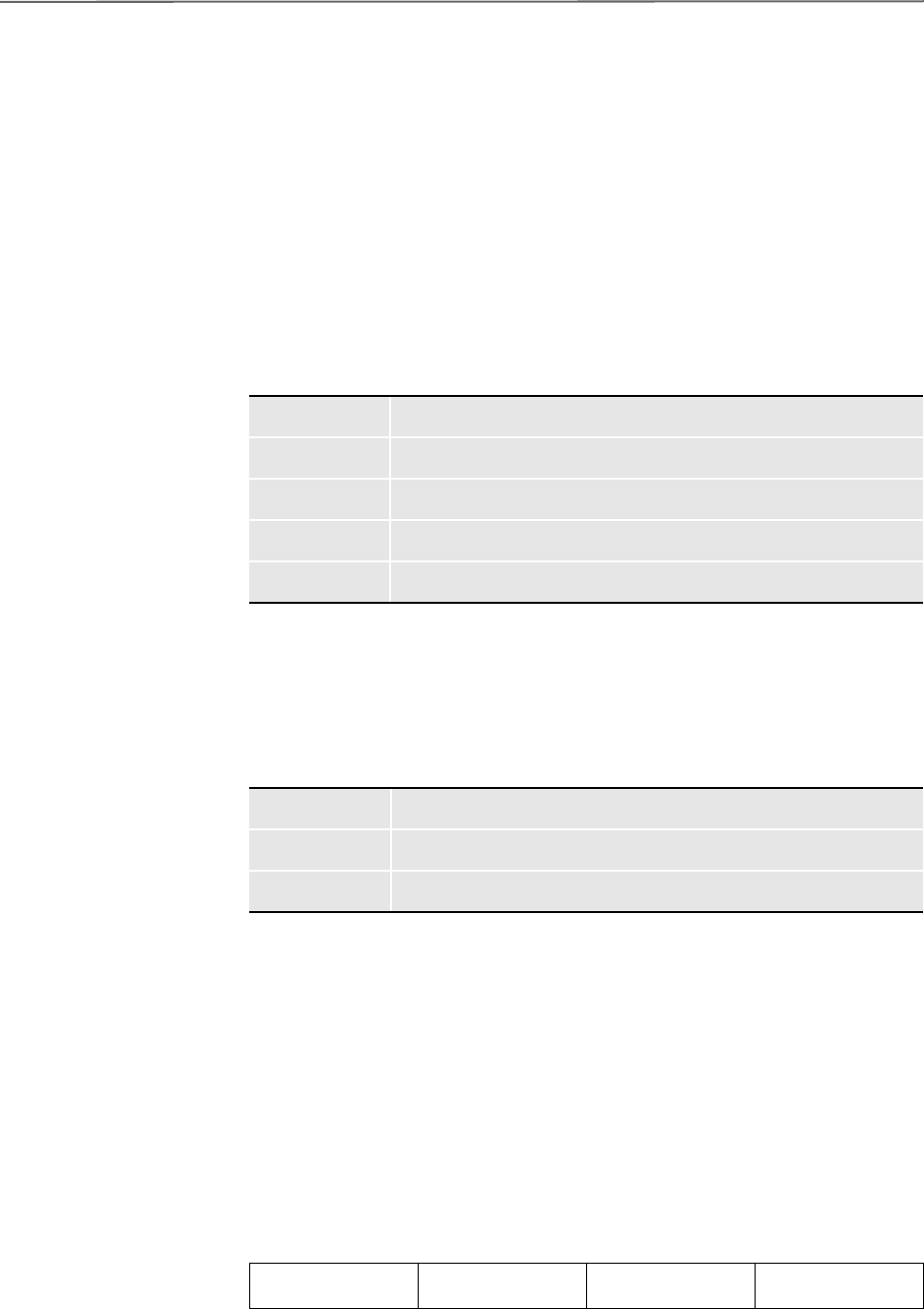
107
Are ampersands (&) and octothorpes (#) supported in XML
files?
Yes, however some characters must be defined as entity references or character references. For
instance, you can use octothorpes in XML files as shown here:
<message>Use #1 before using #2</message>
Entity references begin with an ampersand (&) and end with a semicolon (;). These are
predefined codes within the XML specification for commonly used characters. Here are
some examples:
Character references begin with an ampersand and an octothorpe (&#) and end with a
semicolon (;) . These are used for characters which are not commonly used and do not
already have entity references pre-defined.
Here are some examples:
Refer to the W3C (www.w3c.org) for more information on special characters.
What tag names cannot be used in XML?
There are a number of restrictions for tag names. These include:
• No tag names can start with xml.
• Tag names cannot start with underscores or numbers.
• Names cannot contain semicolons (:).
• There cannot be a space after the opening < character.
Reserved words are defined by the W3C. Some of the words that cannot be used include:
Character In XML
& &
“ "
‘ '
> >
< <
Character In XML
é é
í í
ü ü
If Typeswitch Item Node

108
For a full list of reserved words refer to the W3C (www.w3c.org).
How do you send an XML input file to Documaker?
You can use these two rules to send an XML file to Documaker:
• XMLFileExtract - Used when you point to a flat file which contains references to
multiple XML files. For example, this method can be used if the key information is
in the flat file and the triggering and variable data is in the XML file.
• UseXMLExtract - Used when you have one XML file containing all transactions.
See the Rules Reference for more information.
How do you export an XML file from Documaker
Workstation?
To configure the import and export capabilities of Documaker Workstation:
1 Open the FSISYS.INI file in the resource library for which you want to use export
files. You can use any text editor to open this file.
2 Locate the ExportFormats control group. Add the following line:
XML =09=;XM;XML Export;WXMW32->WXMExportXML
Here is an example, which assumes 09 is not already being used.
< ExportFormats >
09=;XM;XML Export;WXMW32->WXMExportXML
What are the Unicode capabilities of XML?
The Documaker and Docupresentment XML parser supports the following encodings:
UTF-8, ISO-8859-1, and US-ASCII. The input XML file must use one of these encodings
or should not specify an encoding at all. Here is an example of an XML header that
specifies UTF-8 encoding:
<?xml version="1.0" encoding="UTF-8" ?>
If you do not specify an encoding, the system uses an encoding of ISO-8859-1. You can
find more information on encoding standards in the Using Unicode Support manual
located at:
http://www.oracle.com/us/support/index.html
Element Attribute Comment Child
Text Processing-
instruction
ID Key

109
How do you set up Docupresentment to use XML?
If you are using Docupresentment as the message server, you must also add the INI
options shown below to let Documaker Workstation retrieve an archived record from
Docupresentment and load data into a form set before any data is entered by a user.
The archived record is retrieved using the Key1, Key2, and KeyID entered on the New
Form Set window. For this to happen, you must set up the following request type in the
DOCSERV.INI file for Docupresentment:
< ReqType:GetXML >
function = atcw32->ATCLogTransaction
function = atcw32->ATCLoadAttachment
function = atcw32->ATCUnloadAttachment
function = dprw32->DPRSetConfig
function = dprw32->DPRLocateOneRecord,Key1,Key2,KeyID
function = dprw32->DPRRetrieveFormset
function = dprw32->DPRPrint
function = dprw32->DPRProcessTemplates
function = atcw32->ATCSendFile, DOCC_XML, SENDBACKPAGE, TEXT
You can use any name for the archive library, as long as the same MRL name is used in
Documaker Workstation. You can set up this feature as an entry or import hook:
< AFEProcedures >
EntryFormset = WXMOS2->WXMEntryHookExtXMLLoad
or
< ImportFormats >
07=;XR;XML Import from IDS;WXMW32->WXMImportXMLArchive
If you set it up as an entry or import hook, you must also set up these INI options:
< XML_IMP_EXP >
DSIUseNTUserID =
DSIVars =
DSIIgnoreTimeoutError =
DSIAttachedVarFile =
DSIImportLevel =
DSITimeout =
DSIReqType =
DSIRecordDFD =
Option Description
DSIUseNTUserID Set this option to Yes to use the NT user ID. The default is No.
This gives you a way to pass the NT user ID in the queue instead
of the normal DMWS ID.
DSIVars Enter variable;value, where variable is the variable name and value is
its value. This lets you identify a constant list of variables to be
sent in the queue.
DSIIgnoreTimeoutError Enter Yes to continue processing if a timeout occurs. The default
is No. This gives you a way to ignore a timeout when waiting on
a return queue.
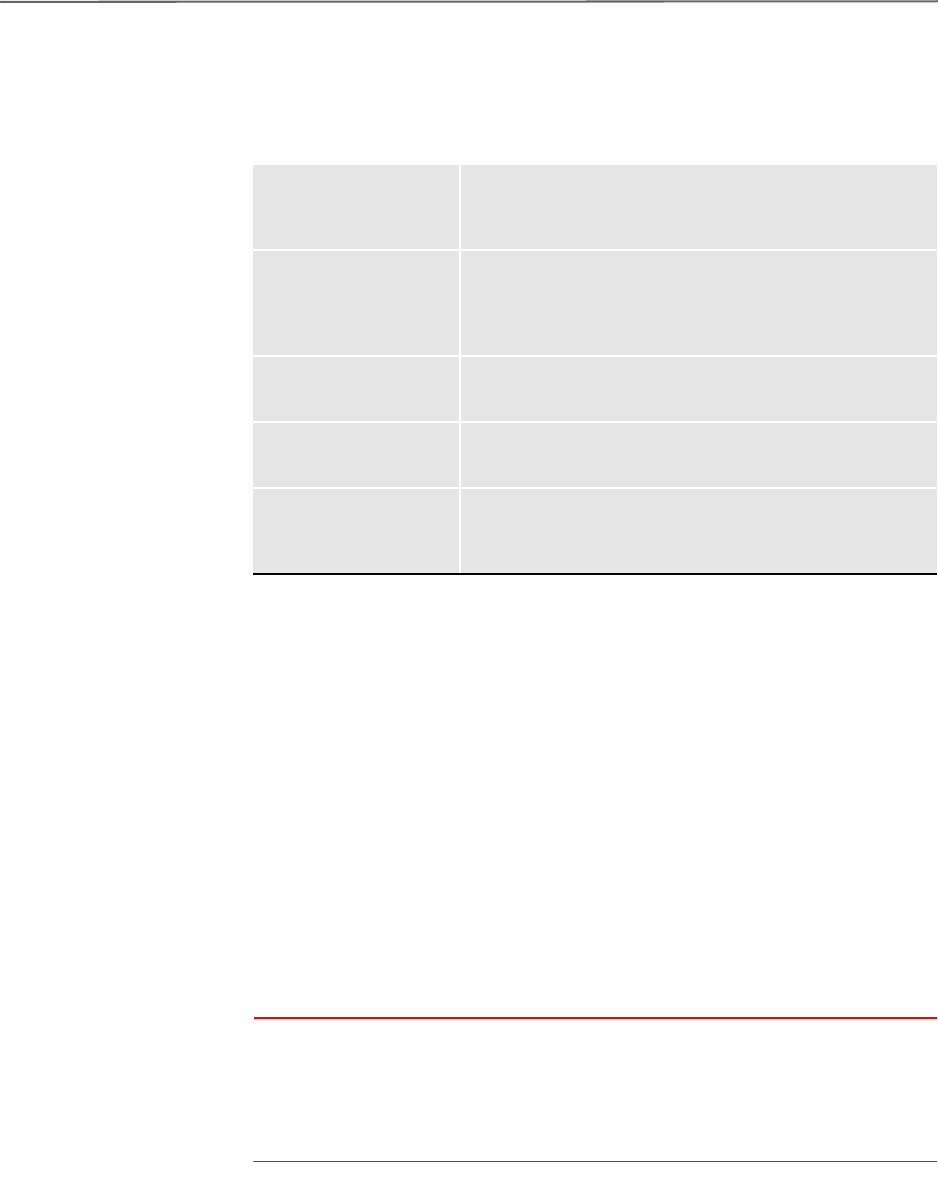
110
If the request for an XML file comes back with an error, as opposed to a time out,
Docupresentment displays an error message.
Can the SOAP standard be used with Docupresentment?
Docupresentment version 1.7 added a new open and documented queue control message
format based on XML and the evolving SOAP standard. The XML message format is
supported by the MSMQ and MQSeries queues, but is not supported by the generic queue
system that ships with the base Docupresentment product. The base product queues use
a proprietary message format.
You can find more information on the XML and SOAP on the W3C WEB site:
http://www.w3.org/
You can also find information about SOAP messages with attachments at:
http://www.w3.org/tr/soap-attachments
NOTE: Skywire Software will follow the evolving standards of SOAP and UDDI and
move toward universal messaging. The first version of the DSI message format
is based on XML and complies with many of the initial standards for SOAP
message envelopes. Later versions will move transactions and servers toward
fuller SOAP and UDDI compliance.
Skywire Software has used message queuing as a means of serializing requests and
responses between loosely coupled clients and servers without requiring one-to-one
connections. MQ Series has evolved into a standard program-to-program message bus for
integrating loosely coupled applications.
DSIAttachedVarFile The default is DOCC_XML. Set this option to the attachment
name if it differs from DOCC_XML. This gives you a way to
specify the variable name the XML file is attached to.
DSIImportLevel This option is typically used by programmers. Enter 2 if you
want the hook to operate on the FAP_MSGOPEN level. Enter
3 if you want it to operate on the FAP_MSGRUN level. The
default is 2.
DSITimeout Enter the number of milliseconds you want for the time-out. The
default is 60000 milliseconds or 60 seconds.
DSIReqType Enter the name of the request type of the message placed in the
queue. The default is GETXML.
DSIRecordDFD Enter the name of a DFD file. The system tries to match variable
fields sent in the request to field values in this DFD file. It then
attaches the DFD record to the end of the message.
Option Description

111
Docupresentment includes the client and server sides of the DSI (document server
interface) system and of the DQM (document queuing and messaging) system. These
interface layers help manage connections between multiple simultaneous clients and
multiple simultaneous servers. The DQM layer provides a logical abstract layer over the
physical process of accessing the queue, so one implementation can support and switch
between multiple queuing systems. This layer supports these models:
• A generic system that ships with Docupresentment (handled by DCBLIB)
• Support for Microsoft MSMQ (handled by MQLIB)
• Support for IBM MQ Series (handled by QSRLIB)
The DSI system provides a logical abstract layer over the physical process of assembling,
delivering, and parsing of a message, so the initiator of the message does not have to know
the physical format of the message, and is insulated from internal software changes to the
message format between product versions.
For instance, you can use the DSI messaging client with Documaker Workstation so
Documaker Workstation can work with
• External systems via either MQ Series or MSMQ messaging middleware.
• Docupresentment as a bridge to a legacy system to retrieve data for import.
The first ability means second is optional. You can also use your own internal programs
and interface using MQSeries.
The advantage of having a logical abstract layer is that it lets you deploy applications for
different message queuing systems without requiring program changes. Only minimal
setup changes are required to test or deploy the same application with a different queuing
system. By abstracting the message format, applications are insulated from internal
changes to the message format and can use the Skywire Software APIs to correctly
assemble or disassemble messages.
The disadvantage of message format abstraction is that non-Skywire Software
applications might be required to use Skywire Software APIs to communicate with
Skywire Software applications.
On some platforms, it may not be practical to invoke these APIs. The proprietary nature
of the original message format further complicates the issue.
If you are integrating with Docupresentment as the server, the message format
documentation is not necessary. If, however, you are integrating with another application,
the message format may be needed if you do not use Docupresentment APIs and you can
communicate via MQSeries.
For additional information on SOAP and Docupresentment, see the Docupresentment
Guide.
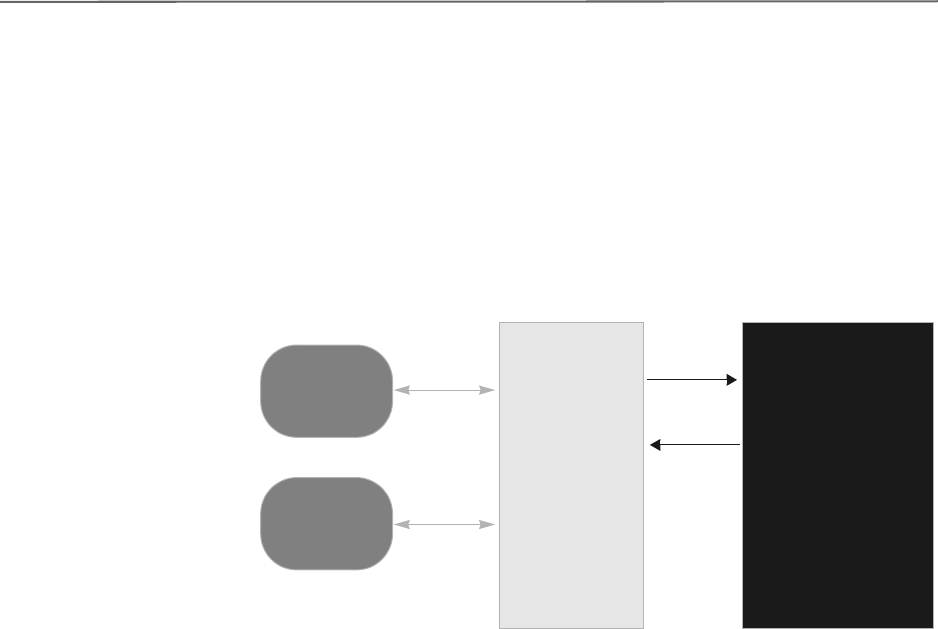
112
How can Docupresentment run Documaker using XML job-
tickets?
You can set up Docupresentment to run Documaker as a subordinate process. Web
clients communicate with Docupresentment using queues. Docupresentment
communicates with Documaker via XML files called job tickets
and job logs.
This diagram illustrates the process:
Docupresentment can start or stop Documaker as needed, without user interaction. One
Docupresentment session controls one Documaker process. You can, however,
implement multiple Docupresentment sessions and have multiple Documaker processes
as well. Keep in mind these limitations:
• You can only run Documaker in single step mode.
• You must run Documaker on Windows NT, Windows XP, or Windows 2000.
• Different resource setups for Documaker are supported, but Documaker processing
restarts if resources are changed, eliminating the performance benefits. This should
not be a problem because it is unlikely multiple Documaker setups will be used with
a single Docupresentment implementation. You can, however, experience problems
testing a system with multiple setups.
• During processing, some INI options can be changed by the client. Since some
Documaker rules use static variables and store INI values in memory, it is possible
that a client will be unable to change an INI option if those Documaker rules are
used. To handle these situations, you must restart Documaker.
For more information, see the Docupresentment Guide and the Docupresentment SDK
Reference.
Can you use DAL with XML files?
You can use DAL XML API functions to let Documaker applications access specified
XML documents and retrieve XML data via a DAL script. There are two scenarios in
which you would use DAL XML API functions:
Web Client
Docupresentment
Documaker
Server
(GenData)
VB\COM\
Java Client
XML Job
Ticket
XML
Job Log

113
Scenario 1 A Documaker program, such as GenData, loads an XML document and extracts the
XML tree at the transaction level using the XMLFileExtract rule. This rule creates a list
type DAL variable with a default name of
%extract
and pushes it onto the DAL stack.
Then you can call other XML API functions in a DAL script to access the XML tree and
extract XML data.
Here are examples of the form set and image rules you would add and a DAL script that
would call the XML API functions.
Add this in the AFGJOB.JDT file:
;XMLFileExtract;2;File=.\deflib\test.xml
The rule loads the XML file and creates a list type DAL variable to pass the XML tree to
the XML API function.
Add this in your DDT file:
;0;0;DALXMLSCRIPT;0;9;DALXMLSCRIPT;0;9;;DAL;Call("TEST.DAL");N;N;N;
N;4792;19444;11010;
TEST.DAL
is the name of the DAL script file. DALXMLSCRIPT is the name of the
variable field in the FAP file.
Here is an example of the DAL script:
%listH=XMLFind(%extract, “Forms”, “Form”);
#rc=XMLFirst(%listH);
if #rc=0
return(“Failed to XMLFirst”);
end
aStr=XMLGetCurText(%listH);
return(aStr);
%listH denotes a list type DAL variable. #rc denotes an integer type
DAL variable.
aStr denotes a string type DAL variable.
Scenario 2 You can also load the XML document and create the XML tree at a specific field by calling
the LoadXMLList rule from a DAL script. You must set the calling procedure in the DDT
file as shown in Scenario 1.
Here is an example of DAL script file:
%xListH=LoadXMLList("test.xml");
%listH=XMLFind(%xListH,"Forms","Form/@*");
aStr=XMLNthAttrValue(%listH,2);
#rc=DestroyList(%xListH);
return(aStr);
For more information, see the DAL Reference.

114
Are triggers set the same way when you use XML files in
Documaker?
No, triggers are set differently when you use XML. The XML file should contain the
names of the forms to trigger.
If the FORM.DAT has all recipients set to zero copy counts, then those forms will be
removed from the form set. The recipient copy count should be set in the FORM.DAT
file. For example, based on
<car>
<driver>Tom<driver/>
<driver>Tim<driver/>
<car/>
<car>
<driver>Sally<driver/>
<car/>
You can do simple triggering based on the existence of a node. For example, this
/child::car
would trigger a form if car
is a child of the root node. You could make it trigger two of the
same forms because there are two cars.
The system supports value matching. So you can do the following:
/child::car[child::driver="Tom"]
Or, you can use the RecipIf rule to trigger an image with custom rule parameters, as
shown in this example:
A={!/child::car/child::driver 1,7}::if
(A='Tom ')::return("^1^")::end::;
If there is such a value in that element in the XML file, the image would trigger. For this
to work, define the offset of the variable attribute as 1 and the length of the data you want
to compare.
For more information, see the Documaker Administration Guide.
Can you use the Concat rule with XML?
You cannot use the Concat rule with XML files. Instead, use a DAL script. Here is an
example:
;0;0;CITYSTATEZIP;0;30;CITYSTATEZIP;0;30;;DAL;csz=@("ADDR-CITY")&',
'&@("ADDR-STATE")&' '&@("ADDR-ZIP")::Return
csz)::;;N;N;N;N;135;1972;16010;
See the DAL Reference for more information.
Can you use the SetAddr rule with XML?
You cannot use the SetAddr rules with XML files. Instead, use the RemoveWhiteSpace
rule to remove the white space from between fields. This rule works similarly to the
SetAddr rules, but is not address specific.
See the Rules Reference for more information.

115
Can you use the PrintIf rule with XML?
You cannot use the PrintIf rule with XML files. Instead, use a DAL script. Here is an
example:
;0;0;COMPANY;0;8;COMPANY;0;8;;DAL;if (@("PRINTIFSUB")="A")THEN
ANSWER1="Accident":: elseif (@("PRINTIFSUB")="C")THEN ANSWER1=
"Casualty"::end::return (ANSWER1)::;N;N;N;N;11292;919;12010;
See the DAL Reference for more information.
How does Documaker deal with empty tags in XML files?
Documaker and Docupresentment use the same XML loading routine. The XML loading
routine does not care whether you define all of the fields that might occur in a FAP file,
nor does it care whether if field data is missing, so no error is produced when you load an
XML file with missing field tags.
Just make sure the XML file you are loading is valid according to Documaker’s XML
standards.
If, however, you export the form set, you may get similar same results — if the FAP files
were loaded, the empty fields are written into the XML file with no data. If the FAP files
are not loaded, the system only includes those fields created during the run — which is
usually limited to just the fields with data.
The entries you can use to indicate empty tags are:
<SingleTag />
<EmptyTags></EmptyTags>
<SpacedOut > </SpacedOut>
<NulEval ># \NoSuchObject #</NulEval>
How are overflows defined?
When you define the SetOvFlow rule in the AFGJOB.JDT file, use the XML tag shown
here:
;SetOvFlwSym;1;covsym,xml,1;
When you define the IncOvSym rule in the DDT file, use the XML tag, shown here:
;IncOvSym;covsym,xml;
If an image contains XML data on the same level, use the !descendant parameter instead of
XPath:
<name>
<fielda>
<fieldb>xxxxx<\fieldb>
<fieldc>yyyyy<\fieldc>
<\fielda>
<\name>
The data for <fieldb> and <fieldc> are on the same level so you cannot use an XPath of:
!\name\fielda\fieldb[**ovsym**]
!\name\fielda\fieldc[**ovsym**]
You would have to use:

116
!descendant::fieldb[**ovsym**]
!descendant::fieldc[**ovsym**]
How do you handle overflow within overflow using XML?
Use the SetRecipFromImage rule with the XML overflow variable to get this to work.
Image A (which overflows will trigger image B using the SetRecipFromImage rule)
Image B (which overflows will trigger image C using the SetRecipFromImage rule)
and so on...
See the Rules Reference for more information.
Can you use the LoadExtractData and UseXMLExtract rules
in single-step mode?
When running in single- or two-step mode, omit the LoadExtractData rule. Including it
makes the GenData program enter a processing loop.
You can use the UseXMLExtract rule in single-step, two-step, or multi-step mode. When
you use this rule in multi-step mode, place it after the LoadExtractData rule. In single-step
or two-step mode, place it after the NoGenTrnTransactionProc rule.
You do not have to use the UseXMLExtract rule with the LoadExtractData rule when
running in single-step or two-step mode.
Which version of XML does Transall support?
XML version 1.0 is compliant with Transall. Transall version 10.2 (20011101) supports
both reading and writing XML files.
How do you write HTML pages to output XML via
Docupresentment?
Modify the RECIPS.HTM page to add an XML option to the drop-down box on the
page. Here is an example:
<BR>
<B> Output file type:</B>
<SELECT NAME="PRTTYPE">
<OPTION> PDF
<OPTION> XML
</SELECT>
<BR>
Then modify the DAP.INI file to make sure the PrtType control group is set to XML and
not PDF, as follows:
< Printer >
PrtType = XML
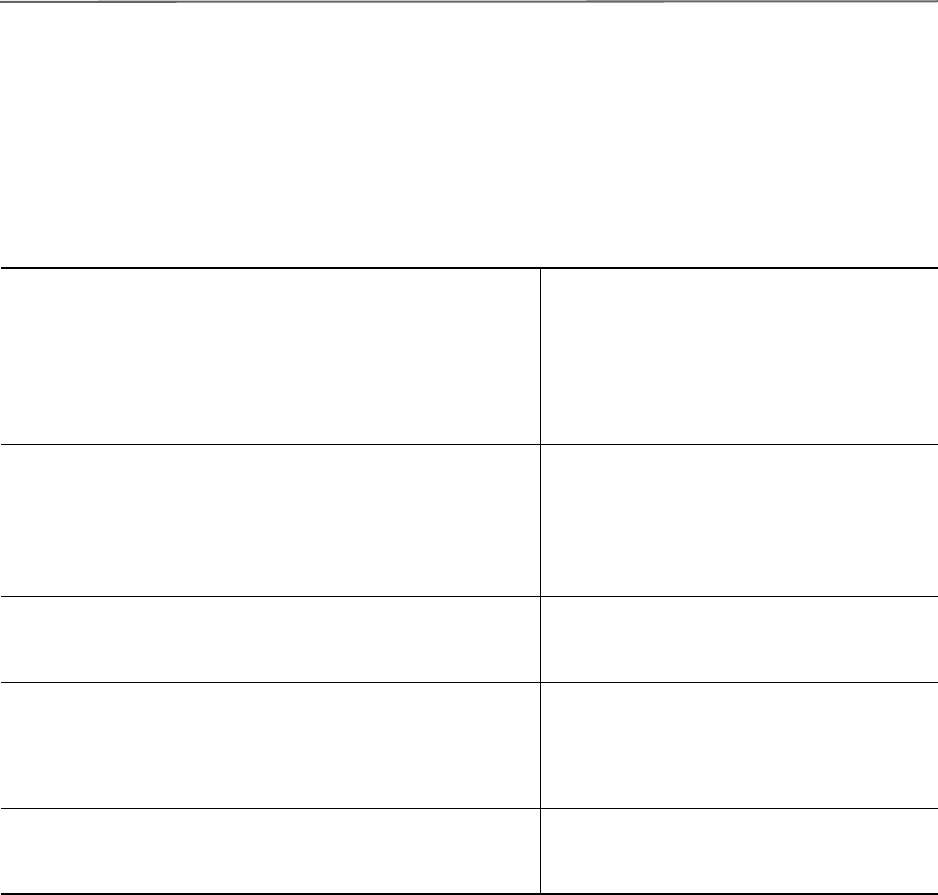
117
What are some common XML-related errors?
Here is a list of common errors reported to Oracle Support concerning XML,
Documaker, and Docupresentment:
Problem Solution
I get an error message when trying the InitQueue method of the
DSICoAPI library. In the trace file this information is reported:
1. Mon Nov 12 08:34:13 2001 DUTLoadLibrary error.
Cannot load DCBW32.DLL (DCBW32.DLL).Error:
2. Mon Nov 12 08:34:13 2001 * DUTDefErrorExit
3. Mon Nov 12 08:34:13 2001 * Cannot QueryProcAddr
<0> <0> DCBSysInit
This is caused by the security settings on the server
sharing.
Revise these settings and provide users with access to
all areas with content.
I have a display problem in the Blackline version. The system is not
correctly merging the XML file with the style sheet
(TEXTMERGE.XSL).
Some features were added to the style sheet that
require MSXML 3.0 to work properly.
After installing MSXML 3.0, which installed the
MSXML3.DLL, and un-registering the
MSXML.DLL, the Blackline feature should work
properly.
XML files are delete periodically, before another process can pick them
up.
For XML, you have to include TimeOut option in
the HTMLFileCache control group. Enter the
timeout value in seconds.
I need to write a DAL script to do conditional triggering using native
XML.
Use the UseXMLExtract or XMLFileExtract rule to
load the XML file and extract the XML tree at the
transaction level. As part of this process, the system
creates a list type DAL variable with a default name
of %extract.
The XML data does not get mapped if the value within the element starts
on a new line with leading spaces.
A single exclamation mark (!) removes the leading
white space. To keep the space, use two exclamation
marks (!!).
